Bangor is the oldest city in Wales, and in 2025 it celebrated its 1,500th anniversary. Although not a large city compared to others you can find in the UK, it boasts a lively atmosphere thanks to its university community and a good selection of independent shops, cosy cafés, and local galleries. But for me, it’s the location that sets it apart – nestled between the serene waters of the Menai Strait and the stunning mountains of Eryri National Park (Snowdonia).
I sometimes read negative opinions about Bangor, and it’s true that there are other places in North Wales that more easily make it to the top of visitors’ to-do lists, such as Llandudno, Conwy or Caernarfon. However, I personally found it quite an interesting place to visit, not only because of the history and culture it embodies, but also because it serves as a great base for exploring some of the best natural attractions North Wales has to offer. It’s also very well connected by train and bus.
I think Bangor deserves a chance, and in this article, I’ll highlight the many things you can do here — which are not easy to fit into just ten!
See Bangor on
Google Maps | Apple Maps
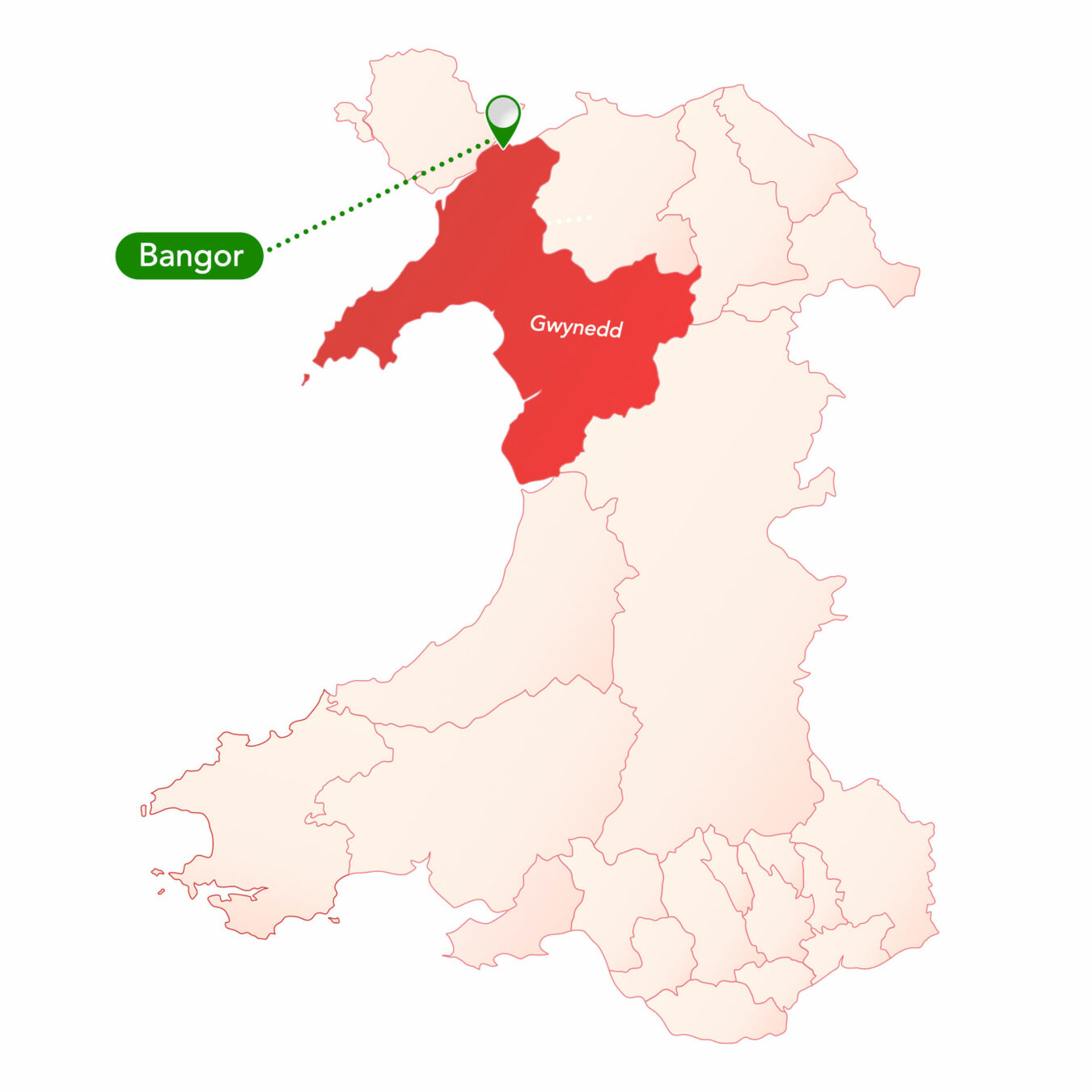
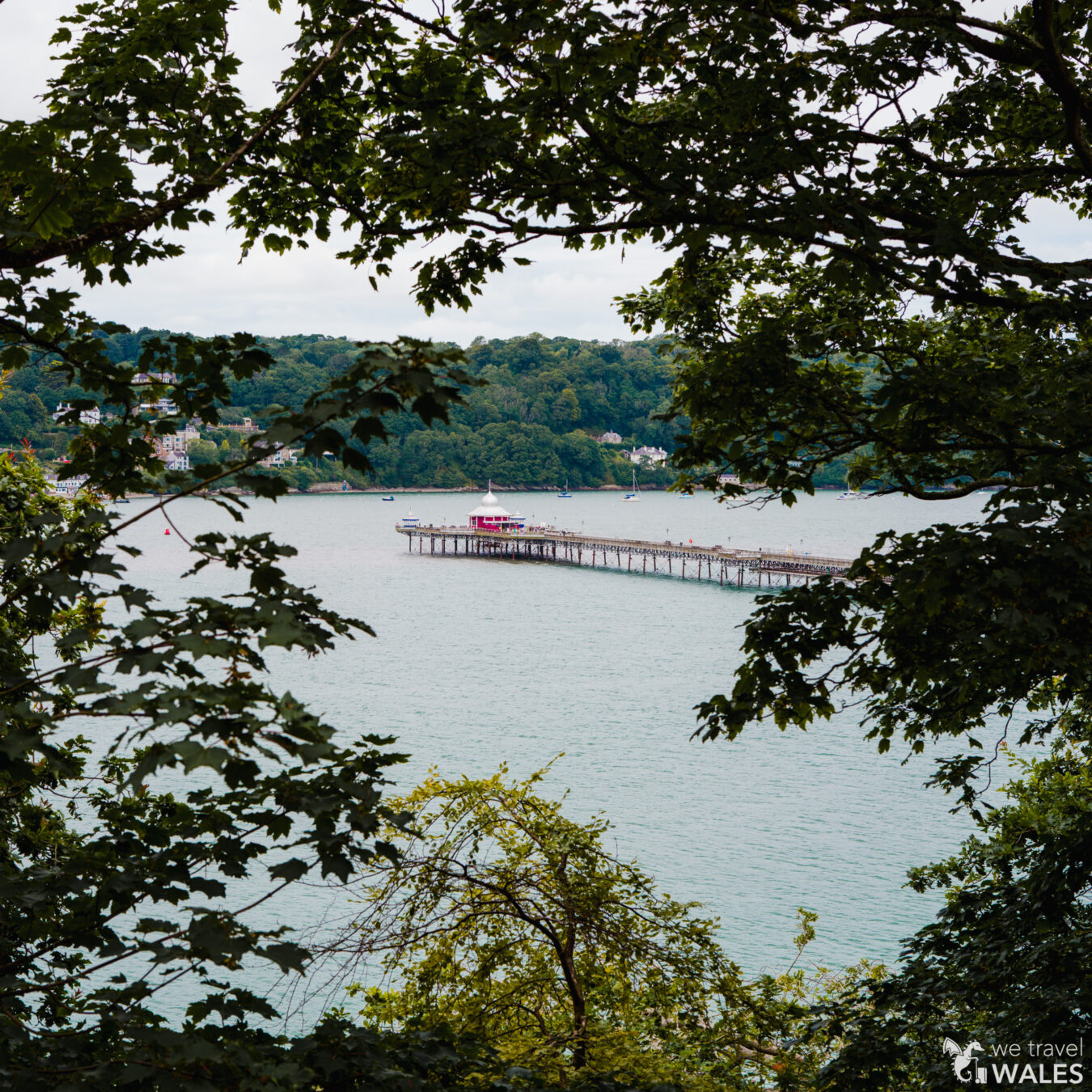
Photo Credits
Cover photo of Bangor University, as well as photos of Menai Bridge, Britannia Bridge, speed boat and windsurf on the Menai Strait, and Zip World Velocity are from the Wales Asset database. © Hawlfraint y Goron / © Crown copyright (2022) Cymru Wales. Additional credits can be found on individual photos.
All the other remaining photos are property of Mathieu Gasquet / We Travel Wales.
1. Walk around the City
Bangor University, founded in 1884, is a good place to start your visit. Walk up to the paved terrace for a lovely panoramic view of the city. You can also visit the library, which is open to the public, and get a glimpse of the interior of the historic main building.
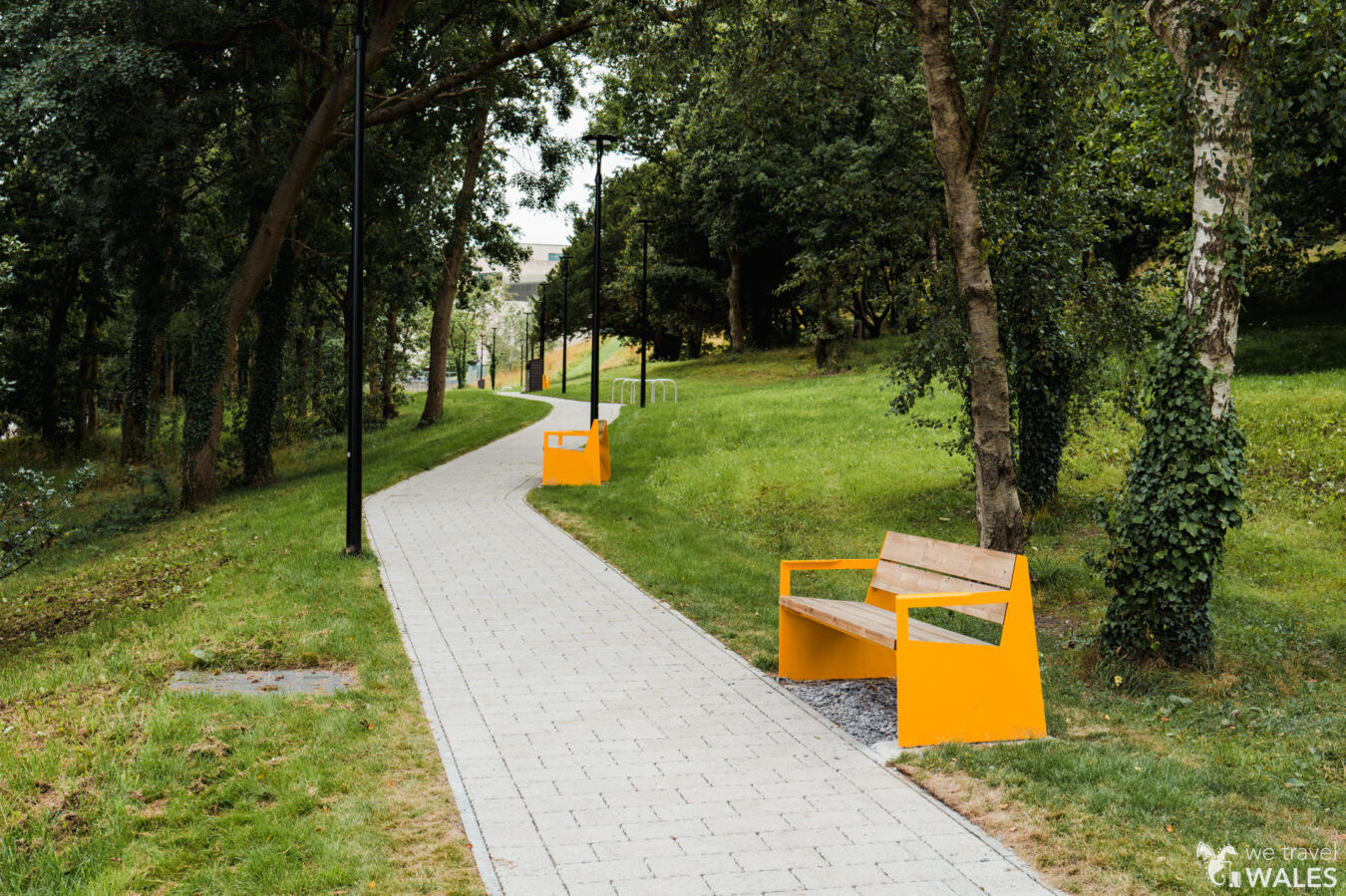
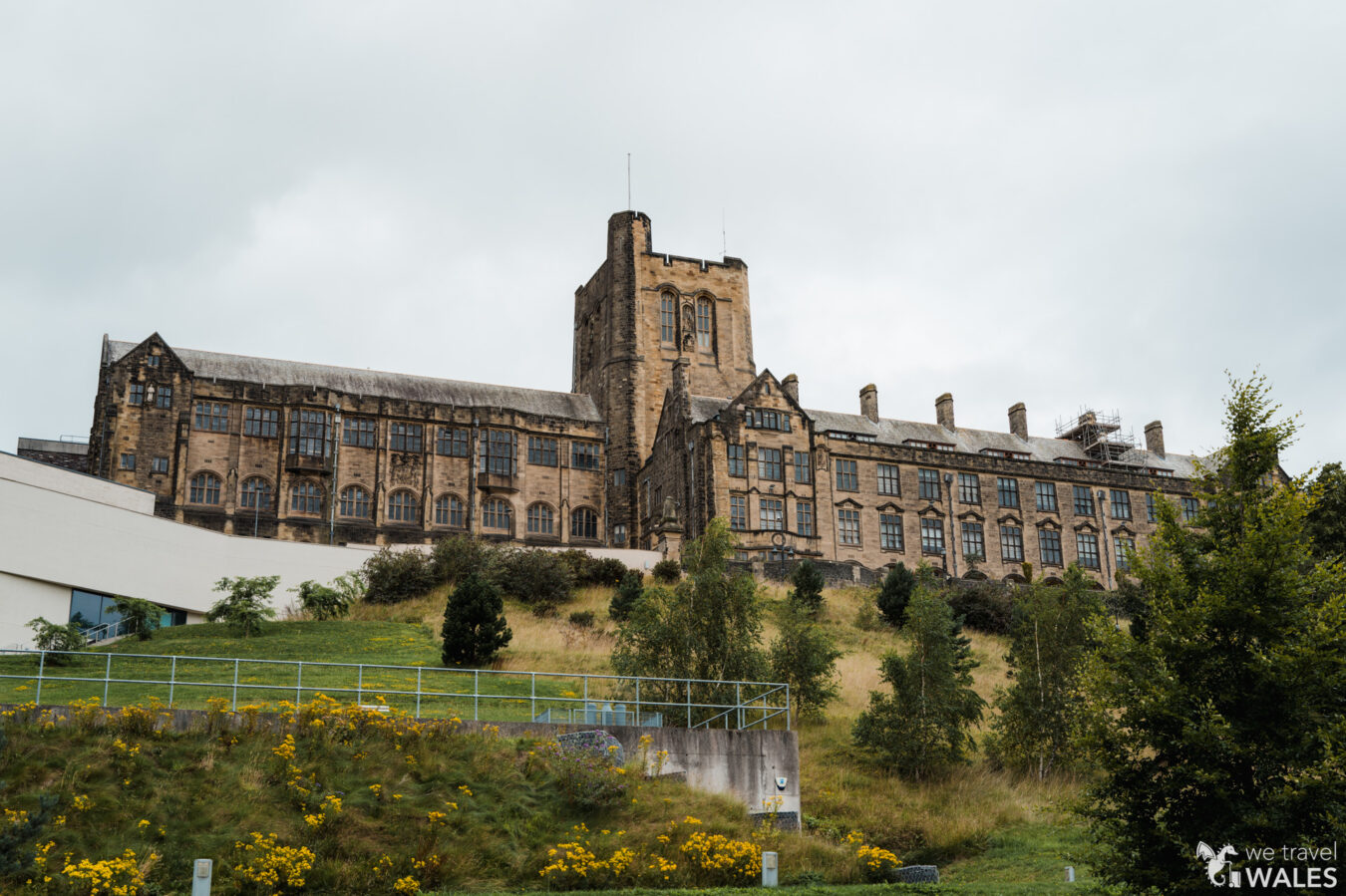
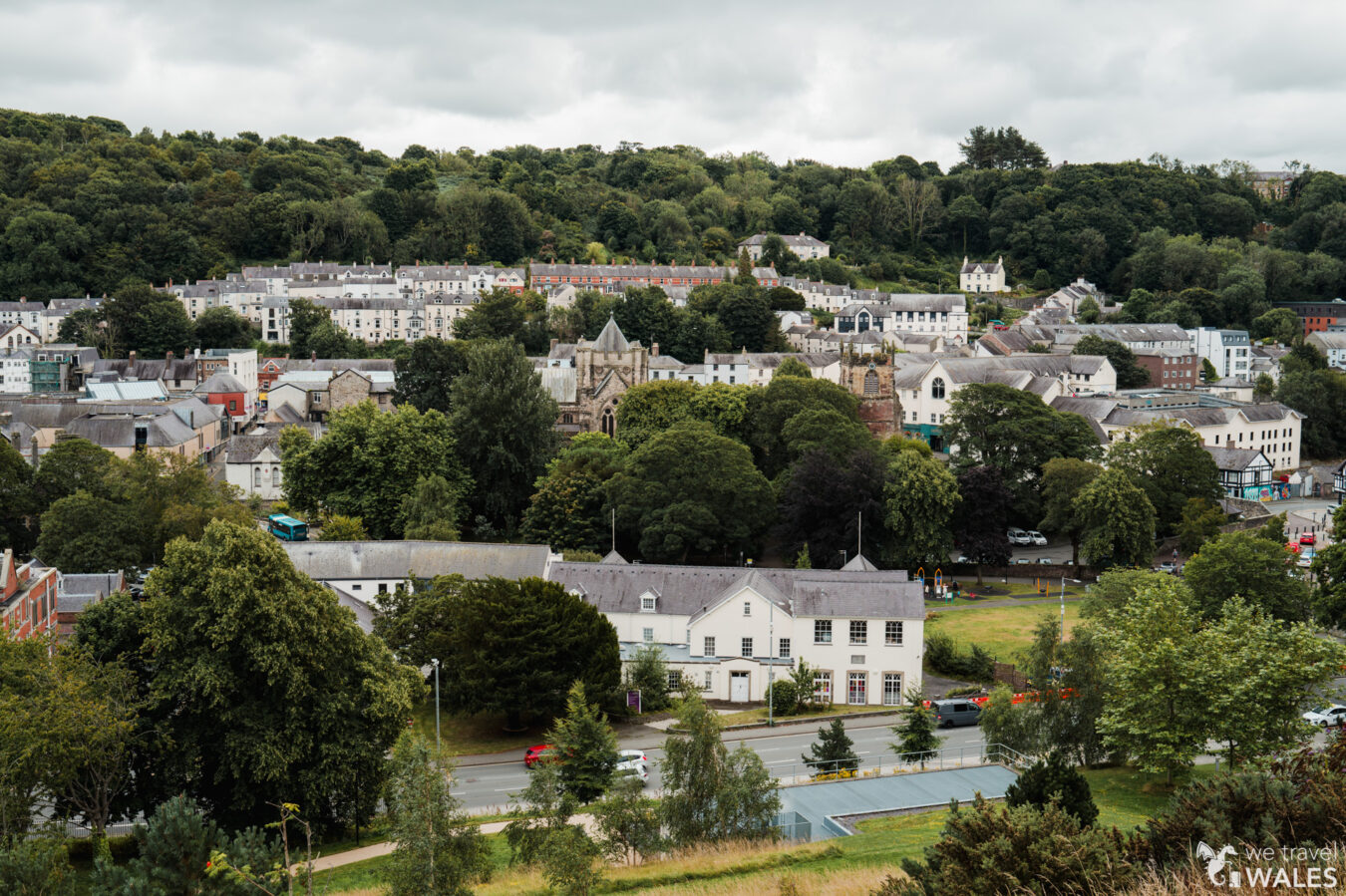
Another important site is Bangor Cathedral, with its Gothic columns and beautiful stained-glass windows. The cathedral has been a place of Christian worship since the 6th century. Inside, you’ll find a rare 15th-century oak carving known as the Mostyn Christ, and just north of the building lies the tranquil Bible Garden.
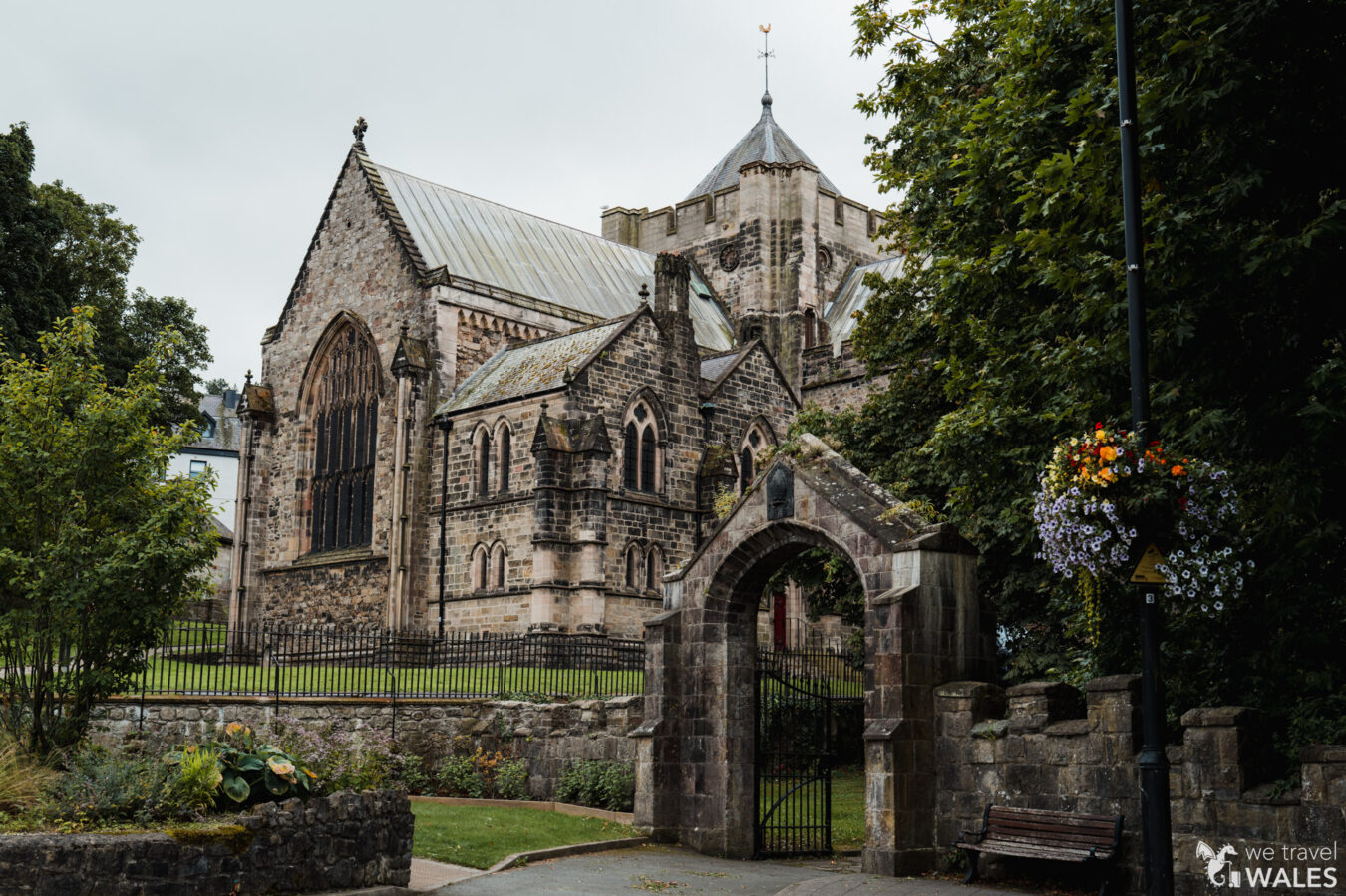
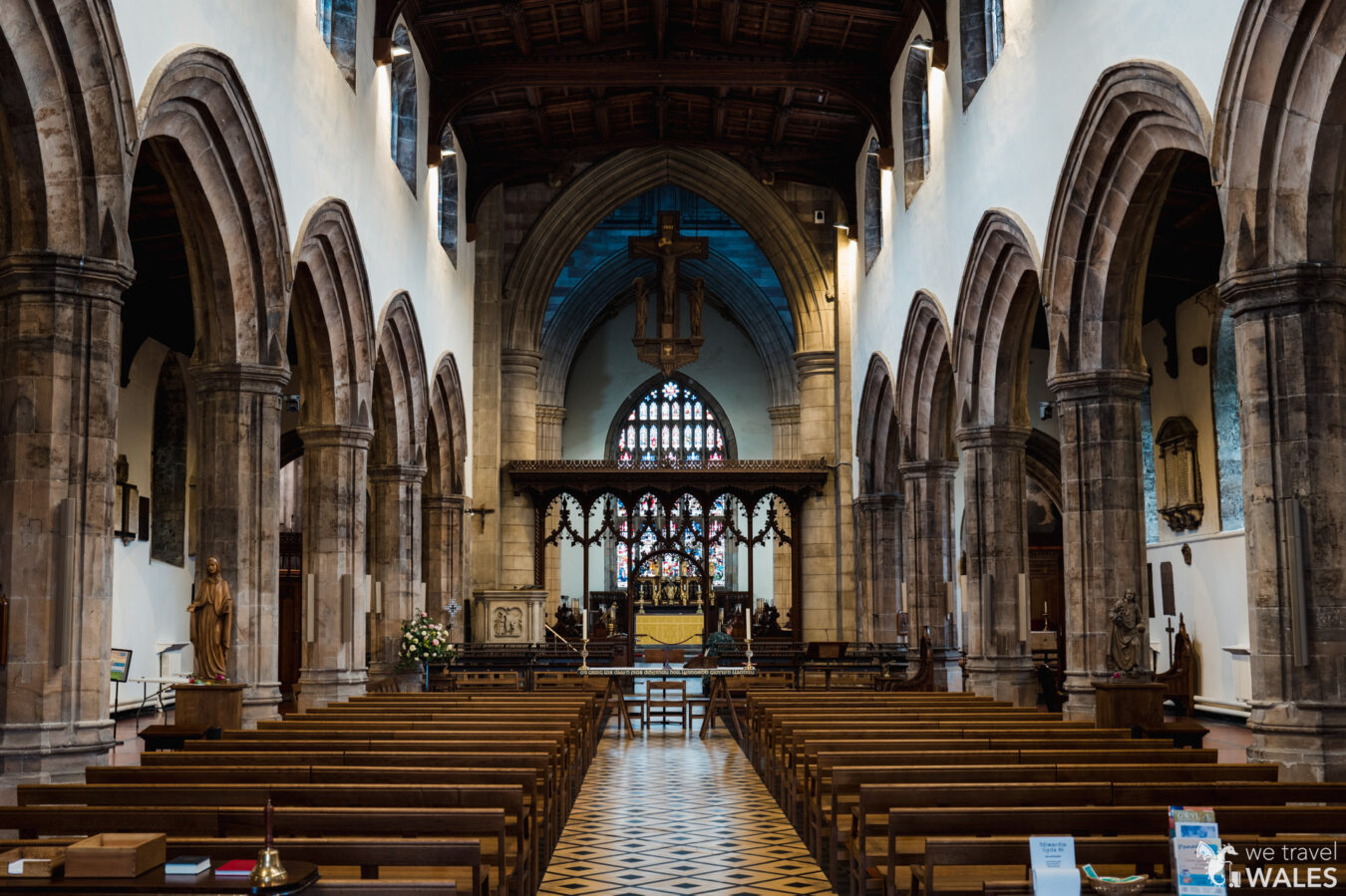
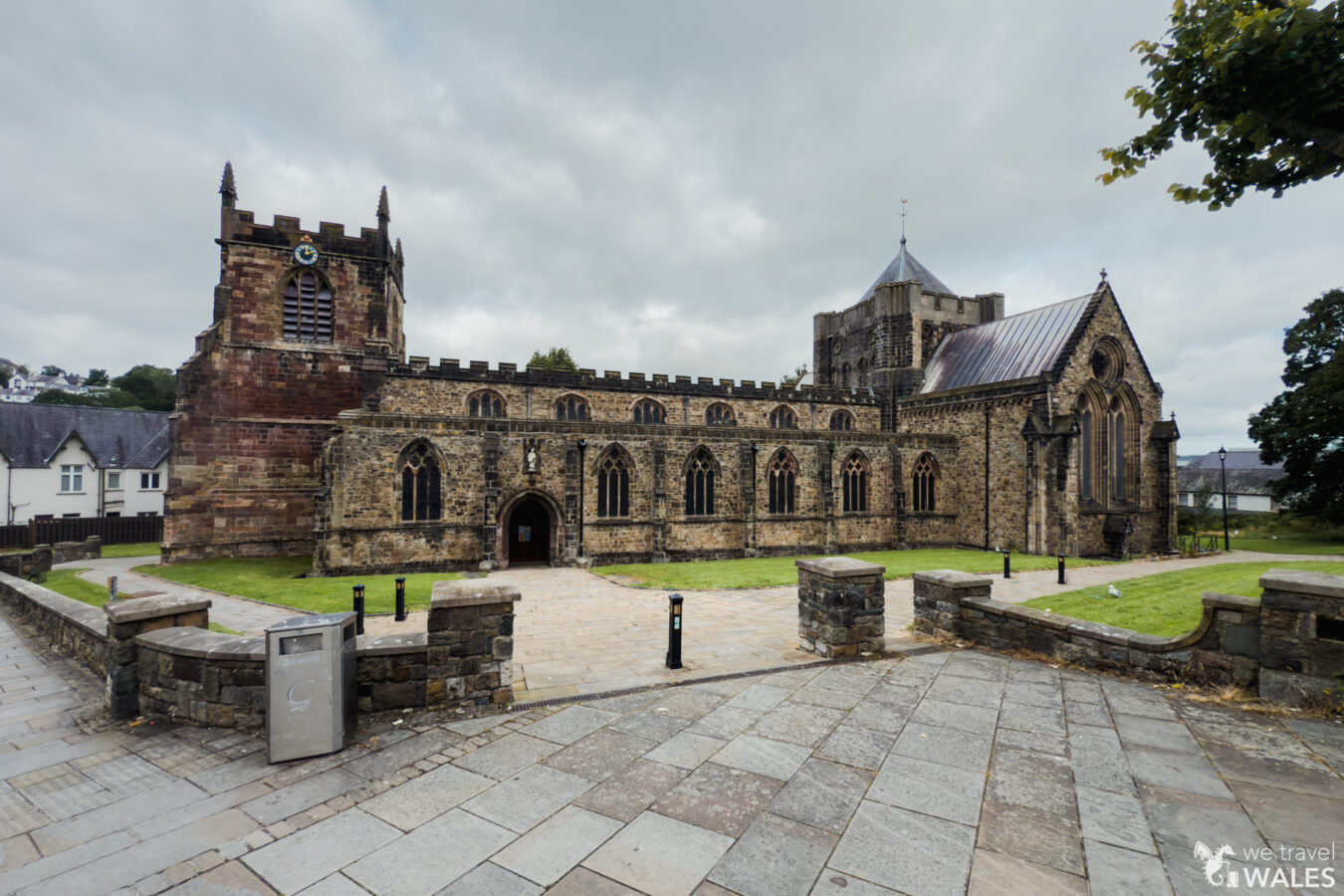
A must-see attraction is Bangor Garth Pier, the second-longest pier in Wales at 1,500 feet (460 m). Now a Grade II listed structure, it is one of the finest surviving Victorian piers in the country. First opened in 1896, it was later re-opened in 1988 after sustaining storm damage, and underwent major renovations between 2017 and 2021.
Located on the far northern headland, it offers spectacular views across the Menai Strait and towards the Anglesey coast. Along the pier you’ll find kiosks selling arts and crafts, as well as a tearoom at the end.
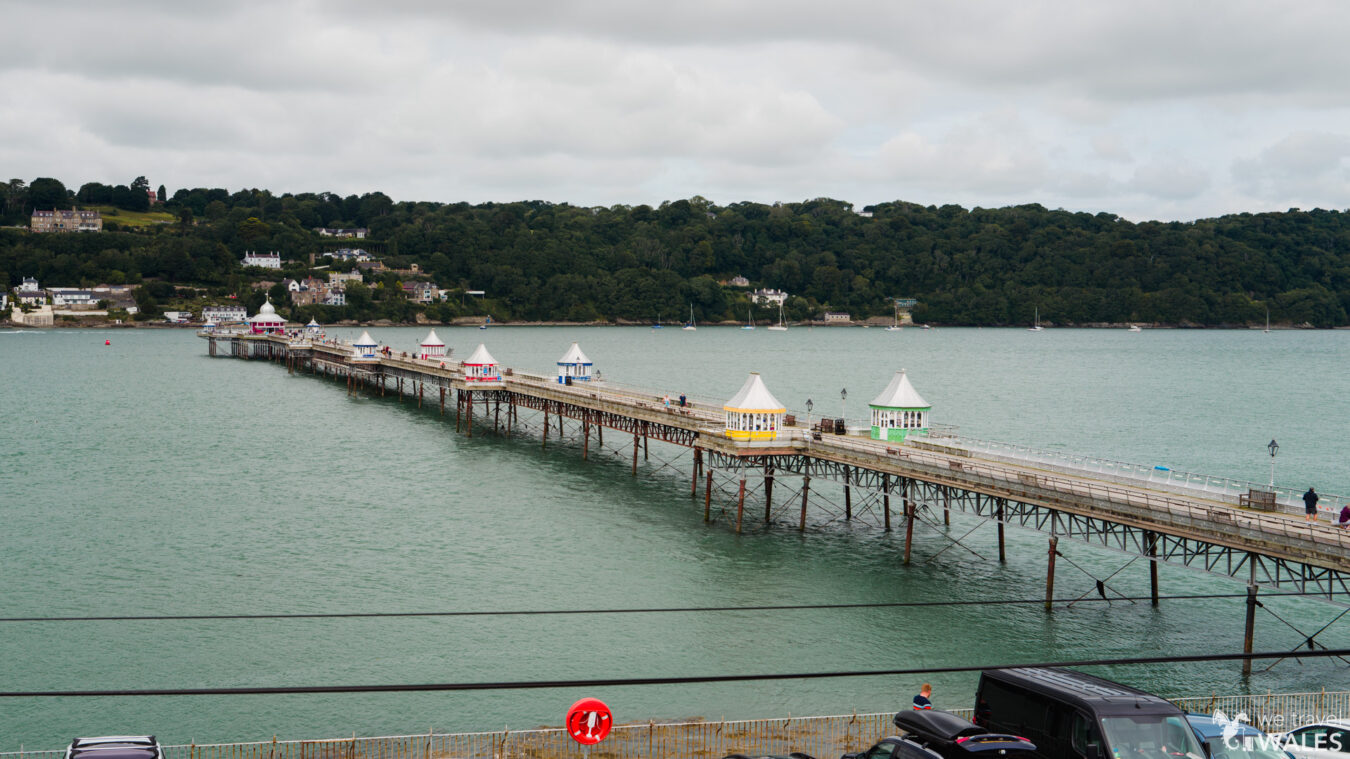
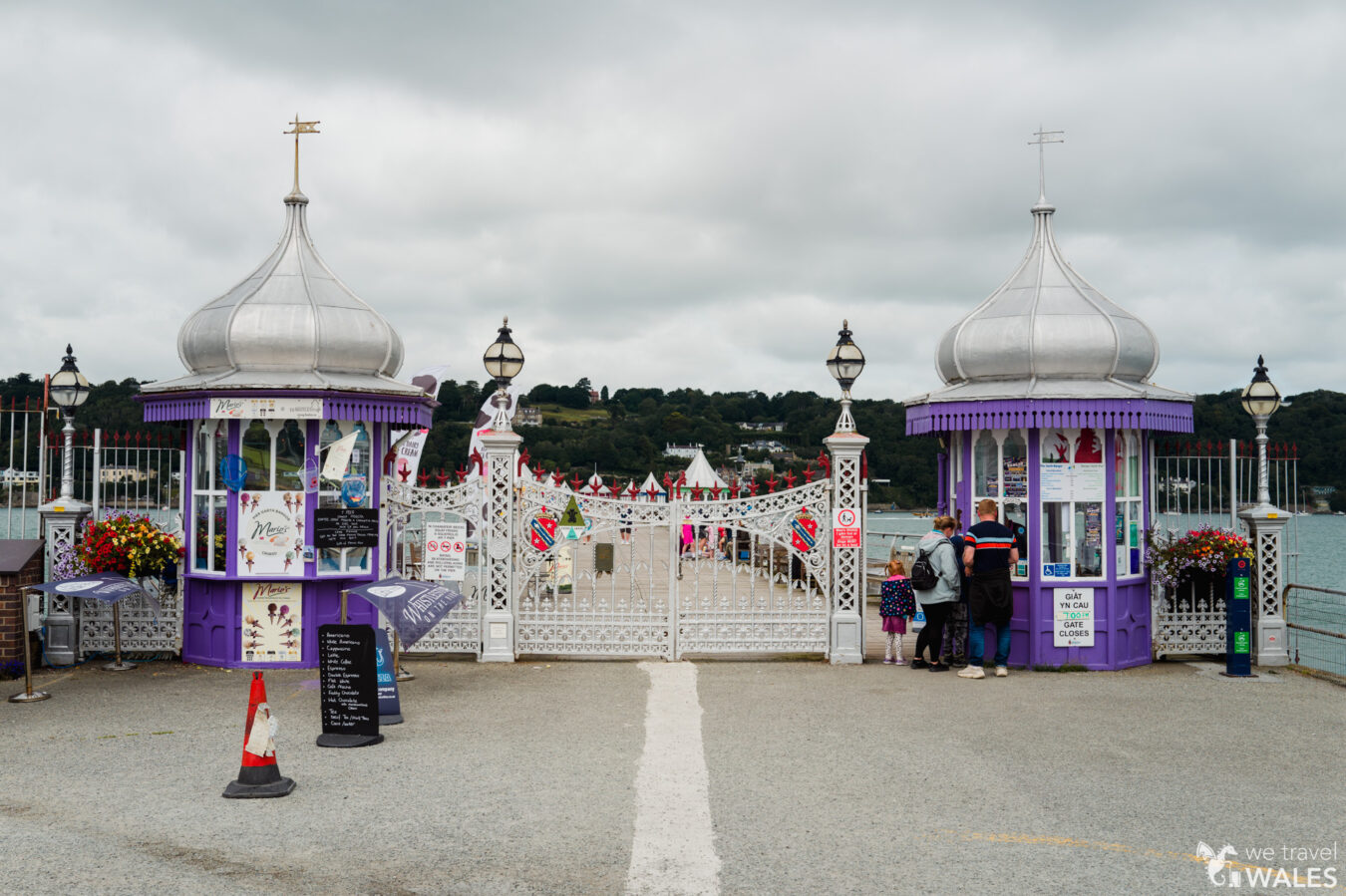
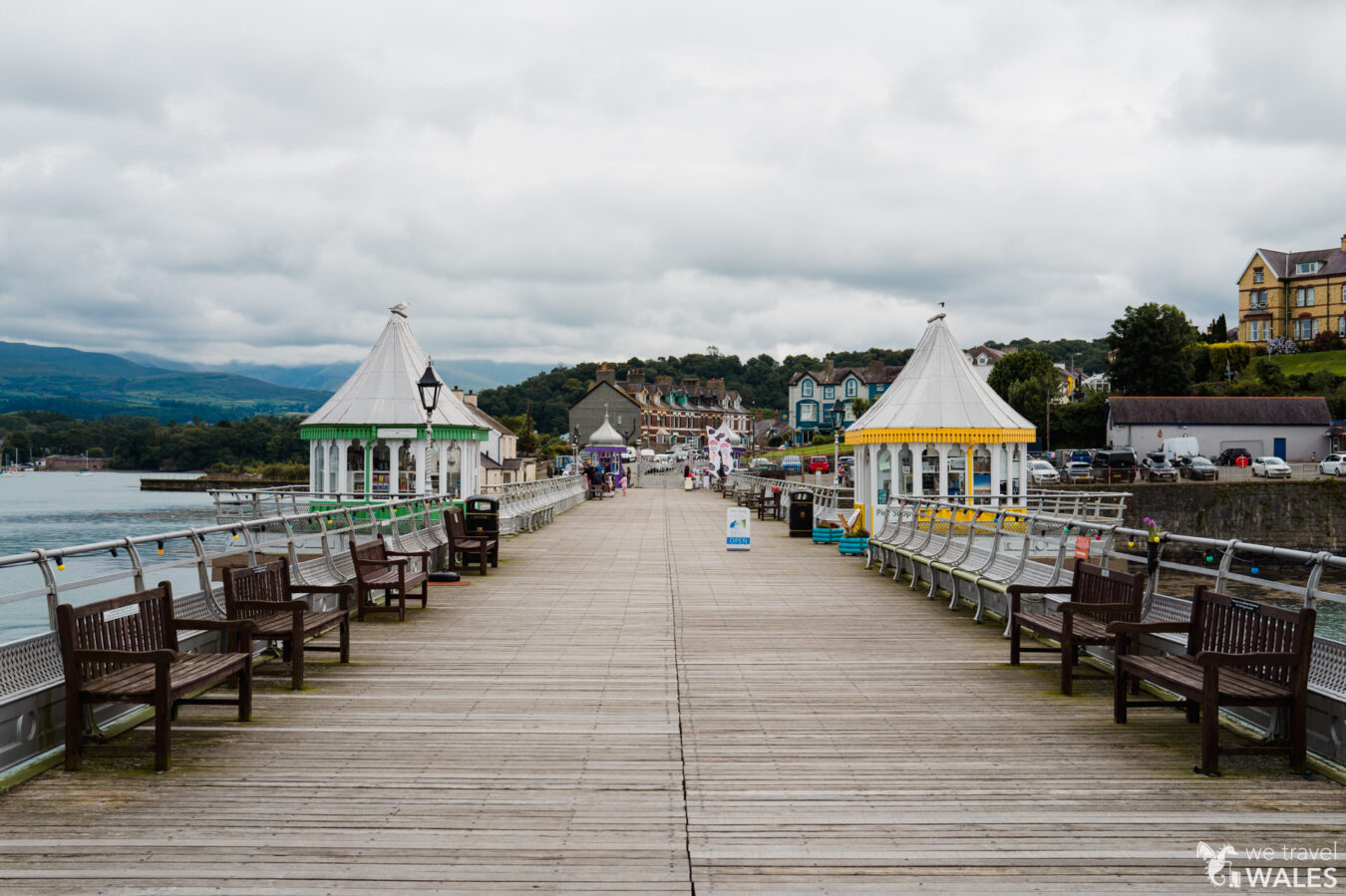
garth pier
There is a small entry fee of £1 to access Bangor Pier (children under 16 enter free when accompanied by an adult). Parking costs £2, and both fees can be paid at the pier’s entrance. The pier is open daily from 8:15am to 8pm, extending to 9pm during the summer months.
Bangor is also home to several cultural and arts venues. Pontio, just south of the university, hosts a cinema, theatre, and regular exhibitions. Storiel, located next to the cathedral, is the county museum and gallery for Gwynedd, showcasing life in the region through the ages, as well as a range of temporary exhibitions and events.
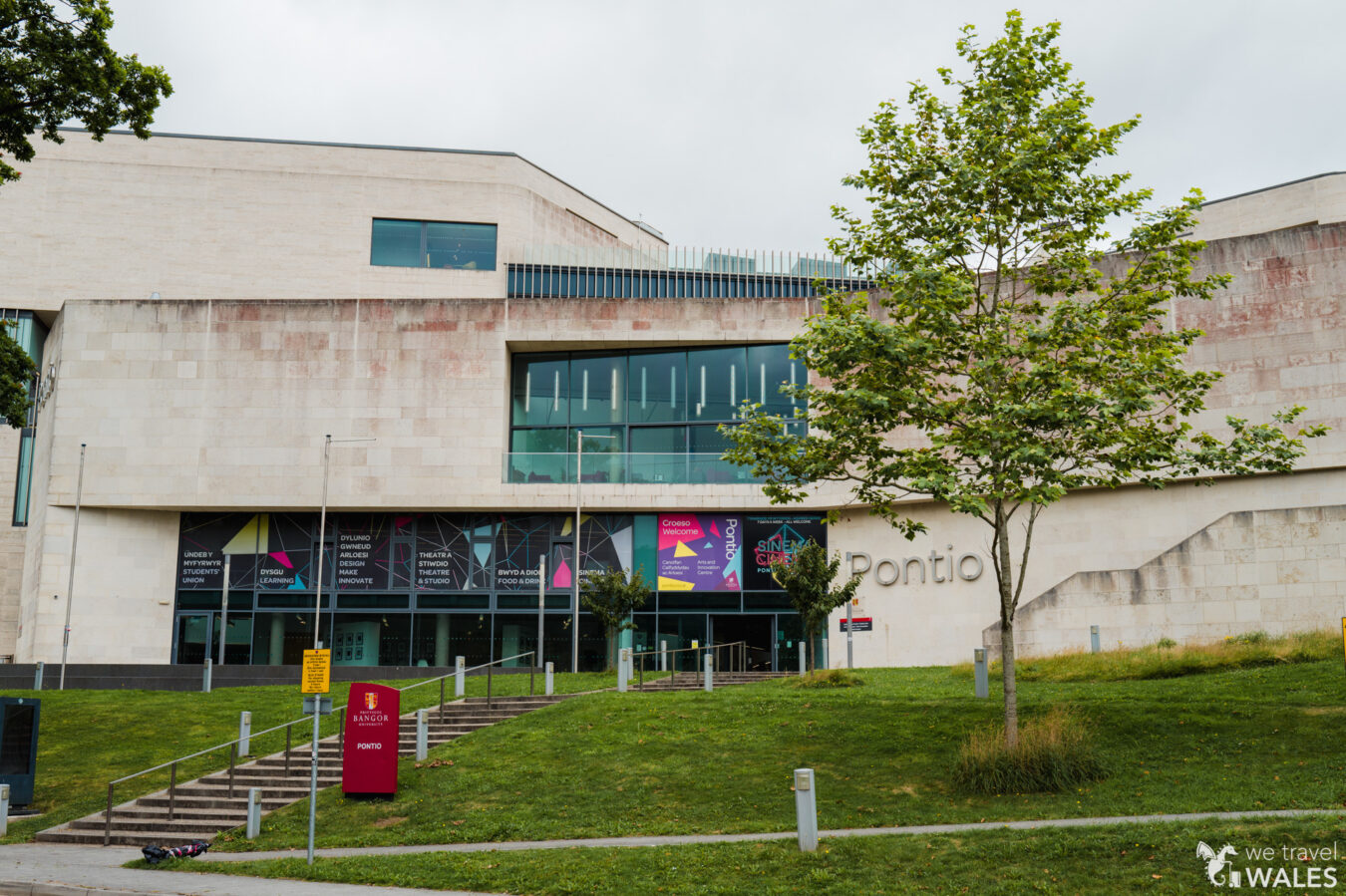
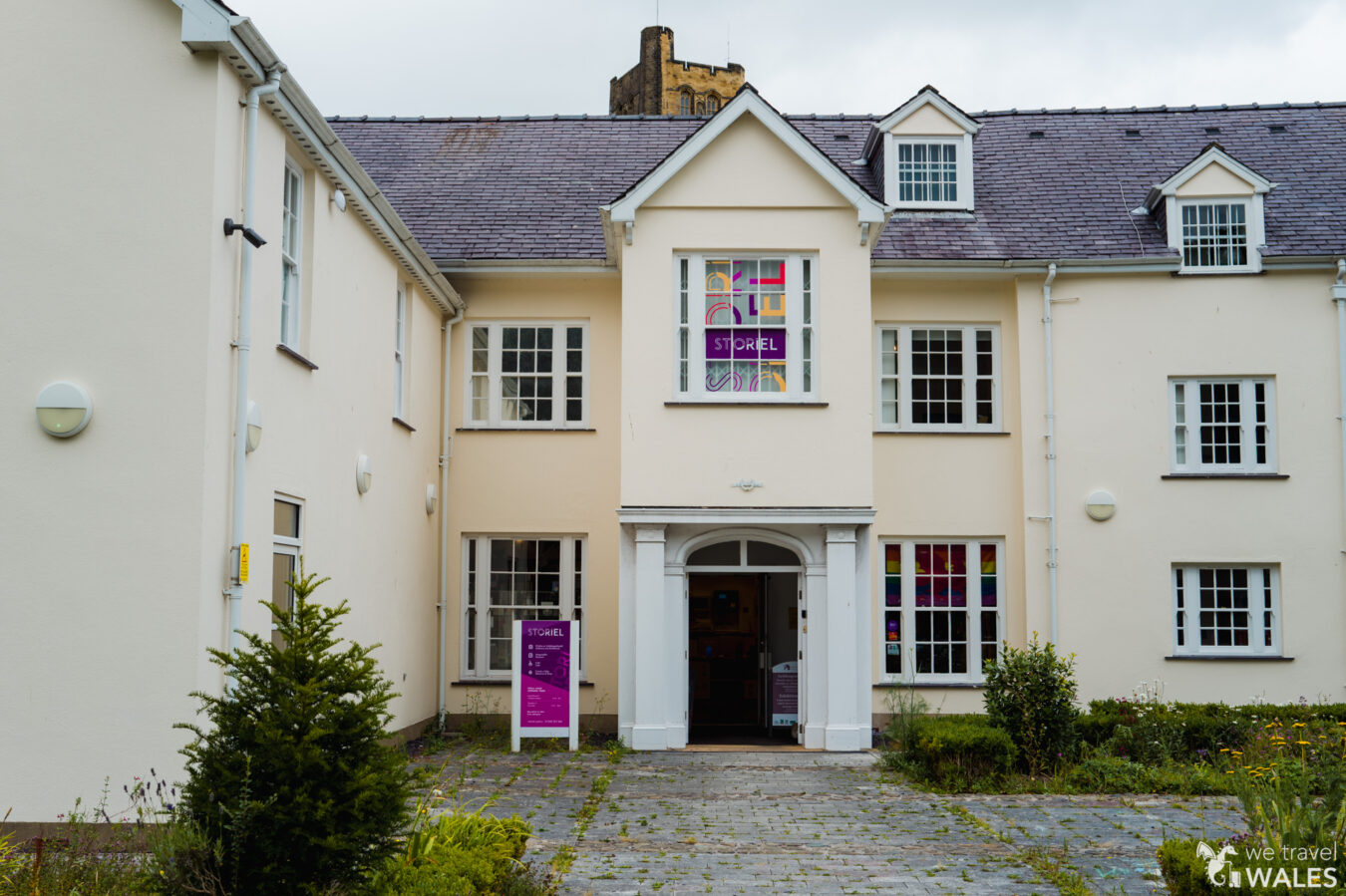
2. Take the Bangor Circular Walk
The Bangor Circular Walk is a relatively short route that shouldn’t take more than 45 minutes, and it can be started from several points around the woodland known as Roman Camp. The name is actually a little misleading, as although a fort once existed on the hilltop, it’s believed that it was the Normans, not the Romans, who settled on this site.
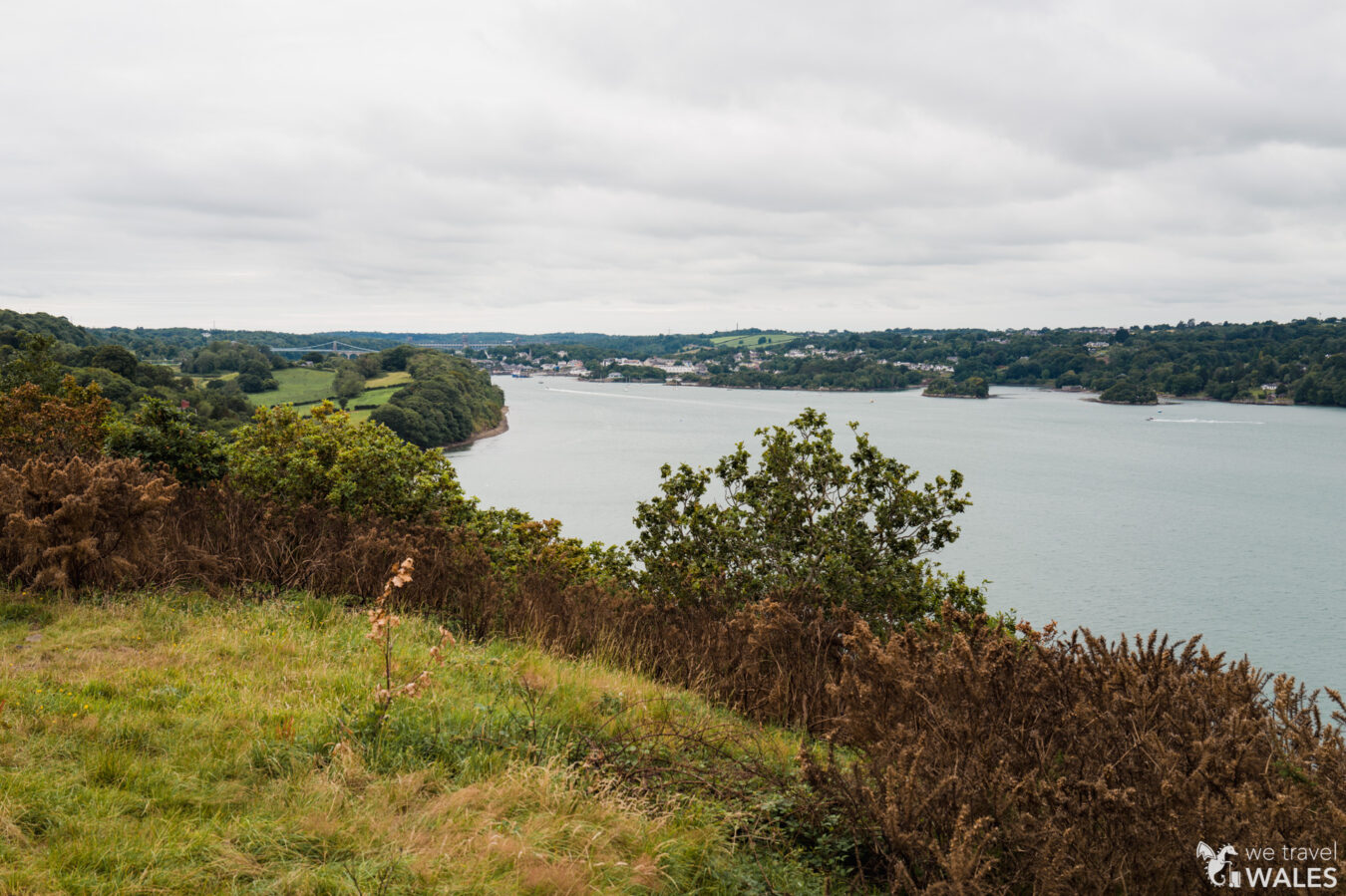
The area lies in the northern part of town, near the pier. Hike up through the mature woodland, where you’ll find sycamore and oak trees, a variety of plants, birds, and other wildlife. From the top, you can enjoy excellent views back towards the city and across the Menai Strait, with the two famous bridges clearly visible in the distance.
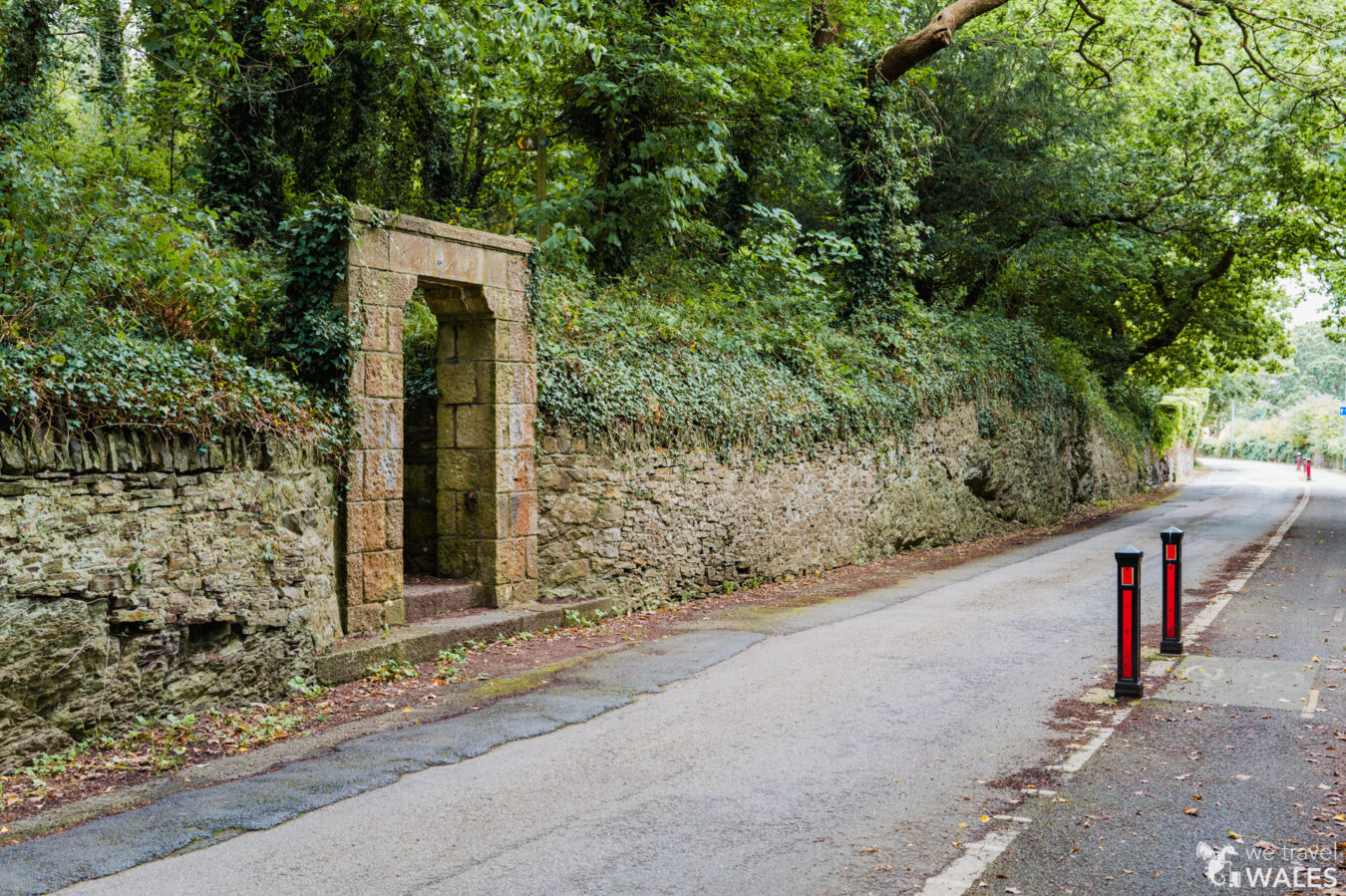
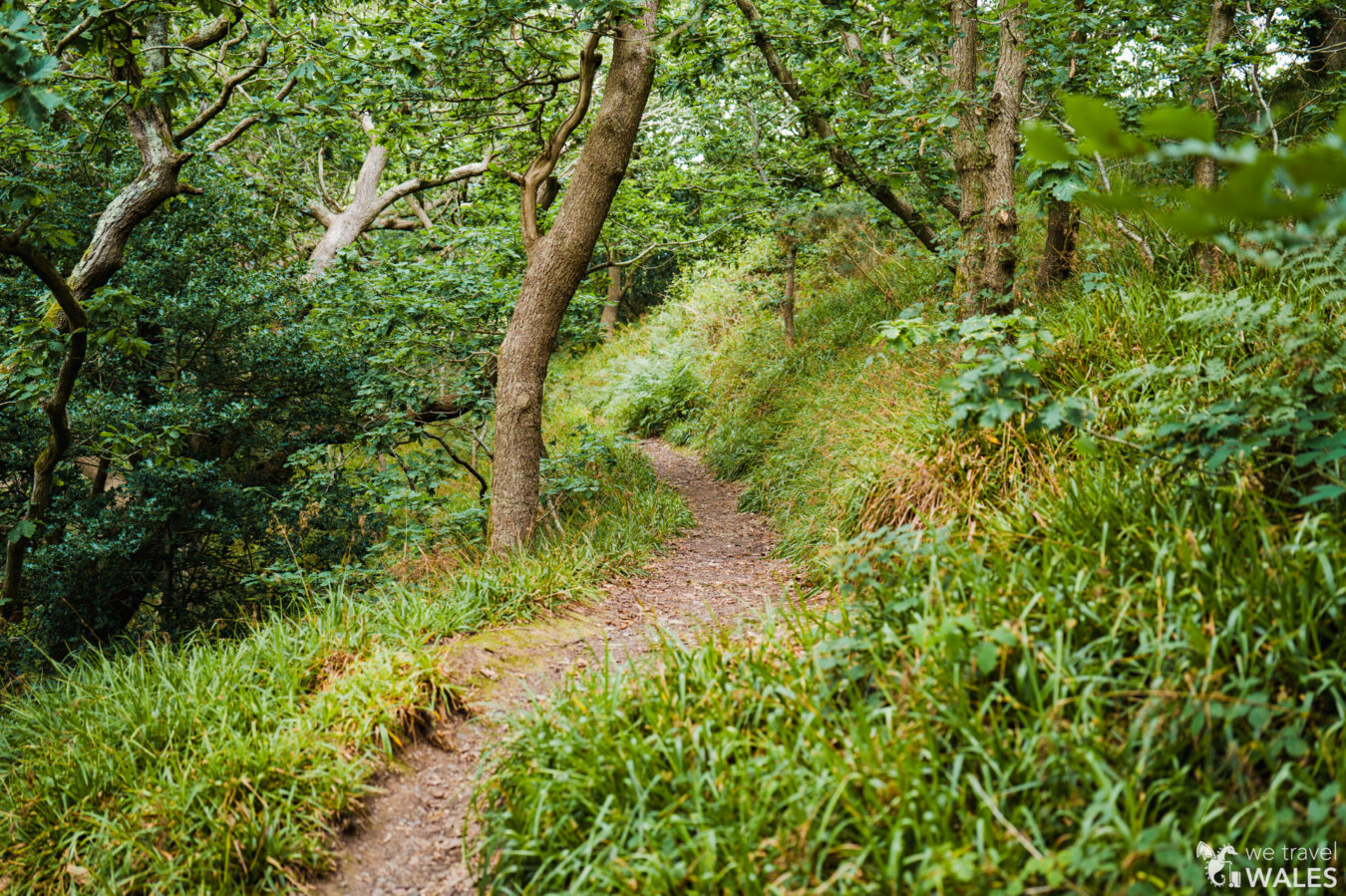
I started from the pier and walked back along Ffordd Siliwen before taking Entrance No. 4 on the left and making my way up. From there, you can return to town via several different paths. The map on the Visit Snowdonia website shows all available routes and entry or exit points.
Not far from Roman Camp, continuing along Ffordd Siliwen, you’ll find another path on your right leading to the Eisteddfod Stones – a ring of standing stones used in the ceremonies for Wales’s National Festival, which Bangor hosted in 1971. It’s a lovely spot for a picnic, with a few artistic benches nearby.
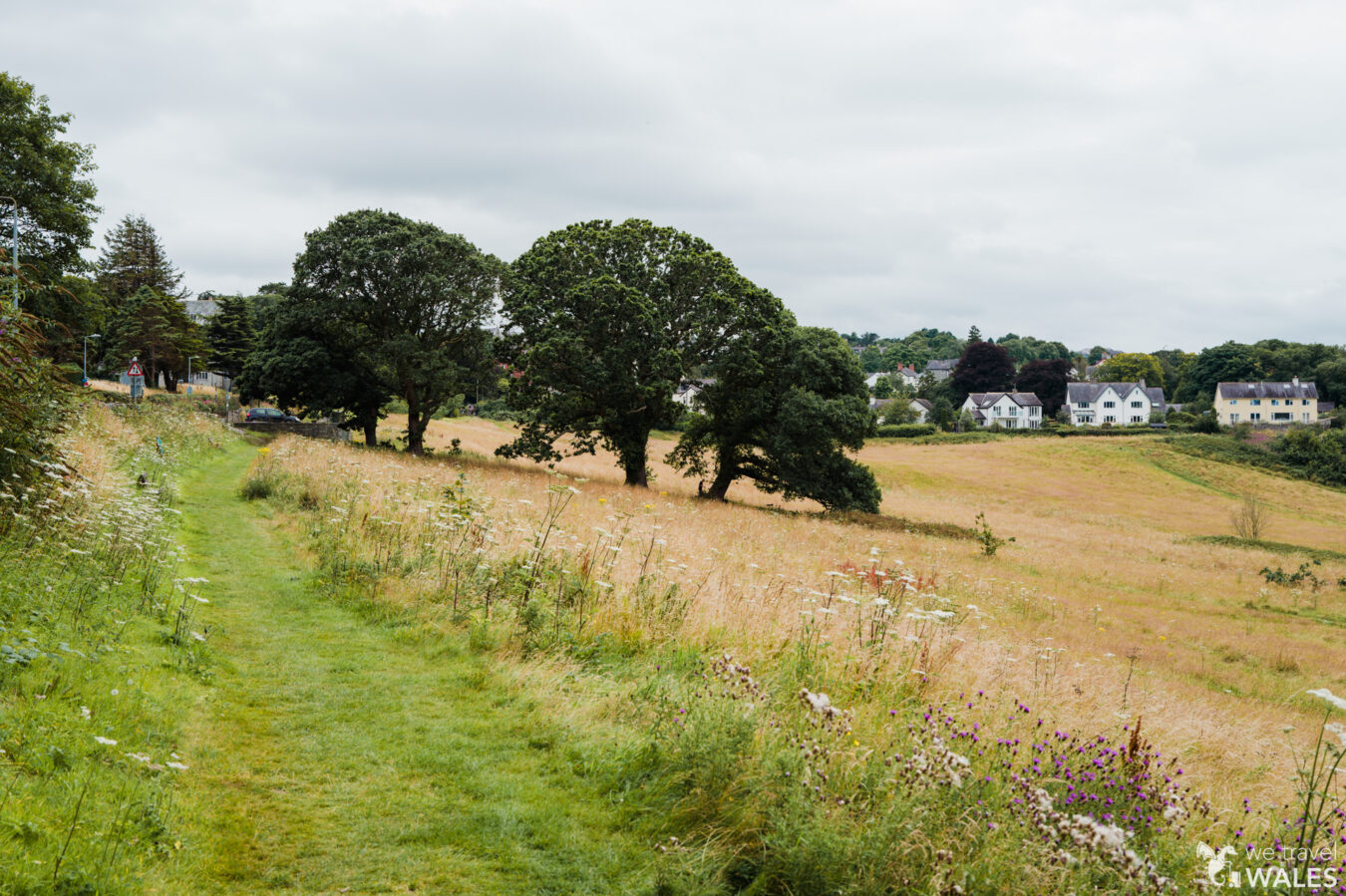

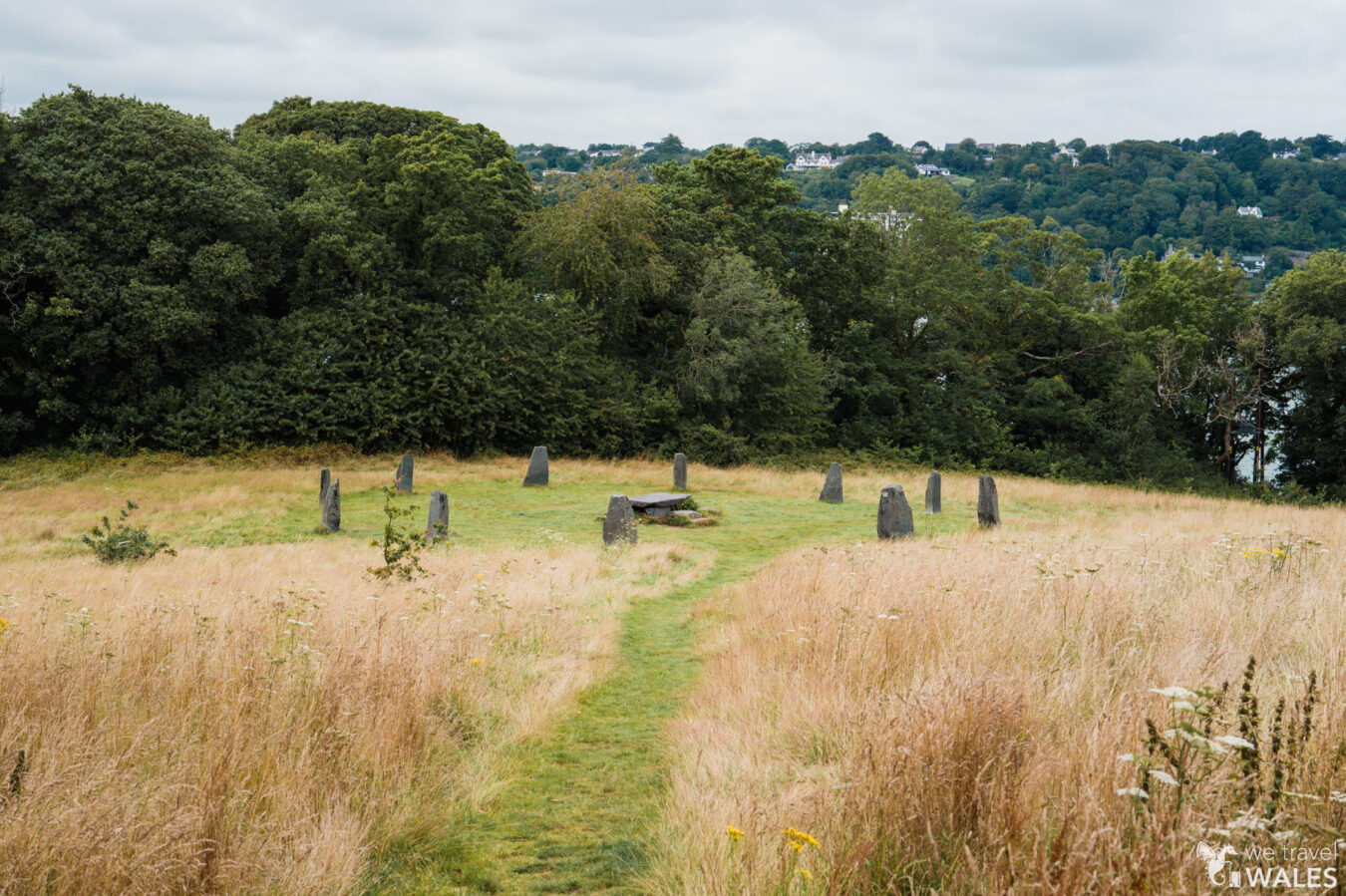
3. Explore the Treborth Botanic Garden
The Treborth Botanic Garden is part of Bangor University’s grounds, but it’s open to everyone and free to enter. Here you’ll find native woodland and meadow, a mature orchard, and six different glasshouses filled with cacti, succulents, and orchids, covering a total area of 18 hectares along the shore of the Menai Strait.
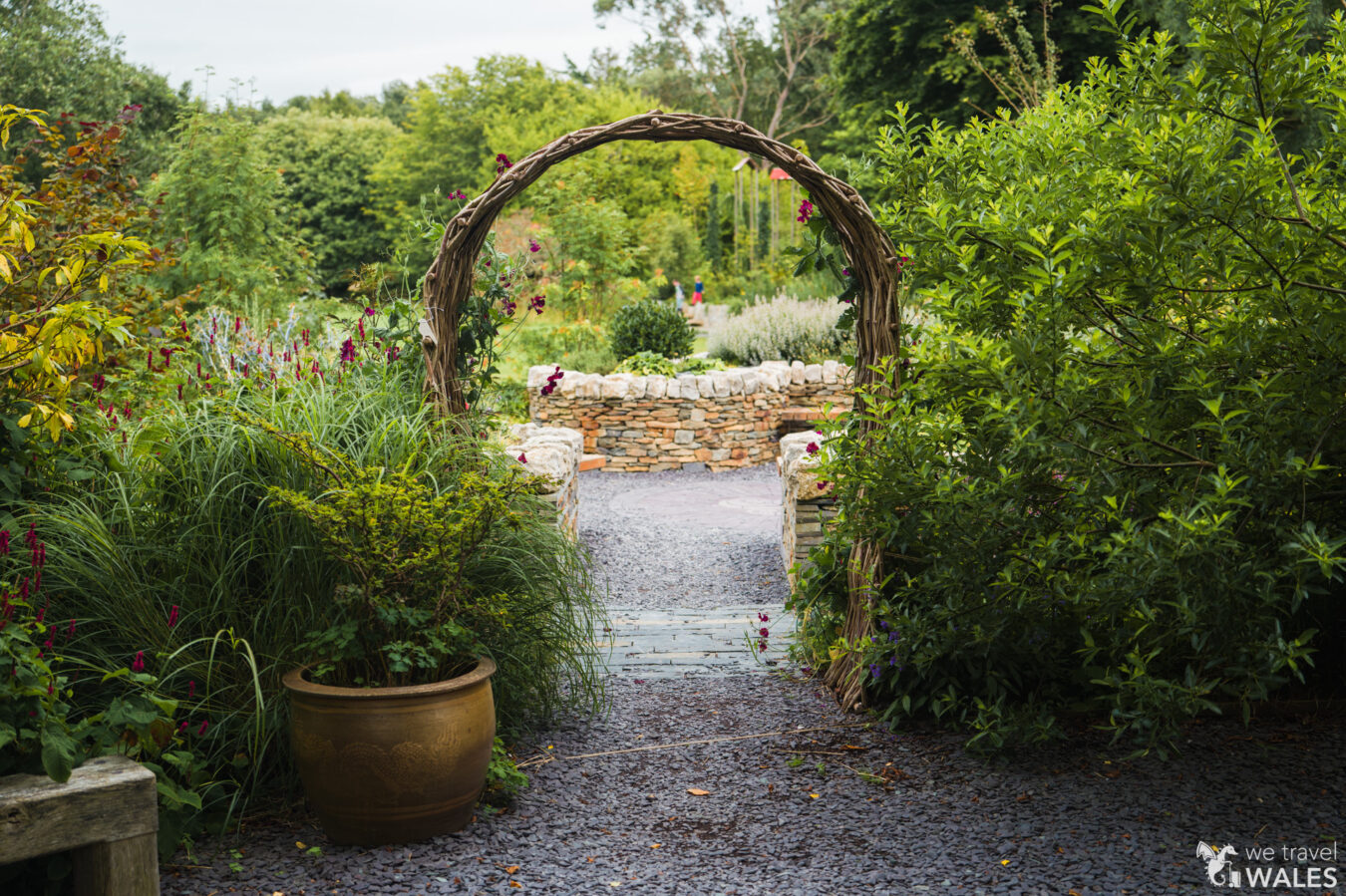
See Treborth Botanic Garden on
Google Maps | Apple Maps
It’s a very peaceful spot, ideal for a gentle stroll in nature or simply to sit and unwind. There are several easy walking trails through the woodland and along the shoreline, making it a relaxing place to explore at your own pace.
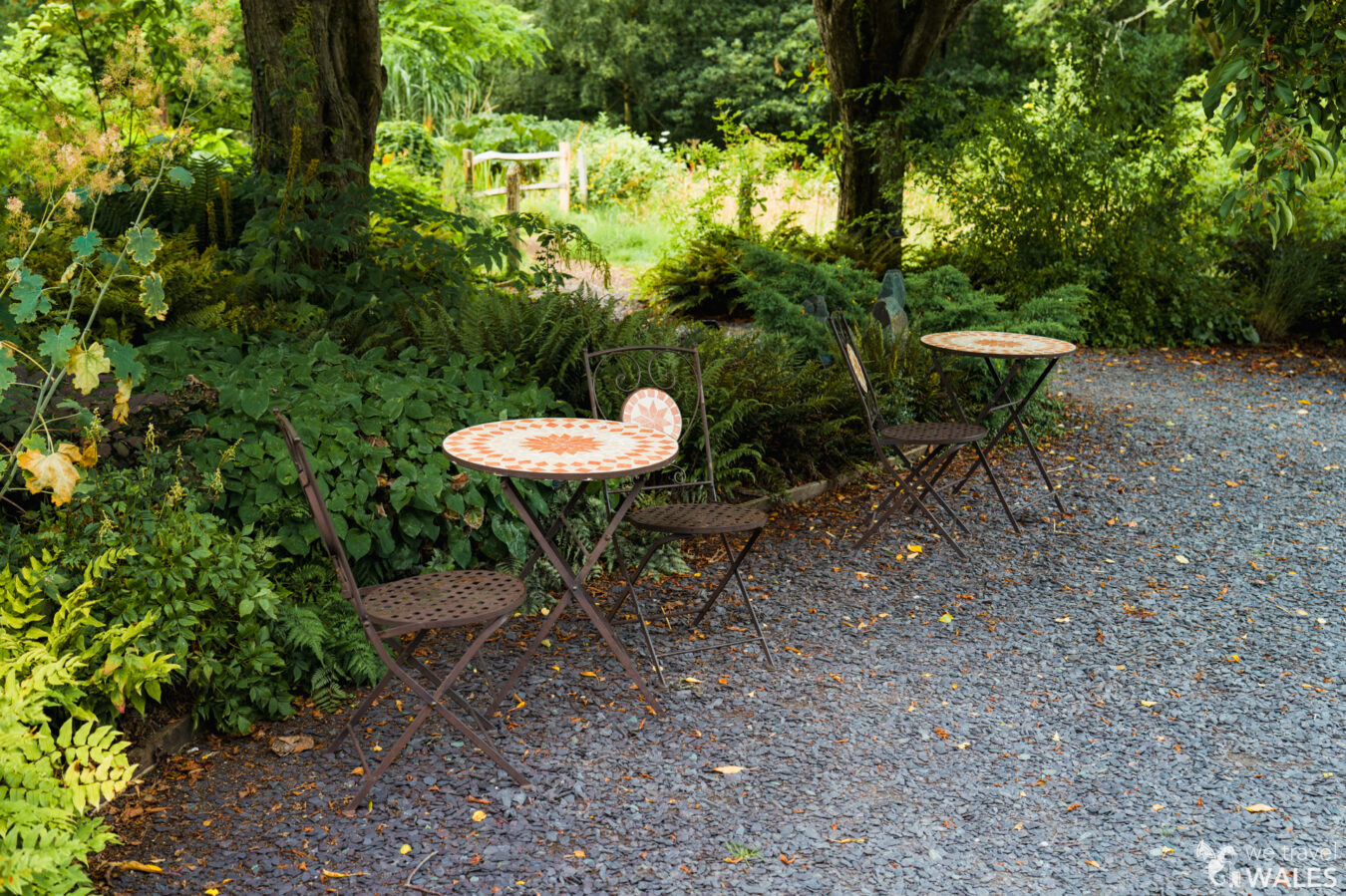
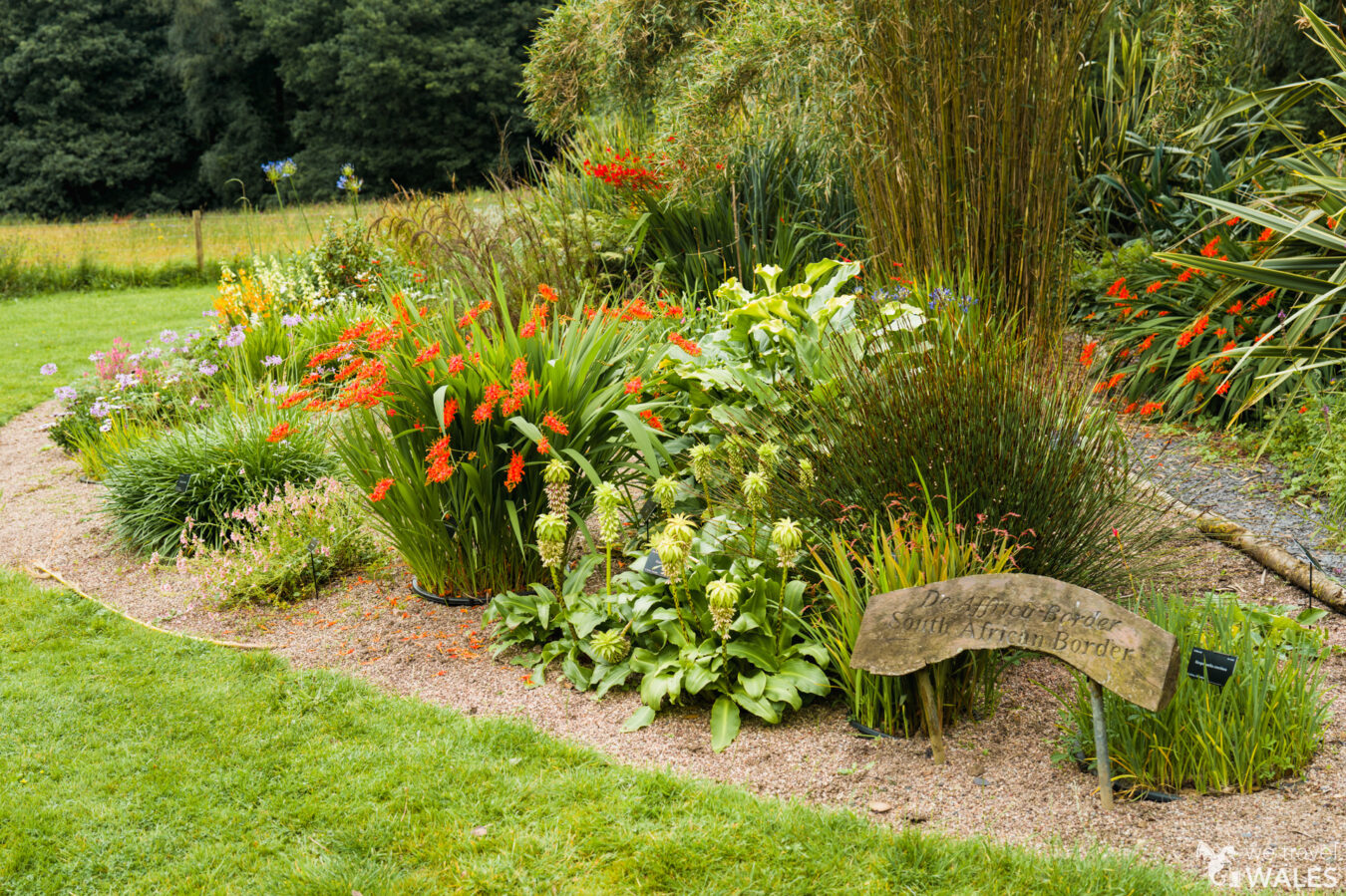
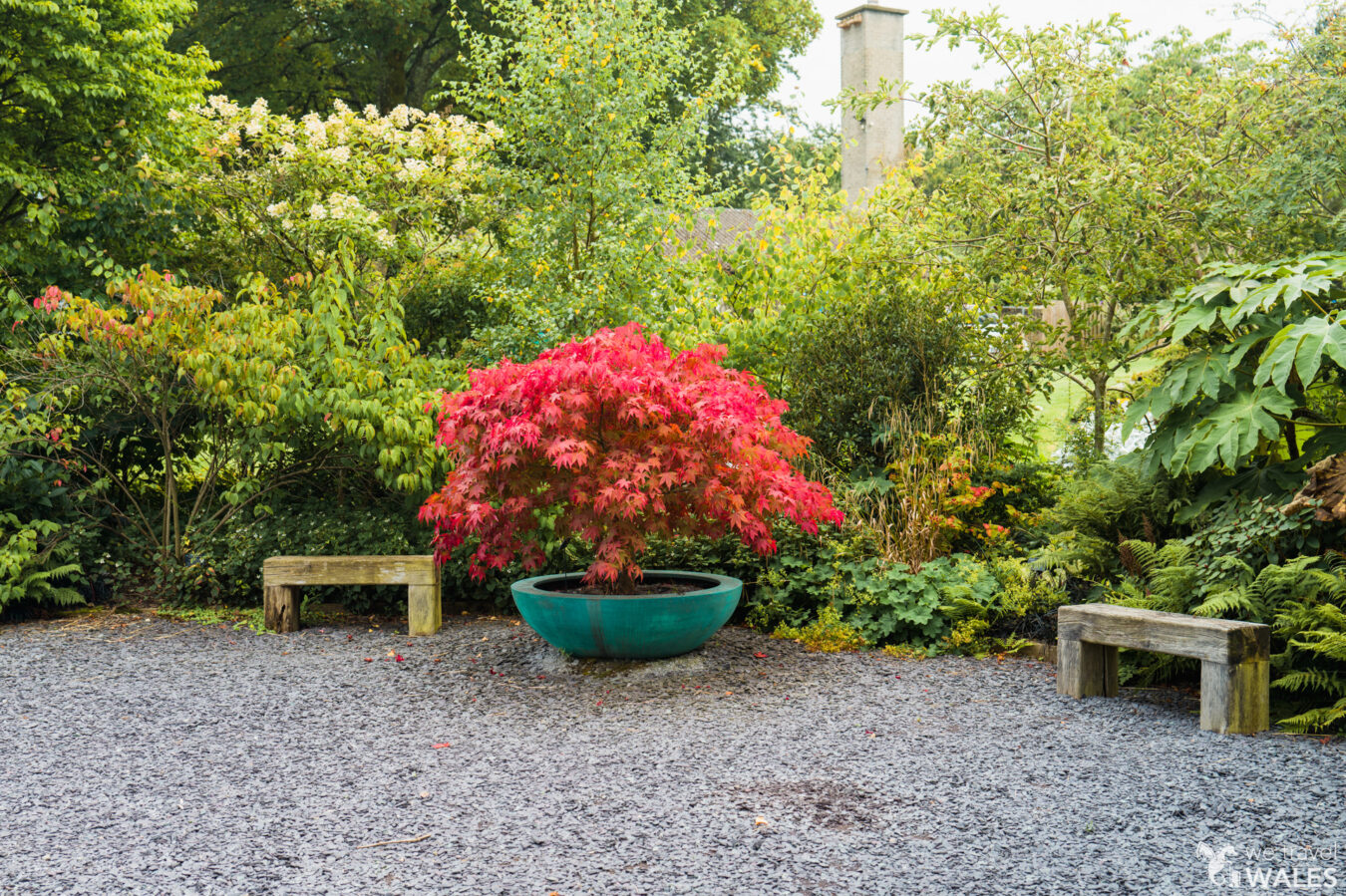
The garden is located to the south-west of the city, not far from Treborth Caravan Park. It’s open to the public daily and free of charge, though the glasshouses are only open on selected days and times, depending on volunteer availability. There are designated parking areas, but note that access is via a narrow lane near the Antelope Inn pub.
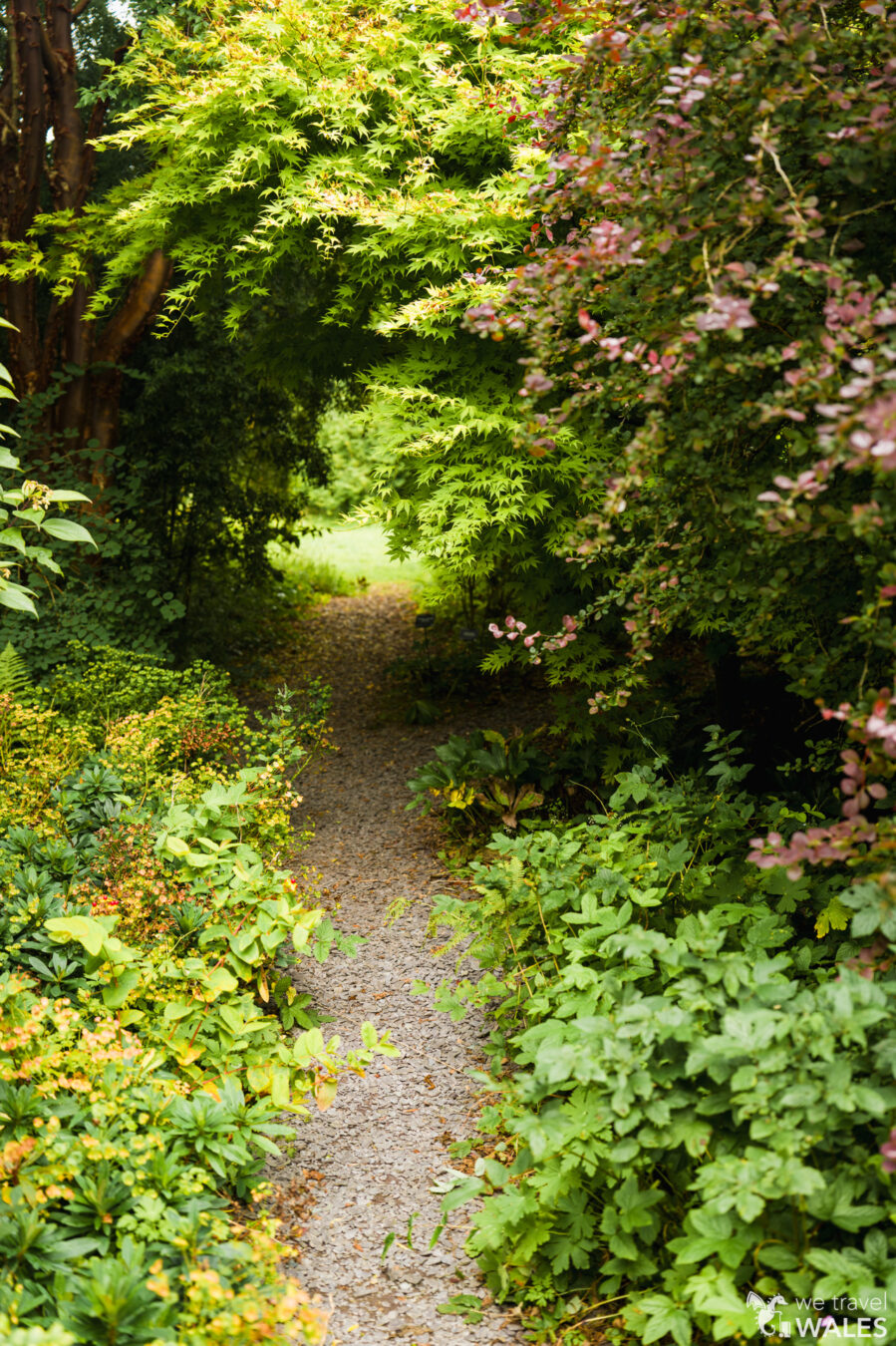
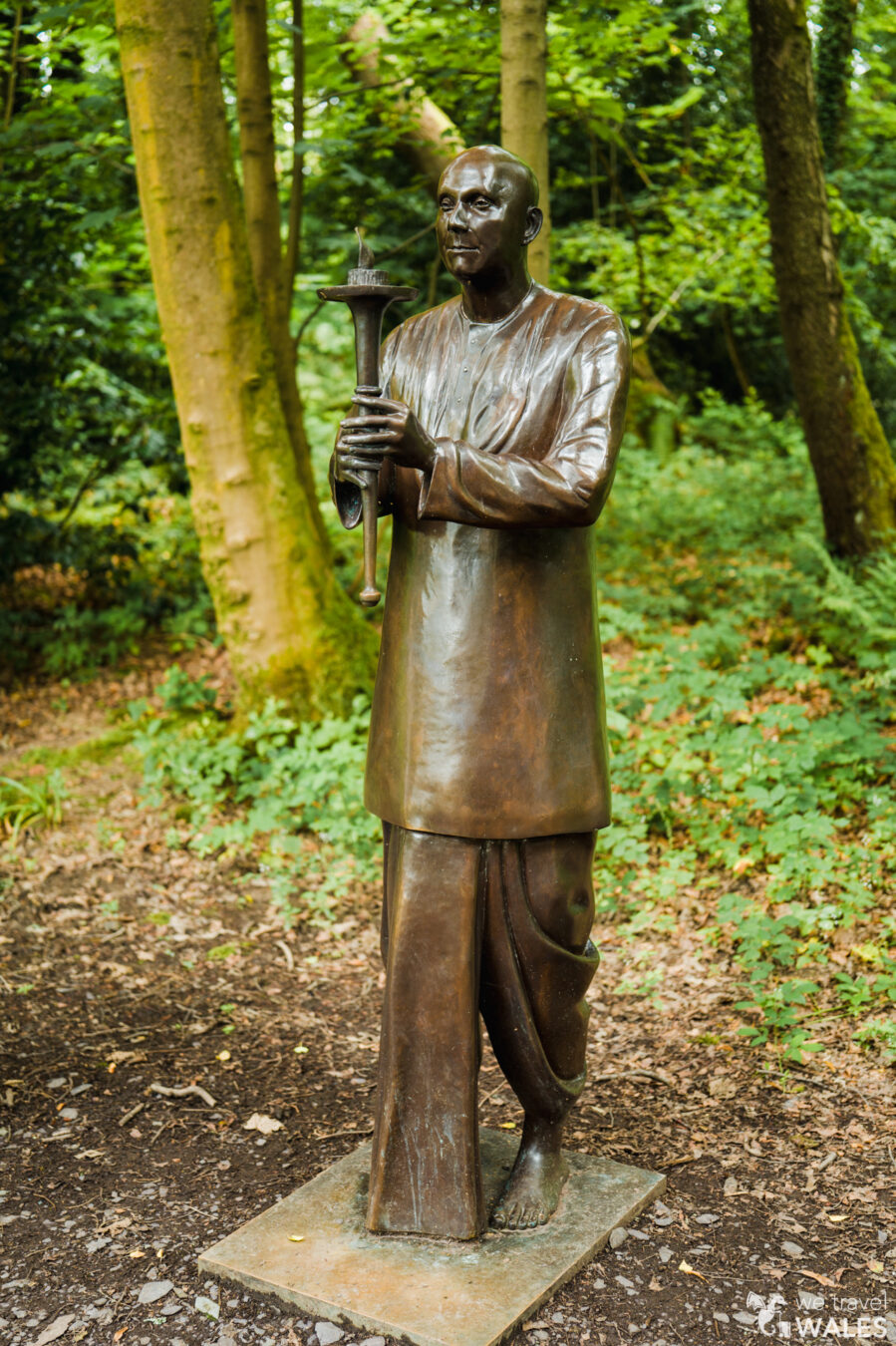
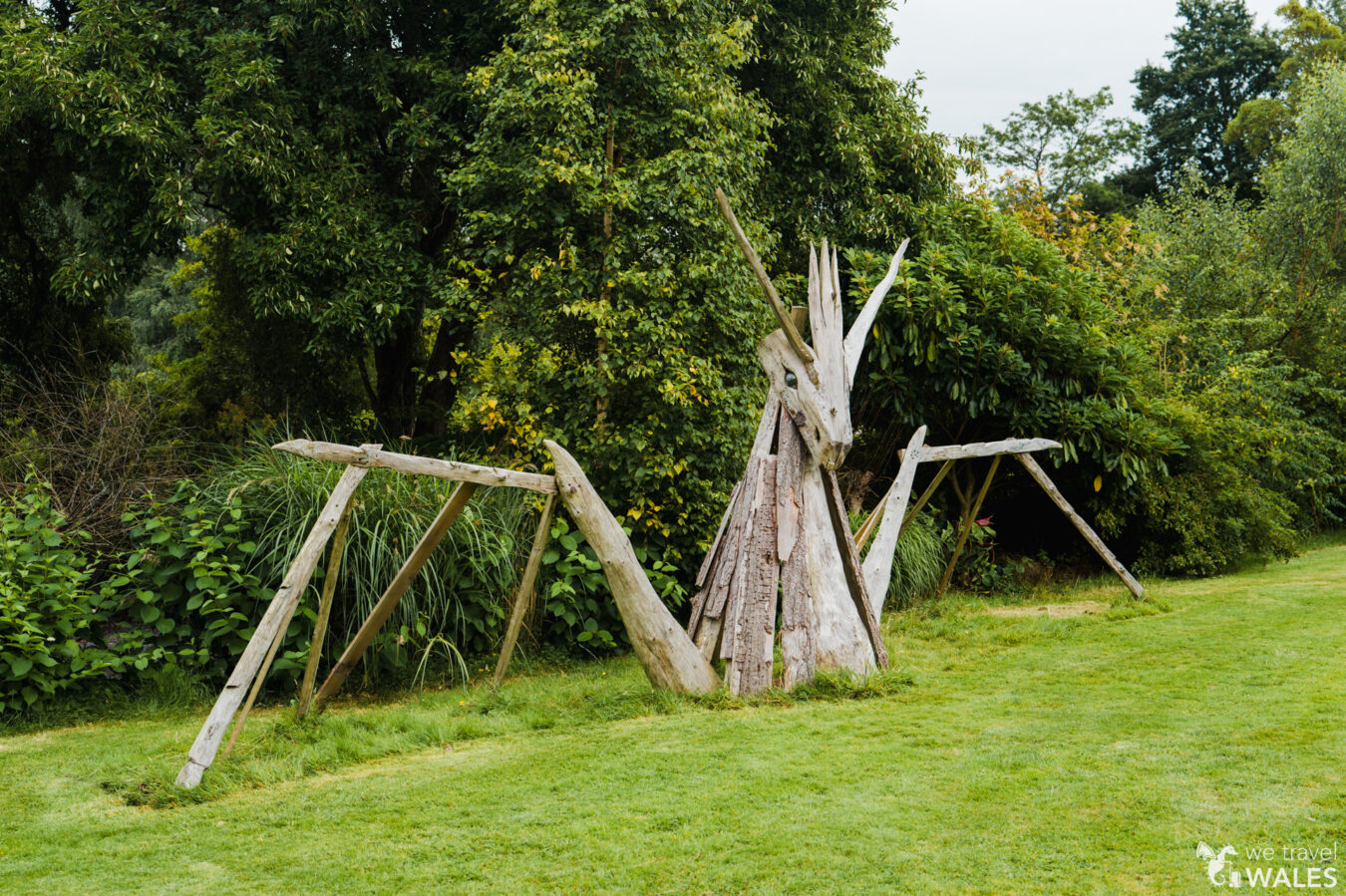
4. Visit Penrhyn Castle
Penrhyn Castle is located to the east of the city, just a 15-minute drive away. This 19th-century country house was built by a wealthy industrialist, and inside you’ll find an impressive fine art collection along with luxurious furniture and décor.
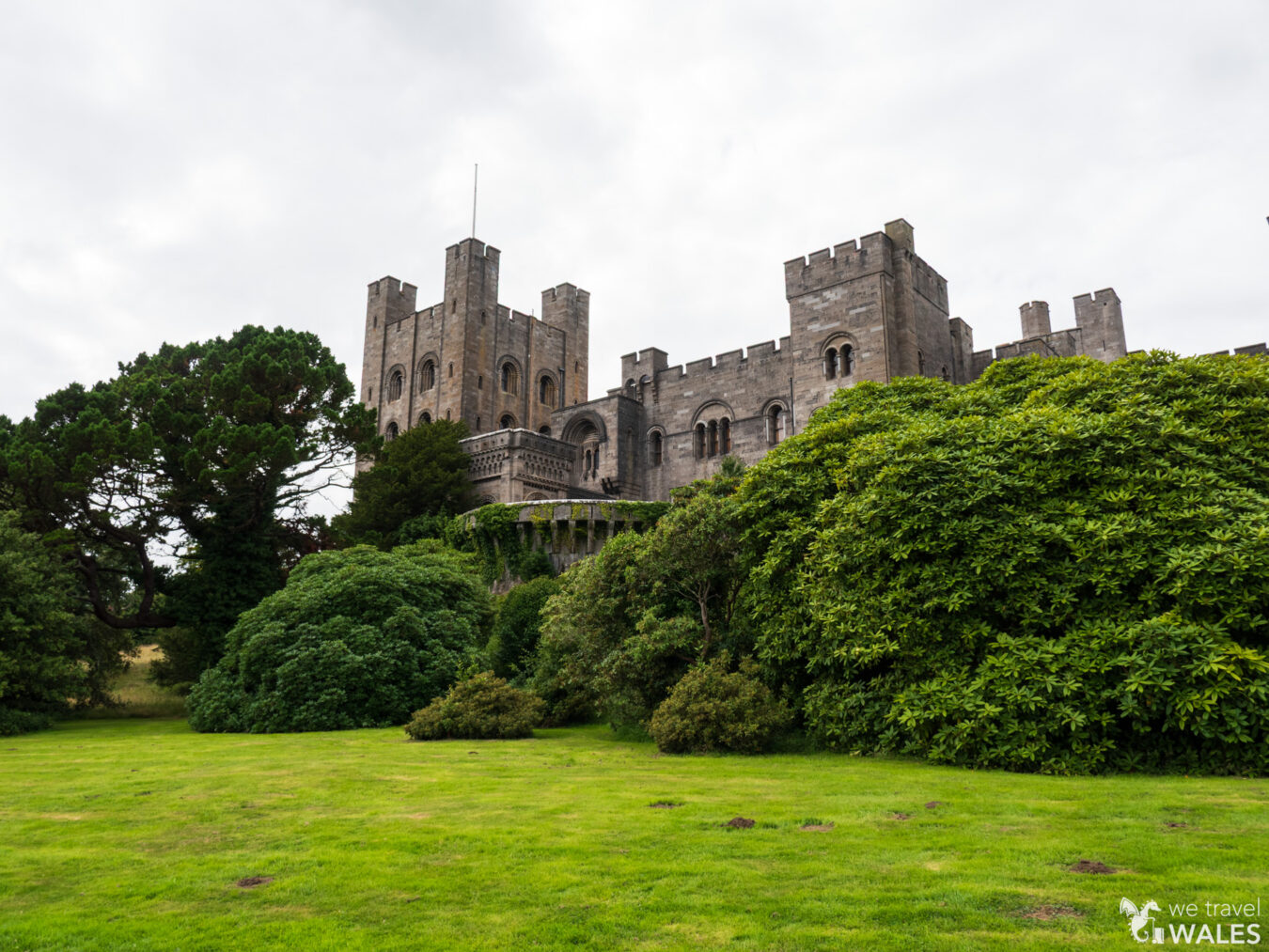
See Penrhyn Castle on
Google Maps | Apple Maps
quick facts about Penrhyn Castle
- The wealth behind Penrhyn Castle and its owner, Richard Pennant, came from industrial and colonial enterprises, and serves as a stark example of how wealth derived from slavery shaped the landscape of North Wales.
- Pennant made his fortune through sugar plantations in Jamaica, where enslaved labour was exploited, and he used this wealth to fund roads, railways, schools, churches, farms, and other developments in the northern part of the country.
- He also established Penrhyn Slate Quarry and Port Penrhyn, which operated for almost 150 years, extracting and exporting slate around the world.
There are extensive gardens and woodlands that make the estate ideal for families, with easy walks and plenty of space for picnics. You can also sit and relax in the walled garden, which actually pre-dates the castle itself. The Wales Coast Path passes through the grounds, so you can follow part of it to enjoy wonderful views over the Menai Strait, Anglesey, and Penrhyn Docks — once a key point for exporting slate around the world.
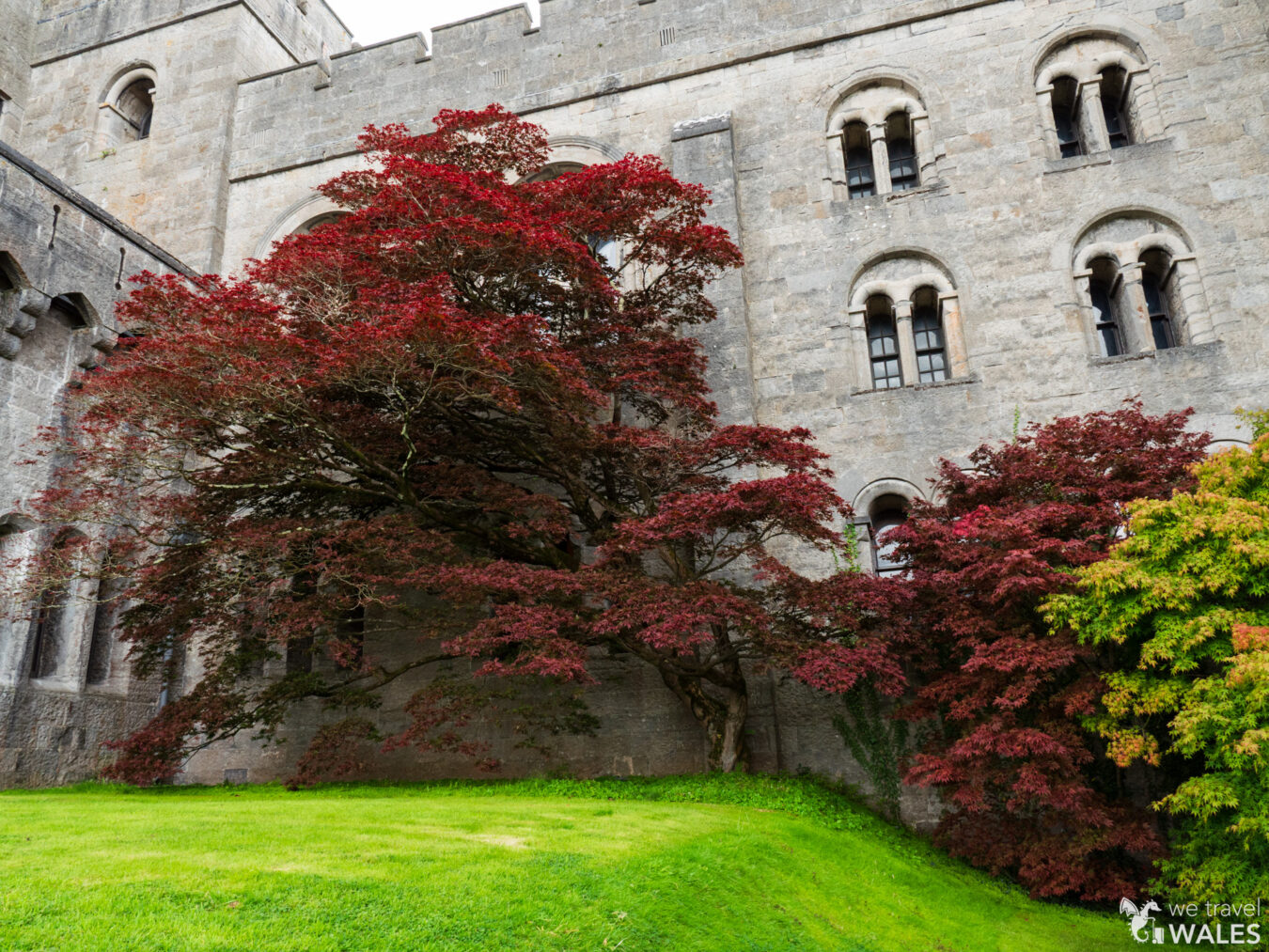
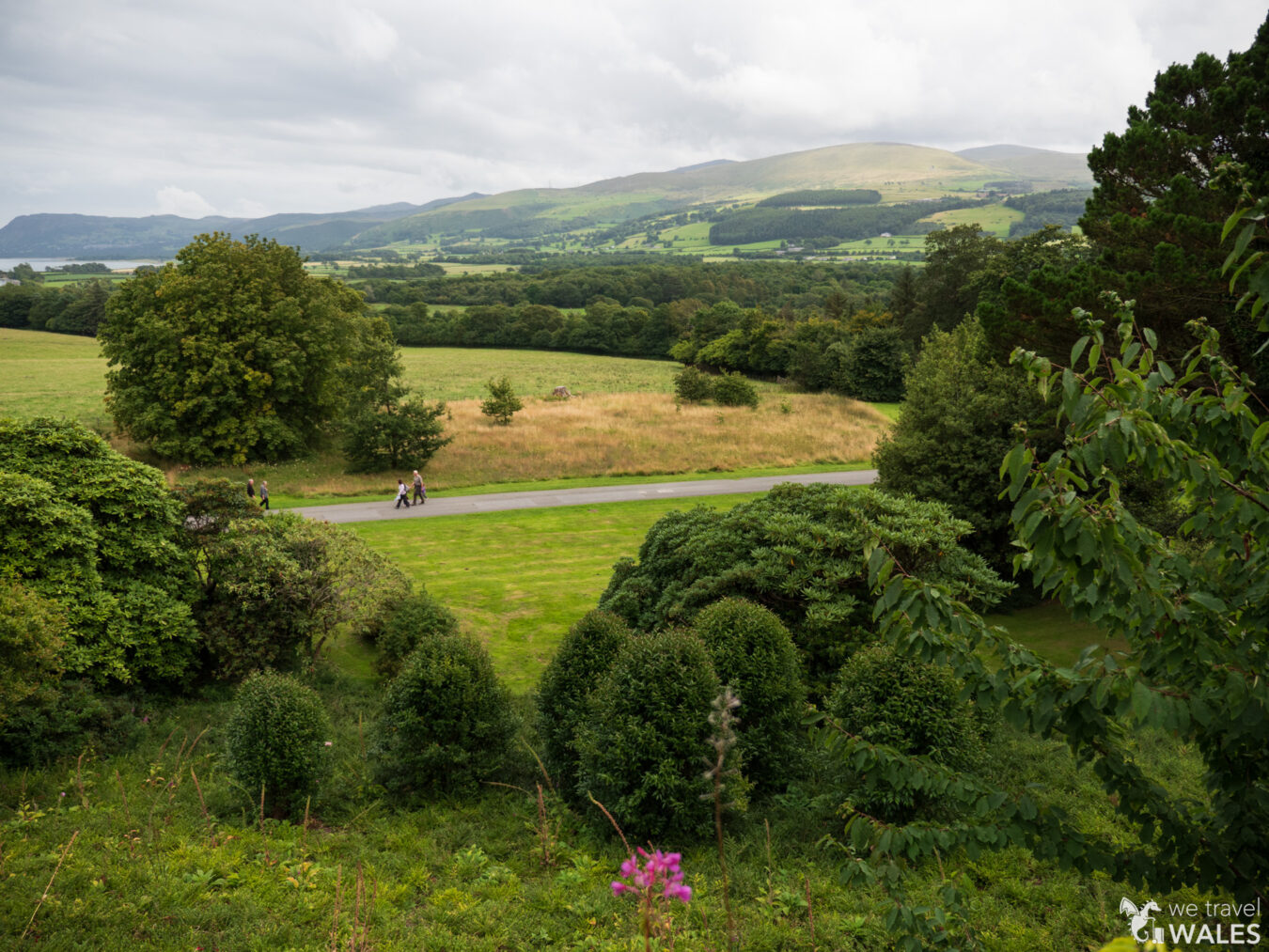
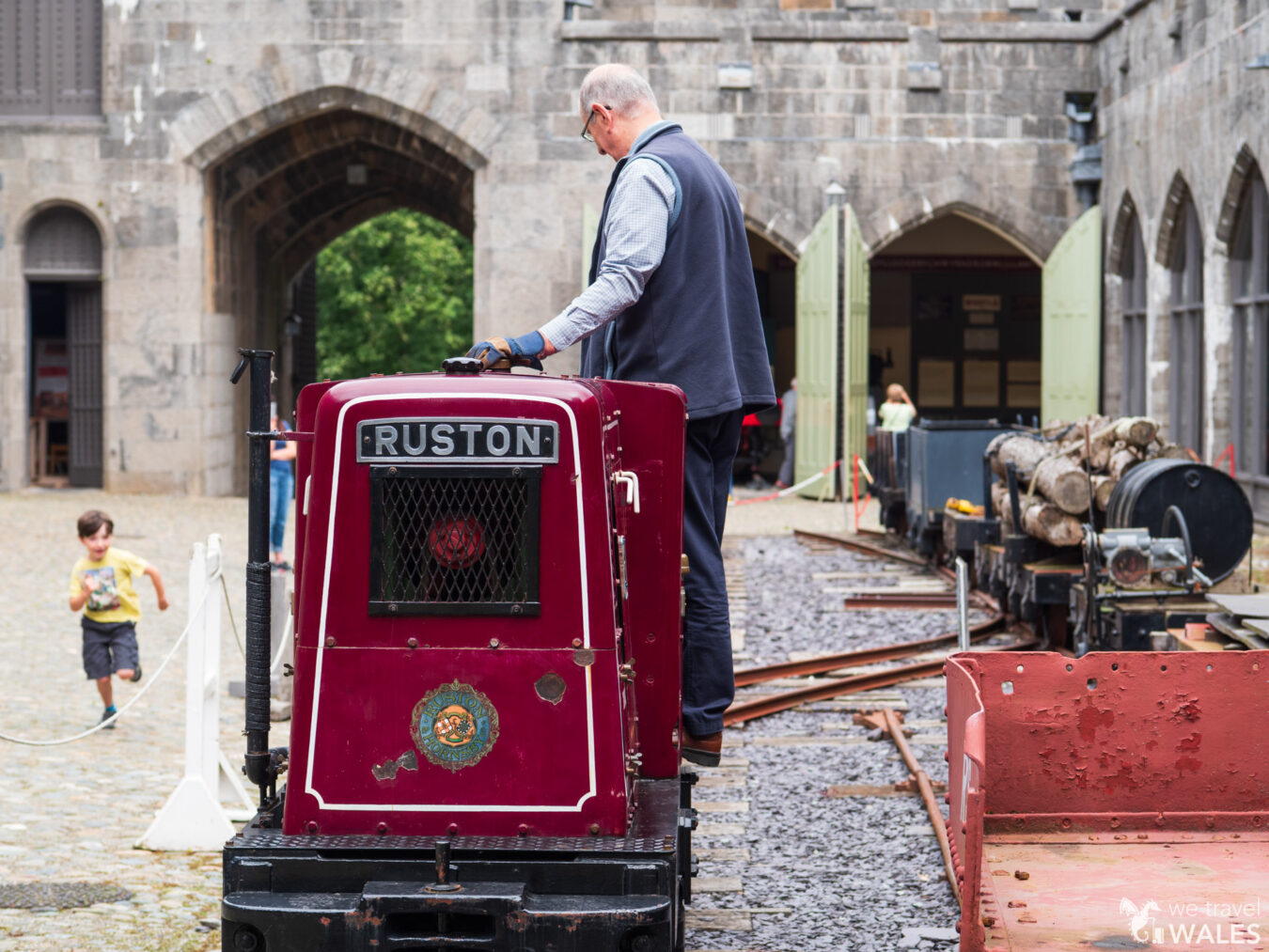

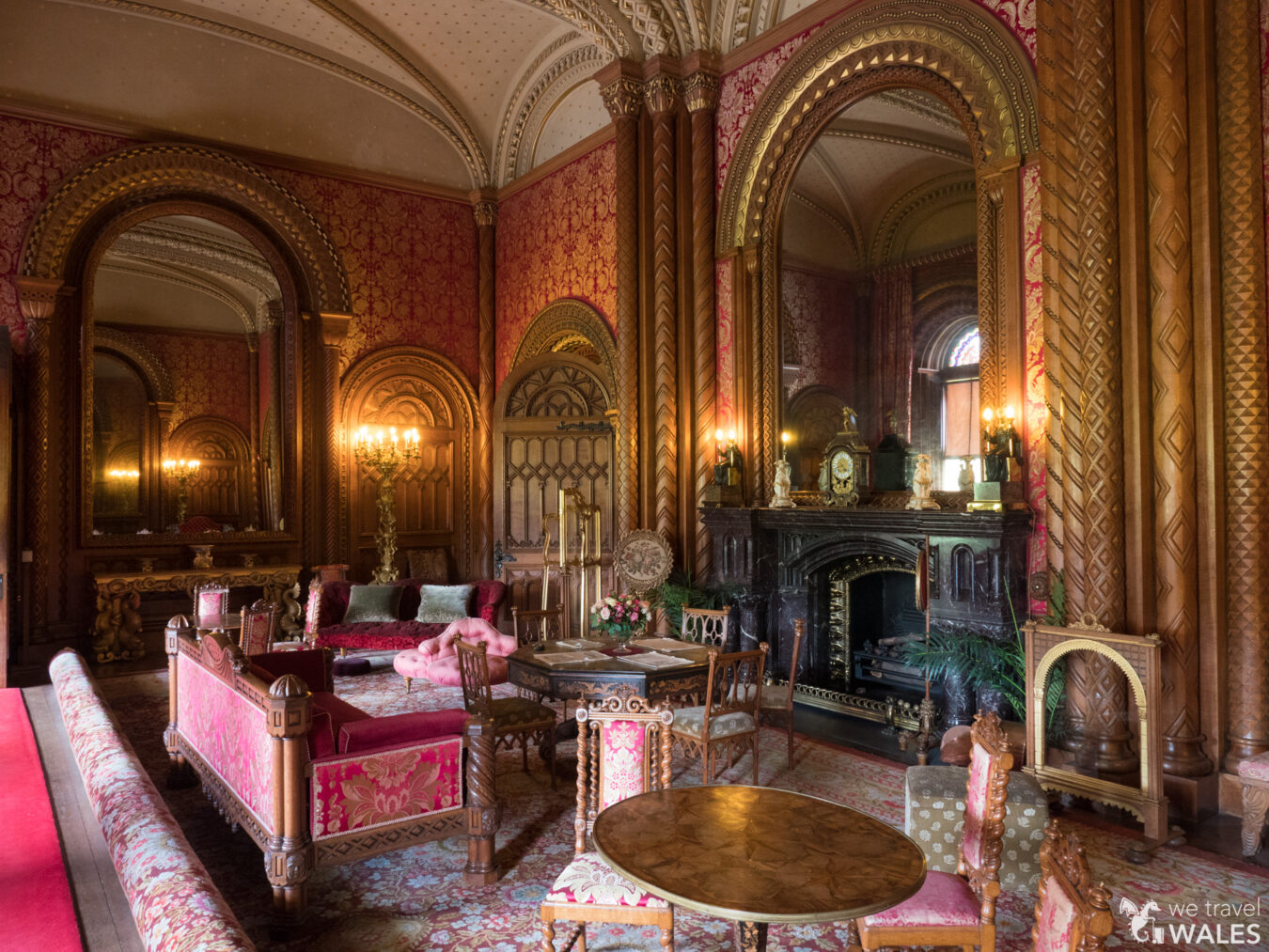
As a National Trust property, Penrhyn Castle offers the usual visitor facilities, including a large car park, toilets, and a café. There is also a heritage Railway Museum.
more castles to explore!
If you’re interested in castles — one of the major attractions in Wales, after all — there are three relatively close by that you shouldn’t miss.
The first is Caernarfon Castle, one of the greatest buildings of the Middle Ages, with its scale and distinctive architecture that make it truly stand out. Located at the mouth of the River Seiont, it’s an unmissable site, and the views from its towers across the town and harbour are superb.
The second is Beaumaris Castle, on the other side of the strait (around a 25-minute drive away). Known as “the greatest castle never built,” it was designed with near-perfect symmetry but never completed. Despite this, it remains one of the finest examples of medieval military architecture in the country. Read more about Beaumaris Castle in our dedicated article.
Last but not least, Conwy Castle lies about 25 minutes away in the opposite direction — and it’s my personal favourite. One of the best-preserved medieval fortresses in Britain, it offers the chance to walk a full circuit around its battlements and enjoy breathtaking views in every direction. The surrounding ring of town walls is also well worth exploring. Read more about Conwy Castle in our dedicated article.
5. Get Mesmerised by Aber Falls
One of the most beautiful waterfalls in Wales is easily accessible by car, approximately a 20-minute drive from Bangor. Known as Rhaeadr Fawr in Welsh (“Big Waterfall”), it is located at the northern foothills of the Carneddau mountain range and forms part of Afon Goch’s (Red River) final descent to the Menai Strait.
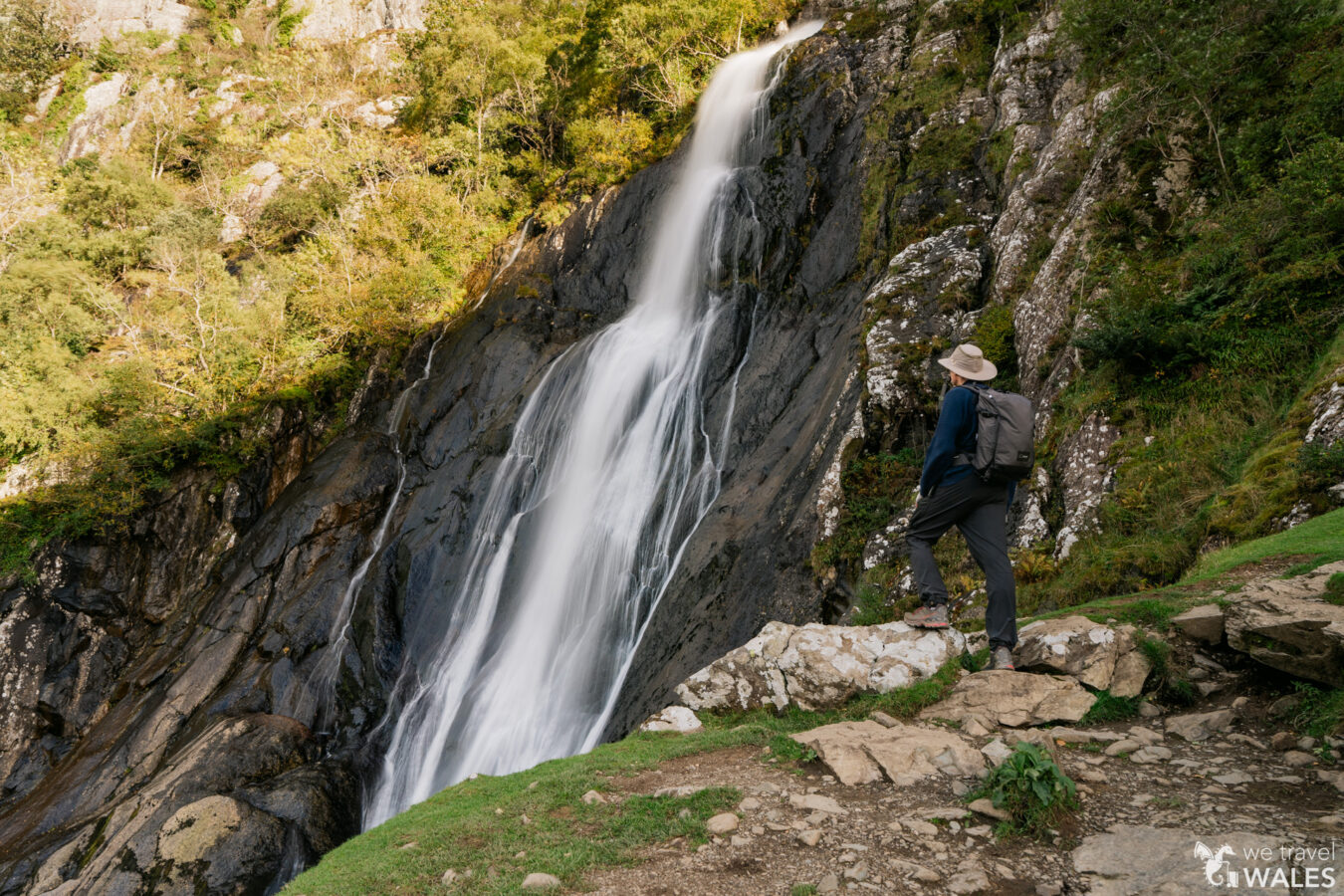
See Aber Falls (lower car park) on
Google Maps | Apple Maps
The walk from the car park takes around 45 minutes along a wide, well-maintained track that is suitable for pushchairs. Do note, however, that some sections closer to the waterfall may be challenging for conventional wheelchairs.
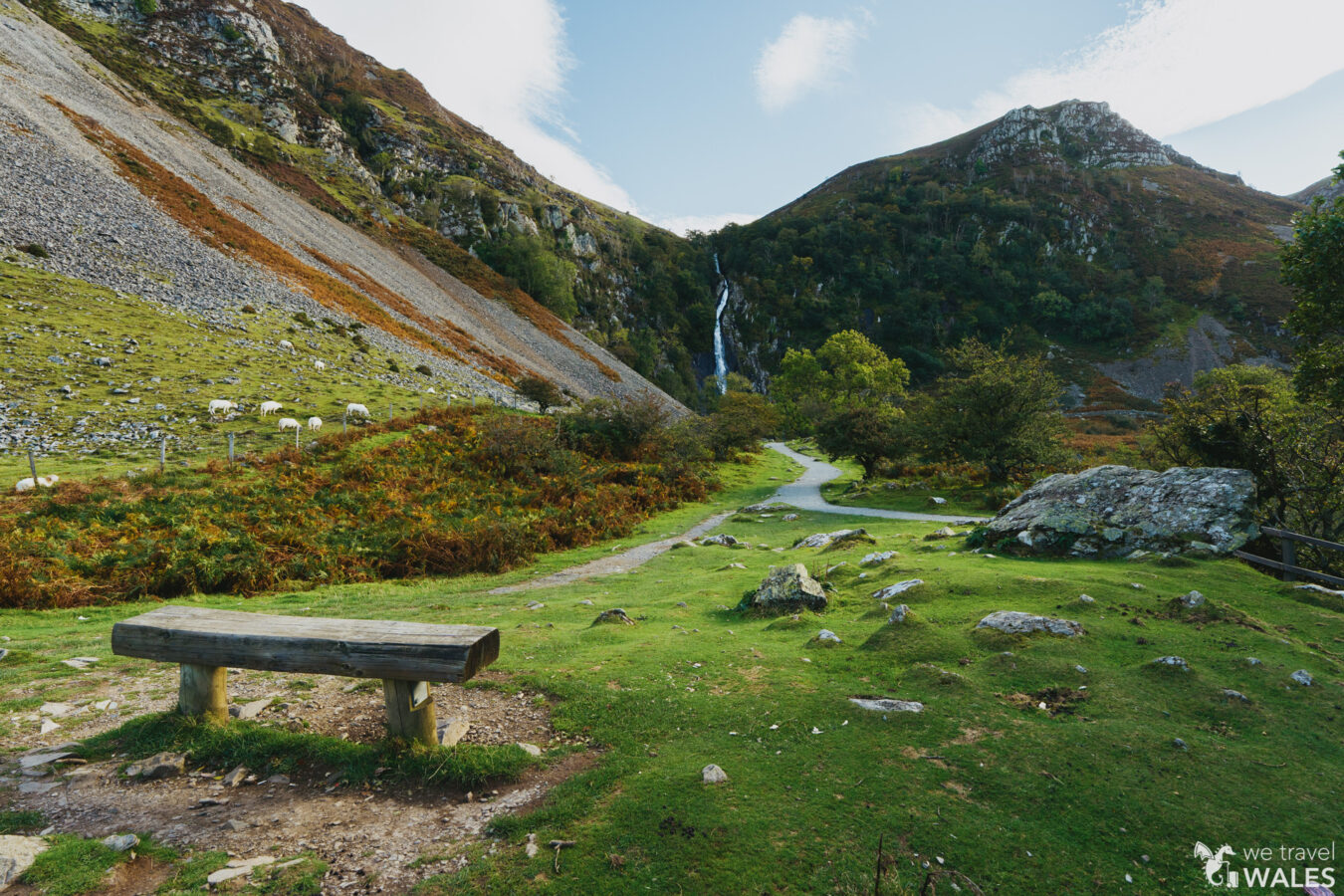

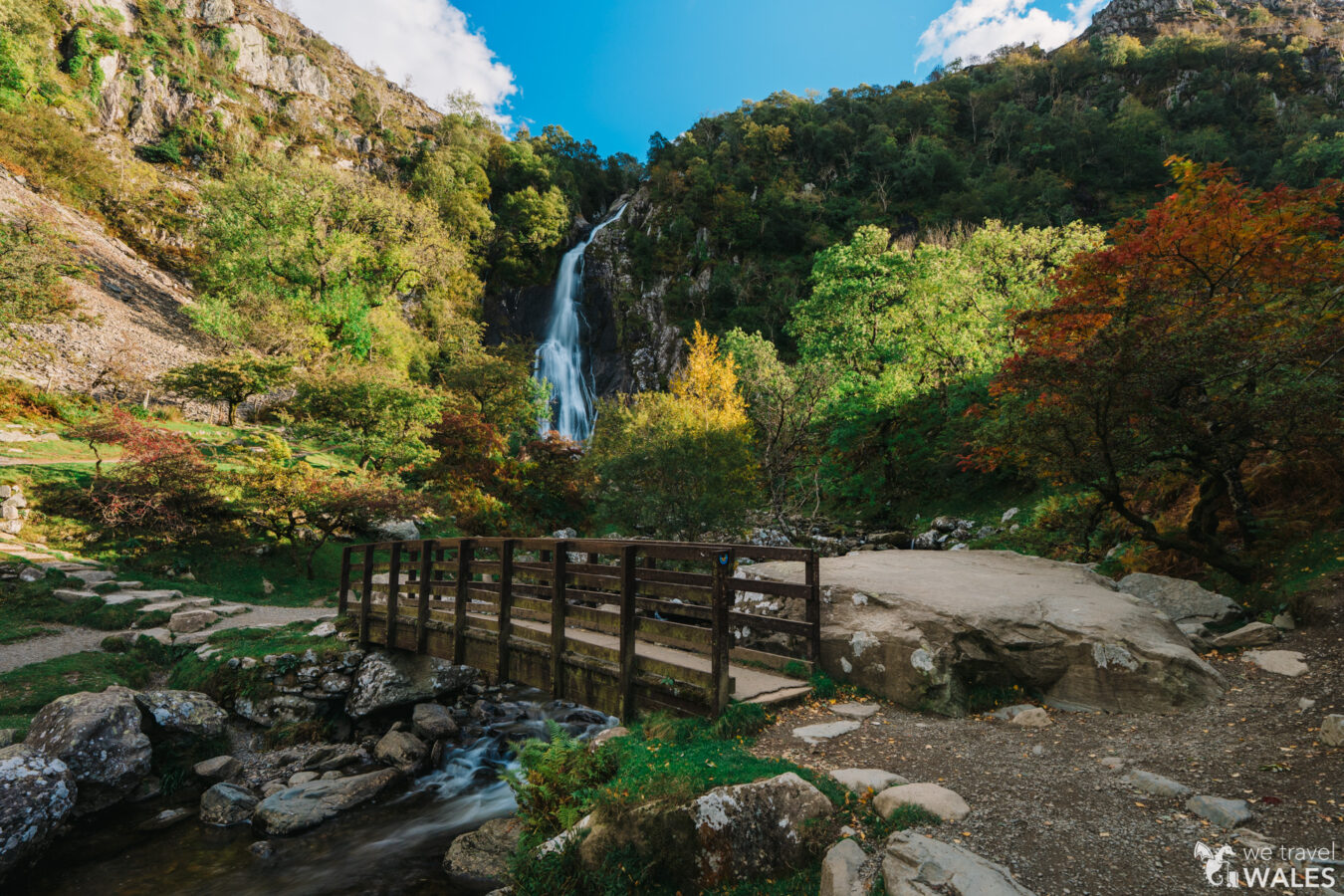
A five-minute walk west along the North Wales Path will bring you to a second, lesser-known but charming waterfall, Rhaeadr Bach (“Little Waterfall”), which is also part of the river of the same name.
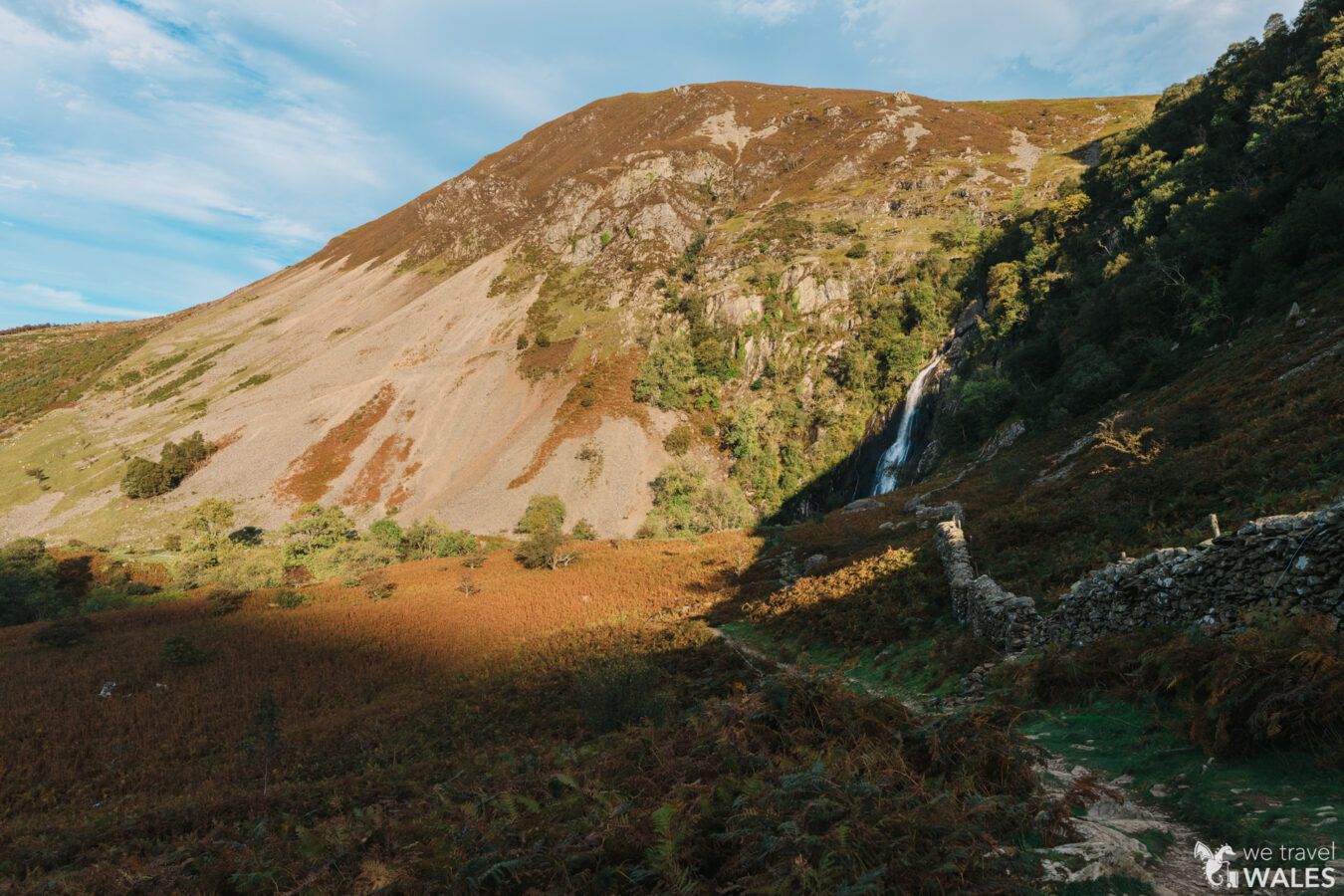
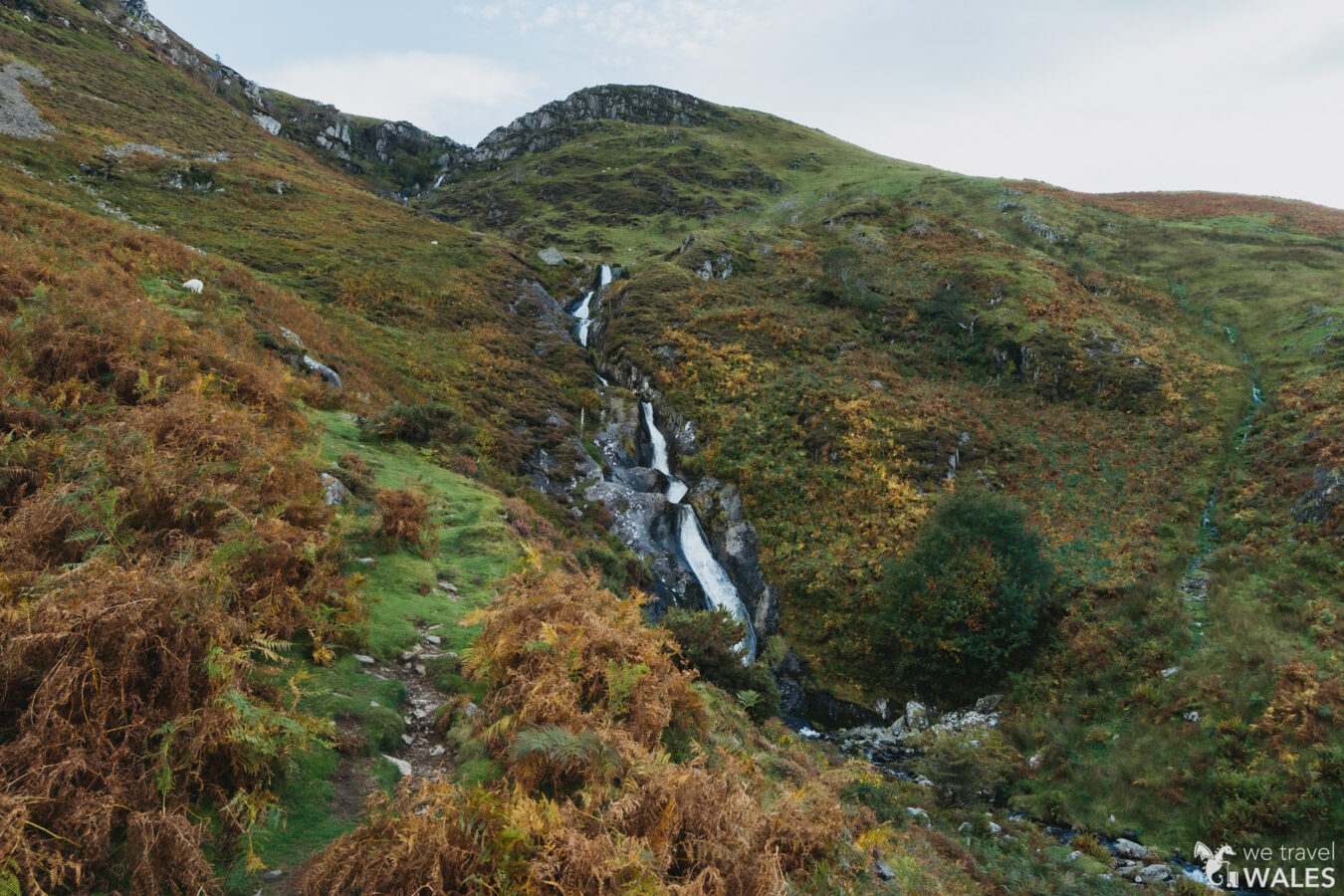
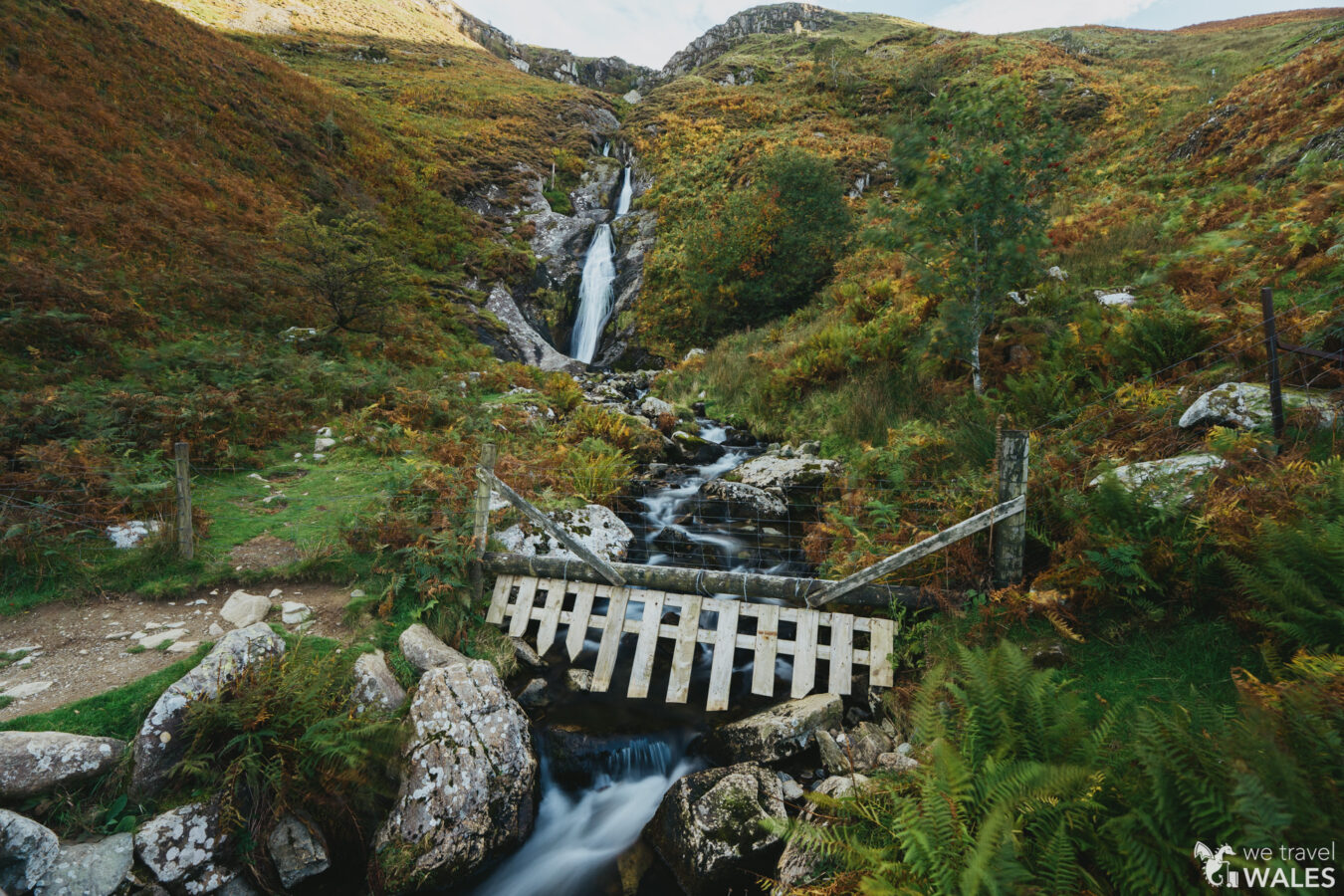
There are picnic tables at both the lower and upper car parks, with the one at the upper car park being accessible. The most accessible starting point is located between the two car parks. See my vlog about Aber Falls below for more details.
parking
There are two car parks at the start of the walk, each costing £5. The upper car park closes at 5pm and has a toilet on site. To reach them, you drive along a narrow road of about 0.7 miles (1.2 km) with only a few passing places. As this is a very popular spot, especially during holidays, you may find yourself waiting for oncoming traffic and having to decide who will reverse. And after all that effort, there’s still a chance the car parks could be full.
A third car park is located at the town entrance (G Maps), just off the North Wales Expressway. It’s free, but requires an extra walk to reach the start of the trail. Please do not park elsewhere, as this would obstruct local residents.
6. Check the Village with the Longest Name in Europe
Just across the Menai Strait, via the Britannia Bridge, lies the village of Llanfairpwllgwyngyll, best known for the long version of its name: Llanfairpwllgwyngyllgogerychwyrndrobwllllantysiliogogogoch, which translates as “St Mary’s Church in the hollow of the white hazel near a rapid whirlpool and the Church of St Tysilio near the red cave.”
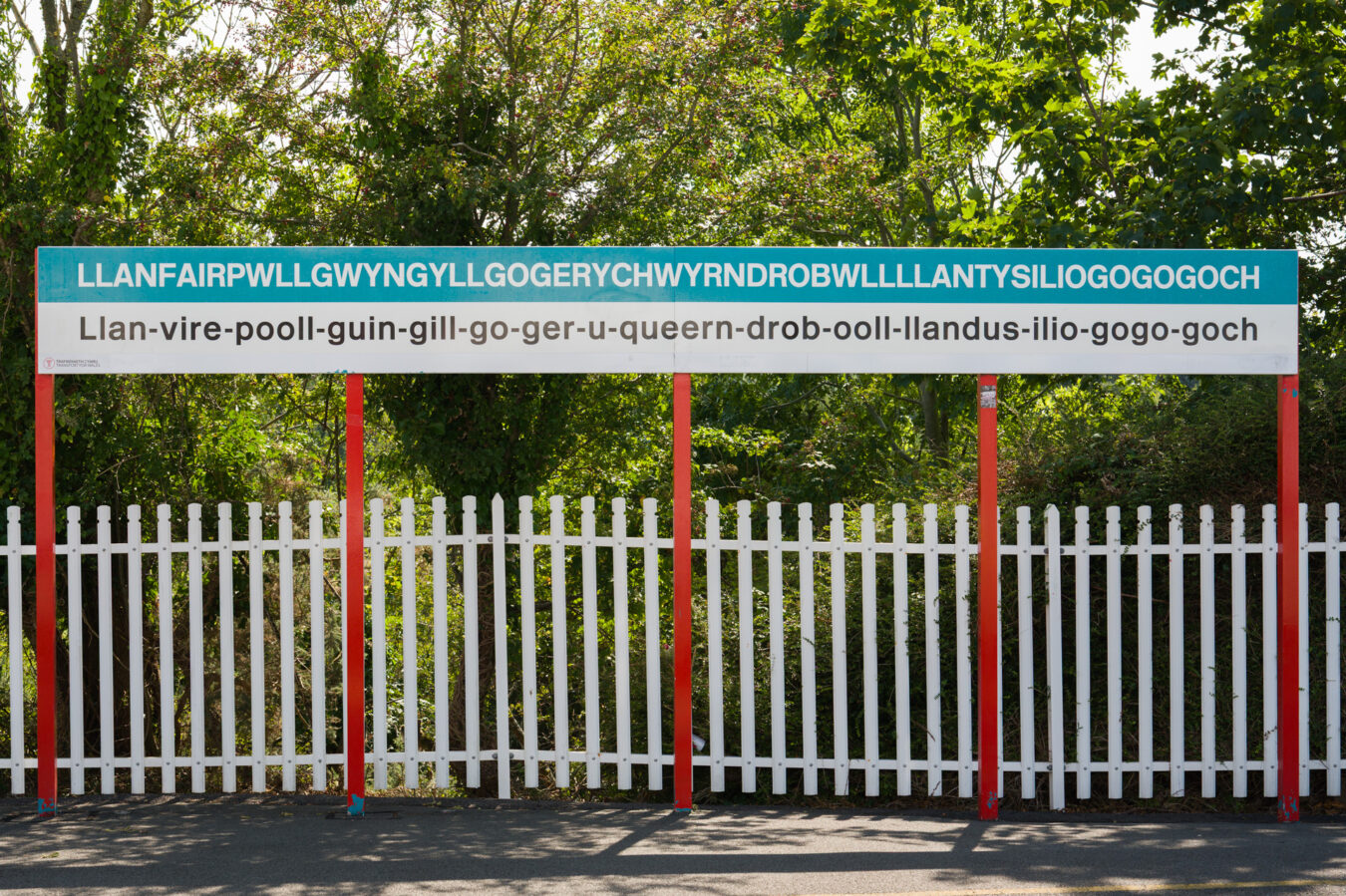
See Llanfairpwllgwyngyll on
Google Maps | Apple Maps
The main attraction here is the iconic train station, where visitors love to take photos of the signs — and perhaps even have a go at reading the full name! There’s also a shop and a restaurant beside the station car park, making it a convenient stop for refreshments.
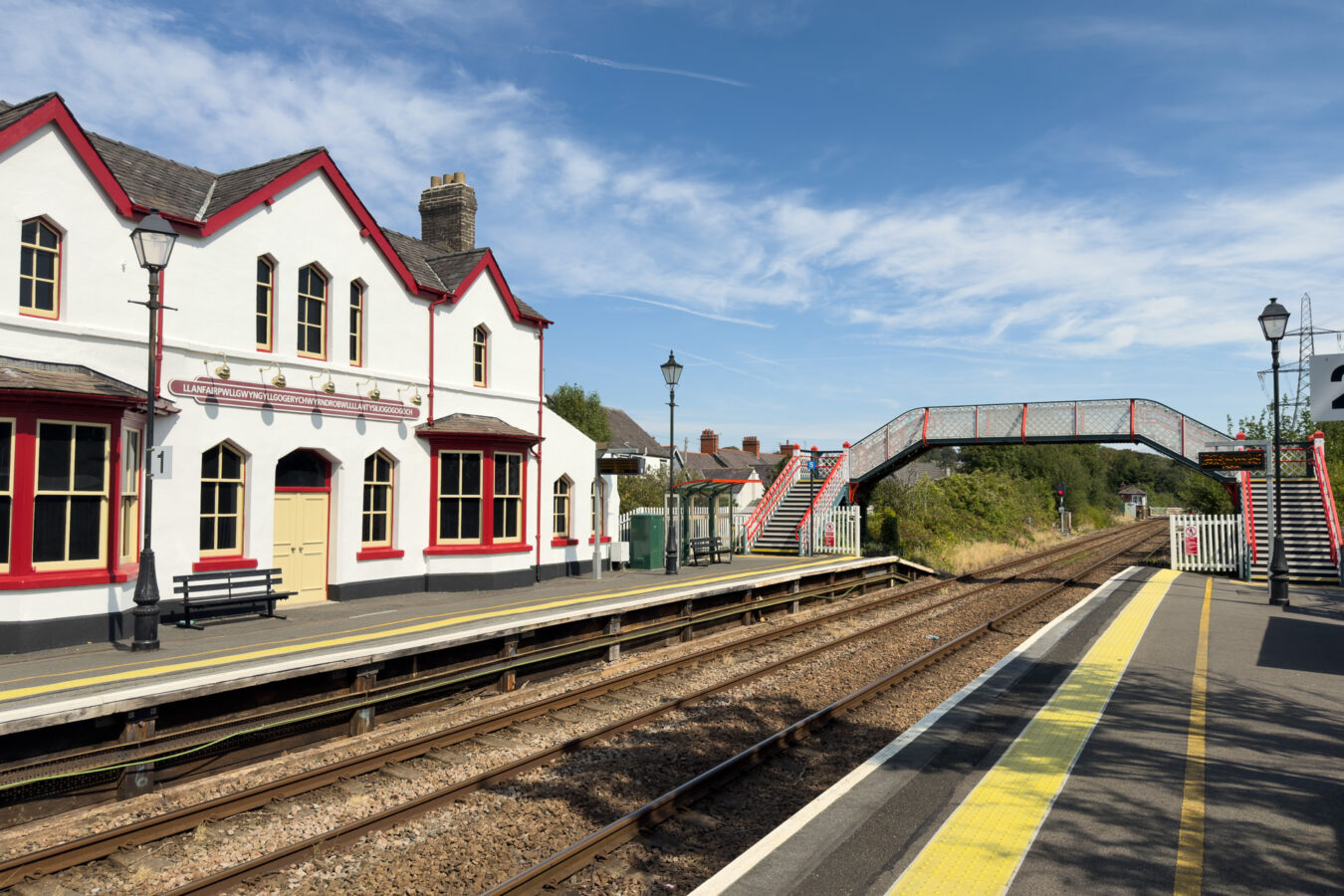
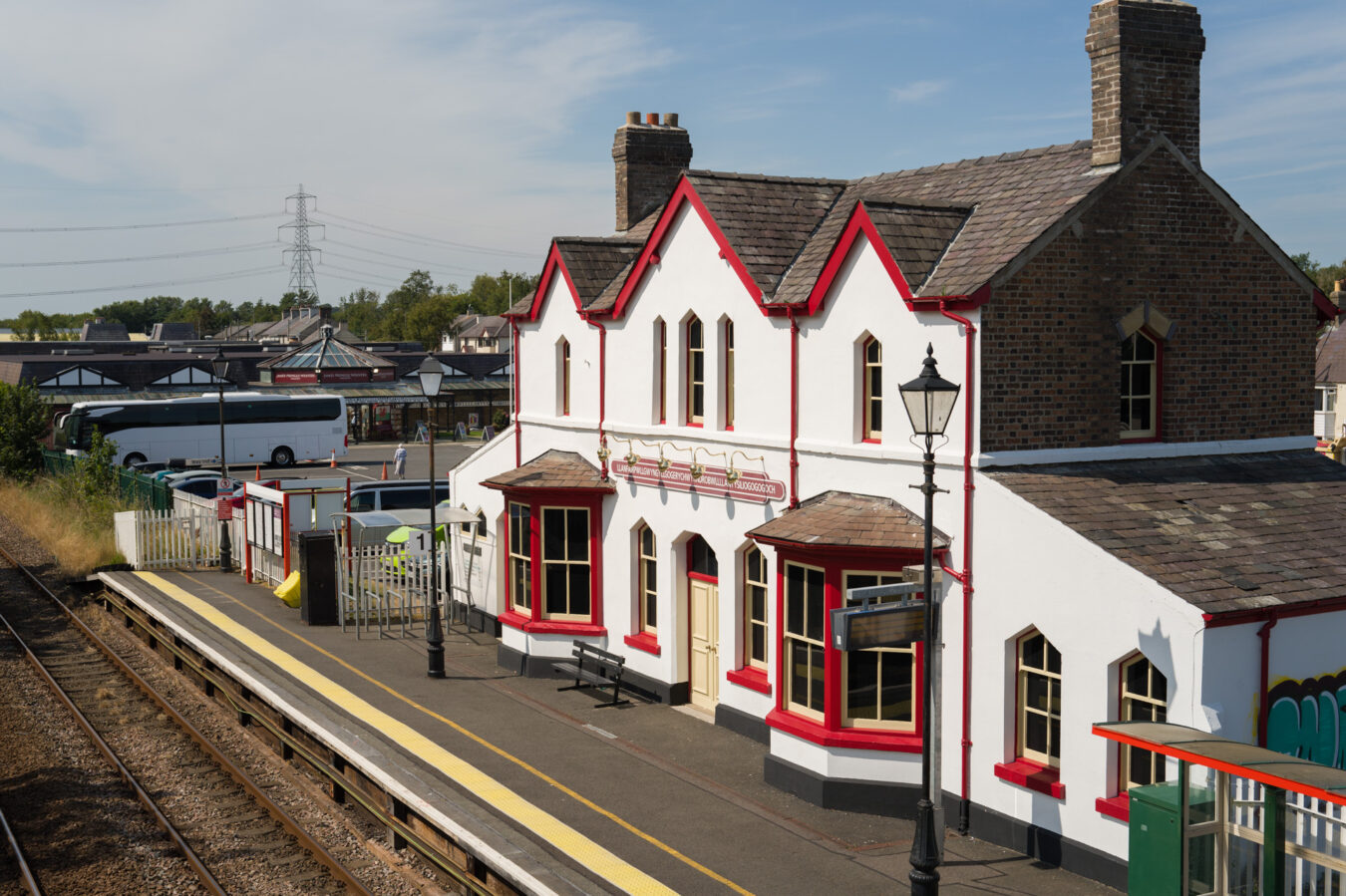
Additional read:
At the edge of town, you’ll also find the Marquess of Anglesey’s Column, just a four-minute drive from the train station. You can climb the 27-metre-high column via 115 steps to enjoy fantastic views of the Menai Strait, the bridge, and the mountains of Snowdonia National Park. There is also a café on site, perfect for a break after your climb. Tickets are £5 (adult) and £3 (children) and the site is open Tuesday to Sunday from 10 a.m. to 4 p.m.
The internal car park is for disabled access only. Another, larger car park is located just next to the A5 road (Google Maps). From there, you then walk through a woodland for a short time. Please note that the terrain is uneven.
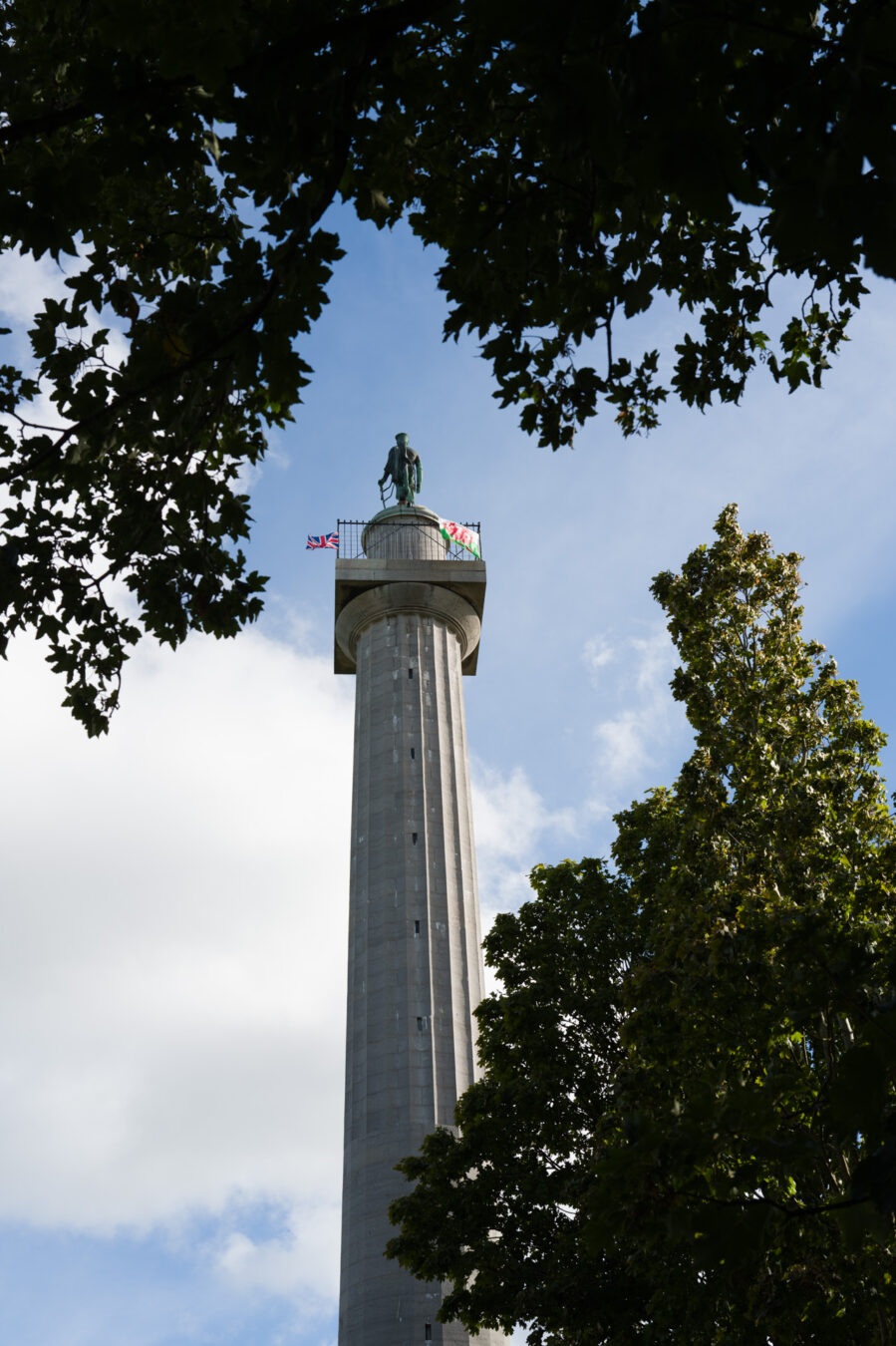
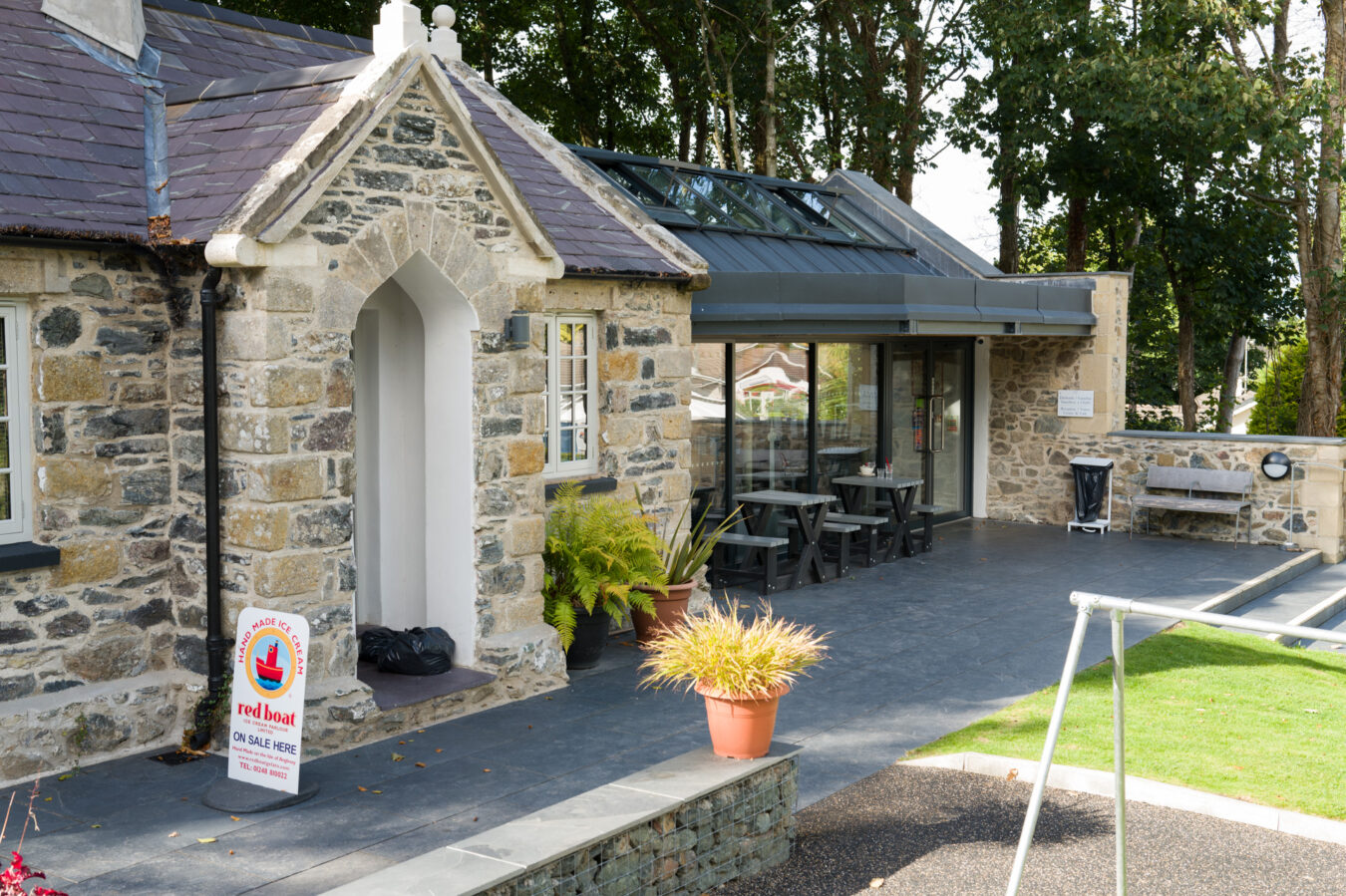
an extra attraction for the whole family
Just five minutes north of Llanfairpwllgwyngyll, you’ll find Pili Palas Nature World, home to meerkats, spiders, lizards, snakes, a butterfly house, and more. There are also outdoor play areas, a café, and a shop — an ideal place to spend a few hours with the family and your little ones!
It is open from late March to late October. Entry fees are £12.95 for adults and £11.95 for children. See the Pili Palas website for details.
7. Take a Cruise on the Menai Strait
The Menai Strait (or Afon Menai, as it is known locally) separates Anglesey from mainland North Wales. It forms part of the Menai Strait and Conwy Special Area of Conservation and encompasses a wide range of habitats as well as a variety of bird species.
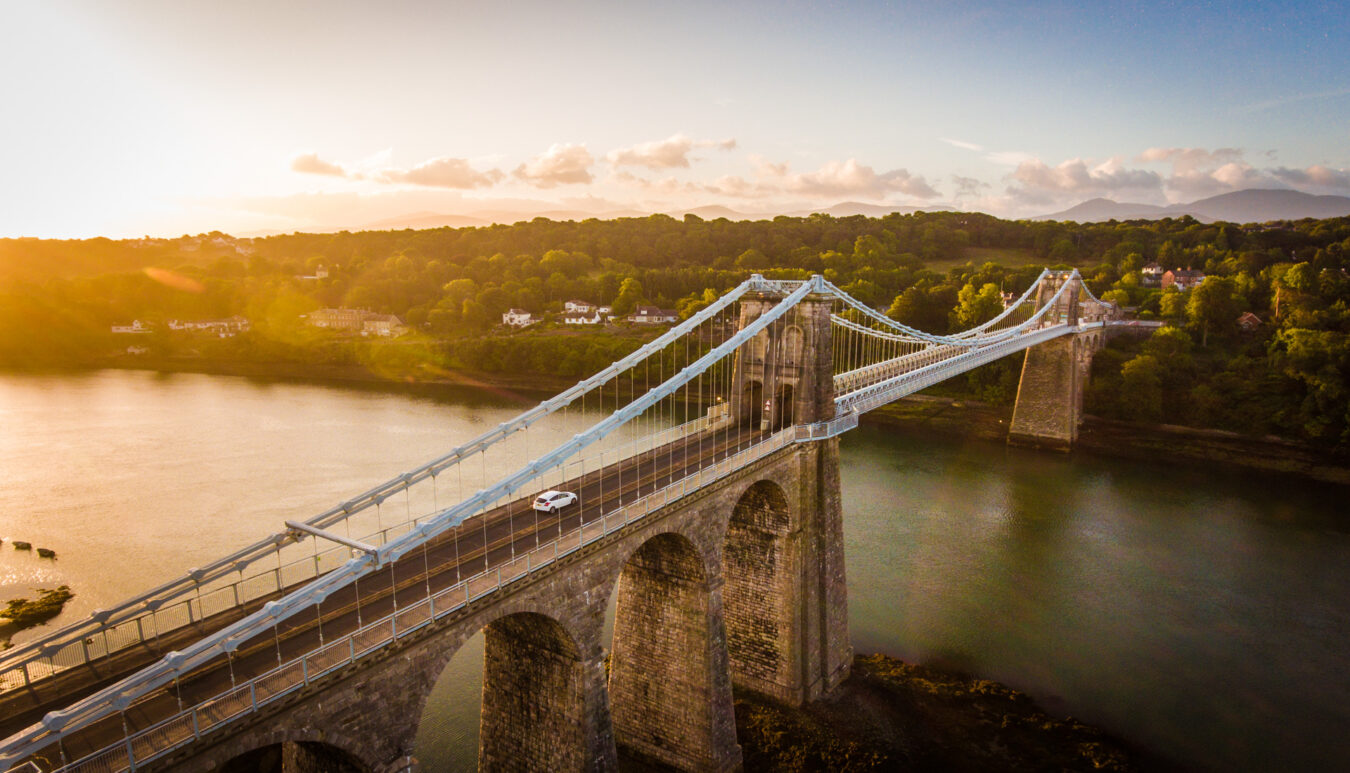
Two iconic bridges — the Britannia Bridge and the Menai Suspension Bridge — allow trains, cars, and cyclists to cross the strait. The Suspension Bridge can also be crossed on foot, offering unique views of the waterway and its small offshore islands, as well as the central section known as the Swellies, characterised by strong, reversing tidal flows, rapid currents, and swirling whirlpools.
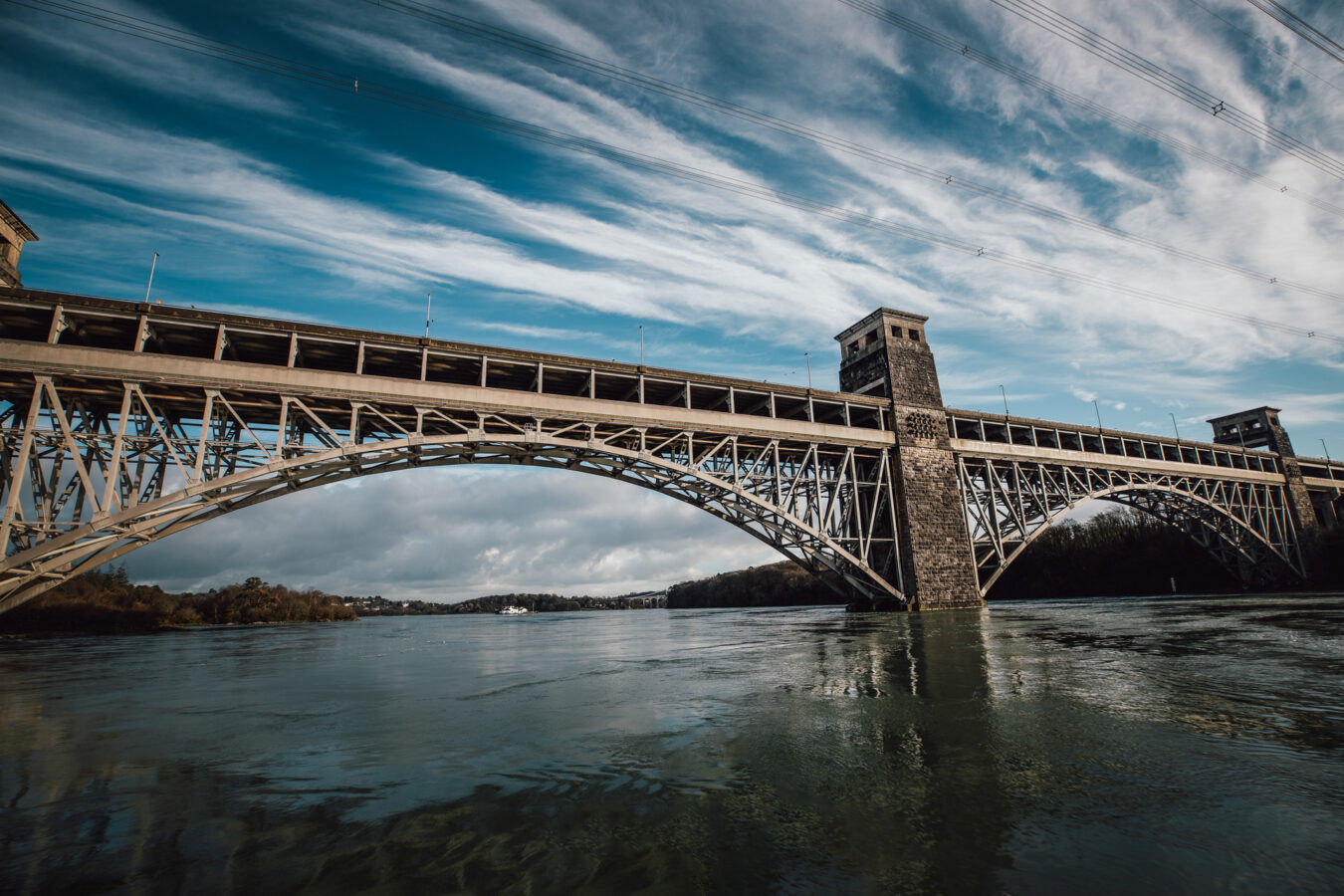
the bridges
- The Menai Suspension Bridge was completed in 1826. It was the first major suspension bridge in the world at the time. Today it is a Grade I listed structure.
- A recent survey in October 2025 found it needed urgent repairs, and the bridge is partially opened at the time of publishing this article.
- The Britannia Bridge was completed in 1850 to allow a critical rail connection from Chester to Holyhead in Anglesey, which also facilitated a sea link to Dublin.
One of the best ways to experience the Menai Strait is from the water, and fortunately, several companies offer cruises that take you to the most interesting spots. There are also plenty of watersports activities available if you’re interested in sailing, windsurfing, and more.
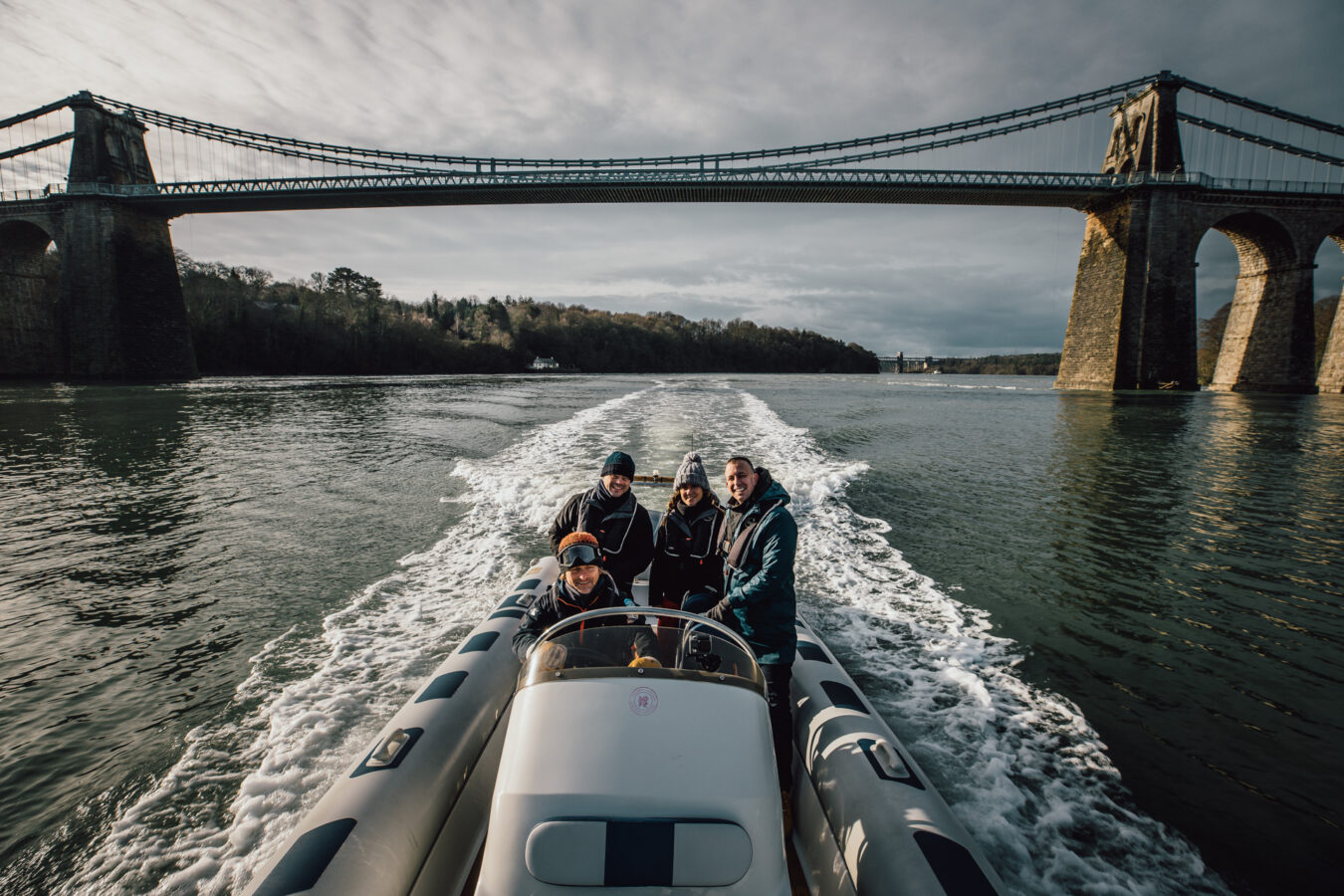
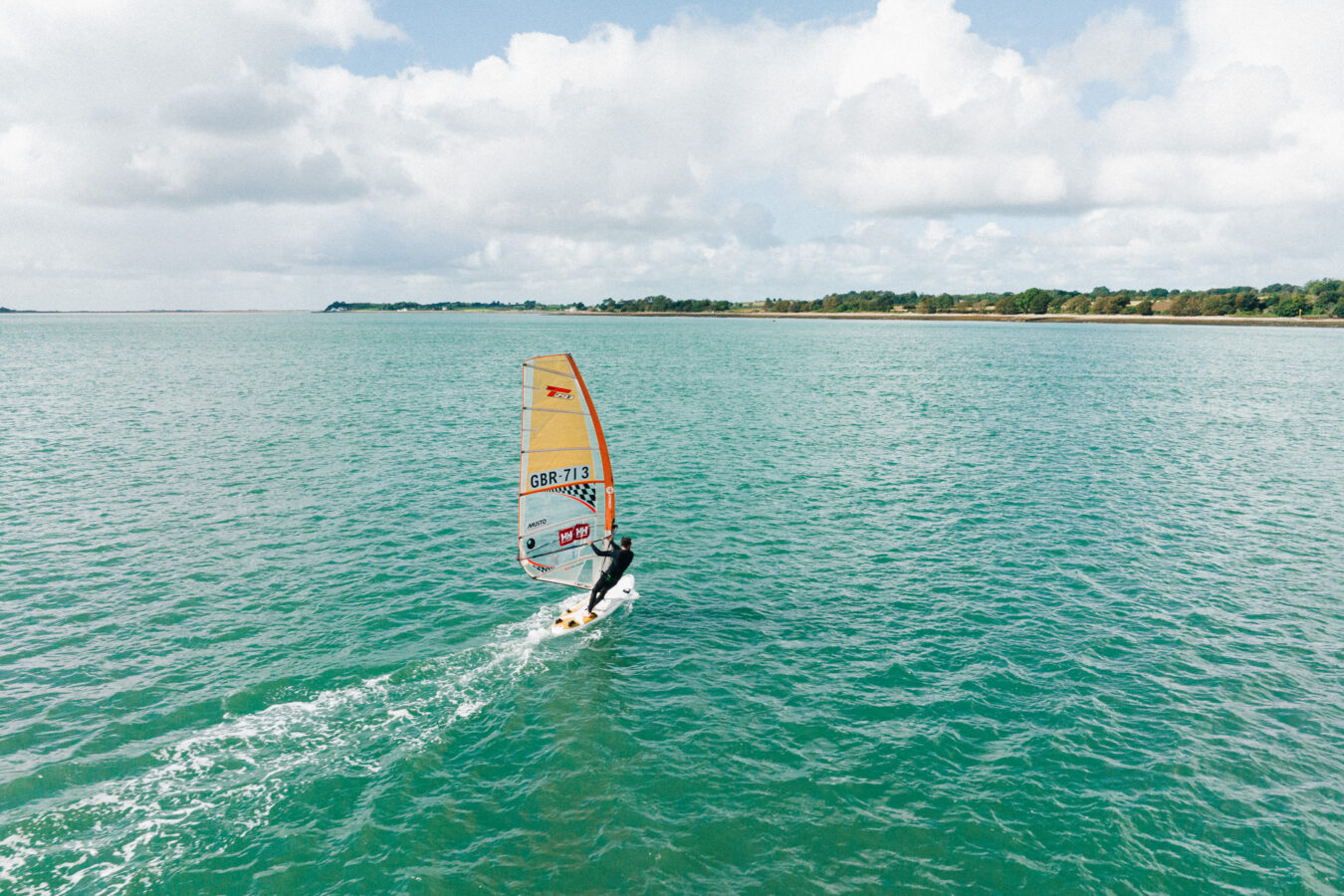
Wildlife enthusiasts will be pleased to know that you can take a boat trip from Beaumaris to Puffin Island, located at the north-eastern entrance of the Menai Strait. Here, you’ll have the chance to spot Atlantic grey seals and a variety of seabirds, including guillemots, razorbills, kittiwakes, and, of course, puffins. The best time to visit is between April and July.
Several operators offer trips to Puffin Island and cruises along the strait, including Seacoast Safaris, Menai Strait Cruises, Starida, and Rib Ride.
8. Visit Plas Newydd
This is the second National Trust site on the list, but one you won’t want to miss if you love gardens and stately homes. Plas Newydd offers 40 acres of beautifully maintained gardens, along with 129 acres of peaceful woodland where you might spot a red squirrel if you’re lucky — there’s even a hide for observers and photographers willing to wait patiently.
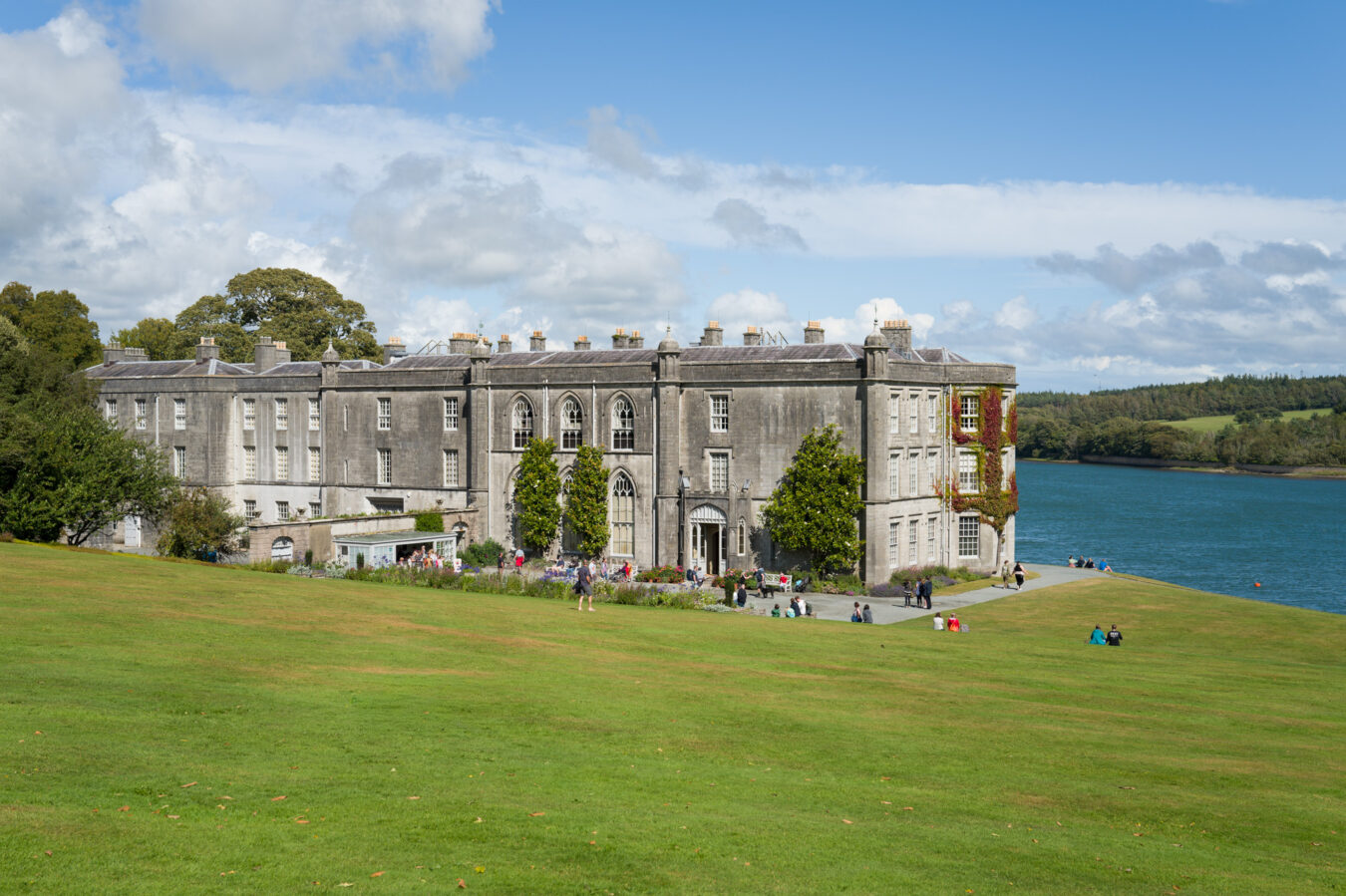
See Plas Newydd on
Google Maps | Apple Maps
The view of the Grade I-listed house, whose origins date back to 1470, is truly iconic. Set on the shore of the Menai Strait, it’s a favourite spot for visitors to sit on the grass and relax on a sunny day. Inside the house, you’ll find a fascinating blend of military history, theatre, and art, including an impressive mural by artist Rex Whistler — one of the largest and most celebrated murals in the UK.
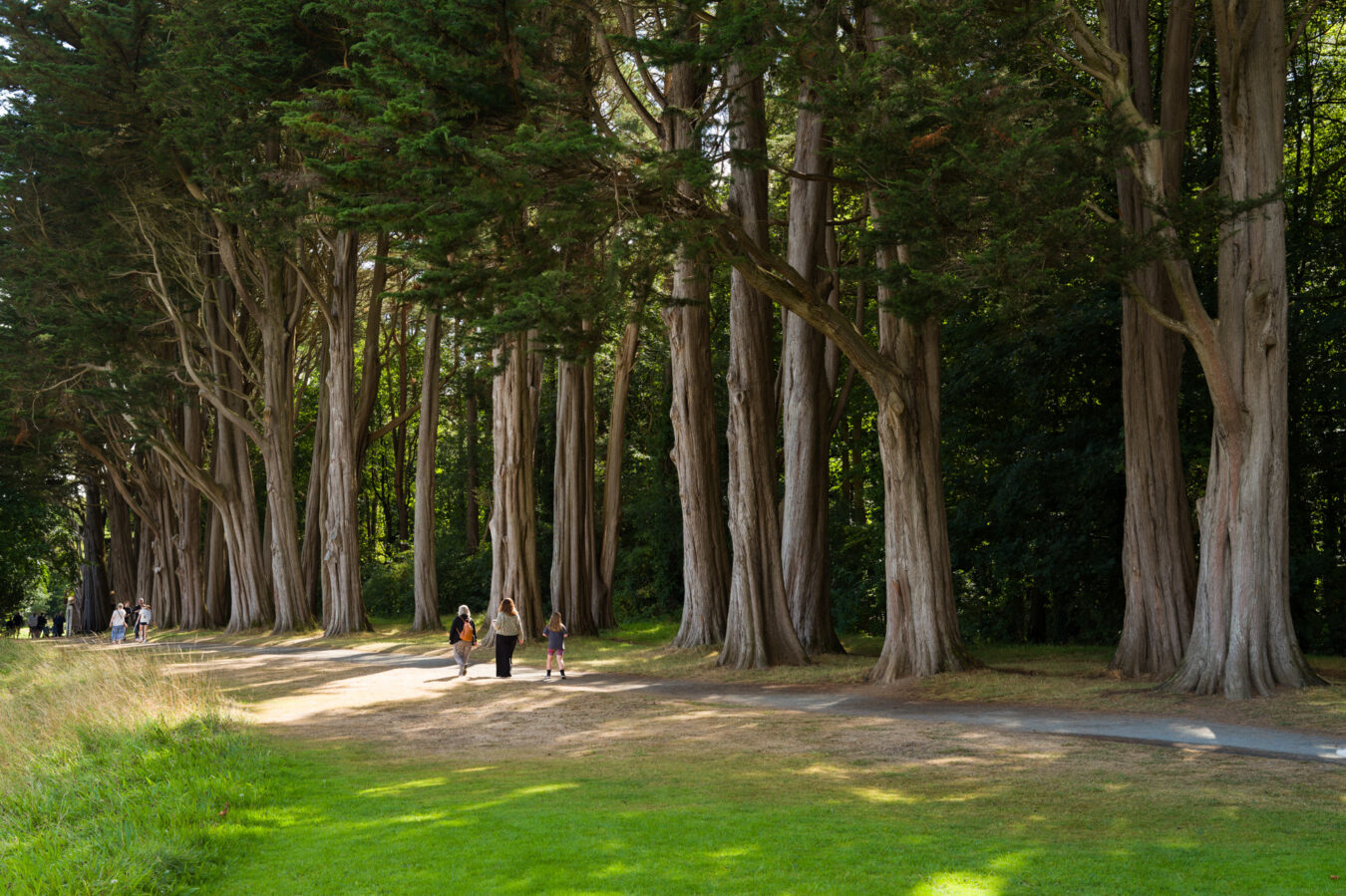
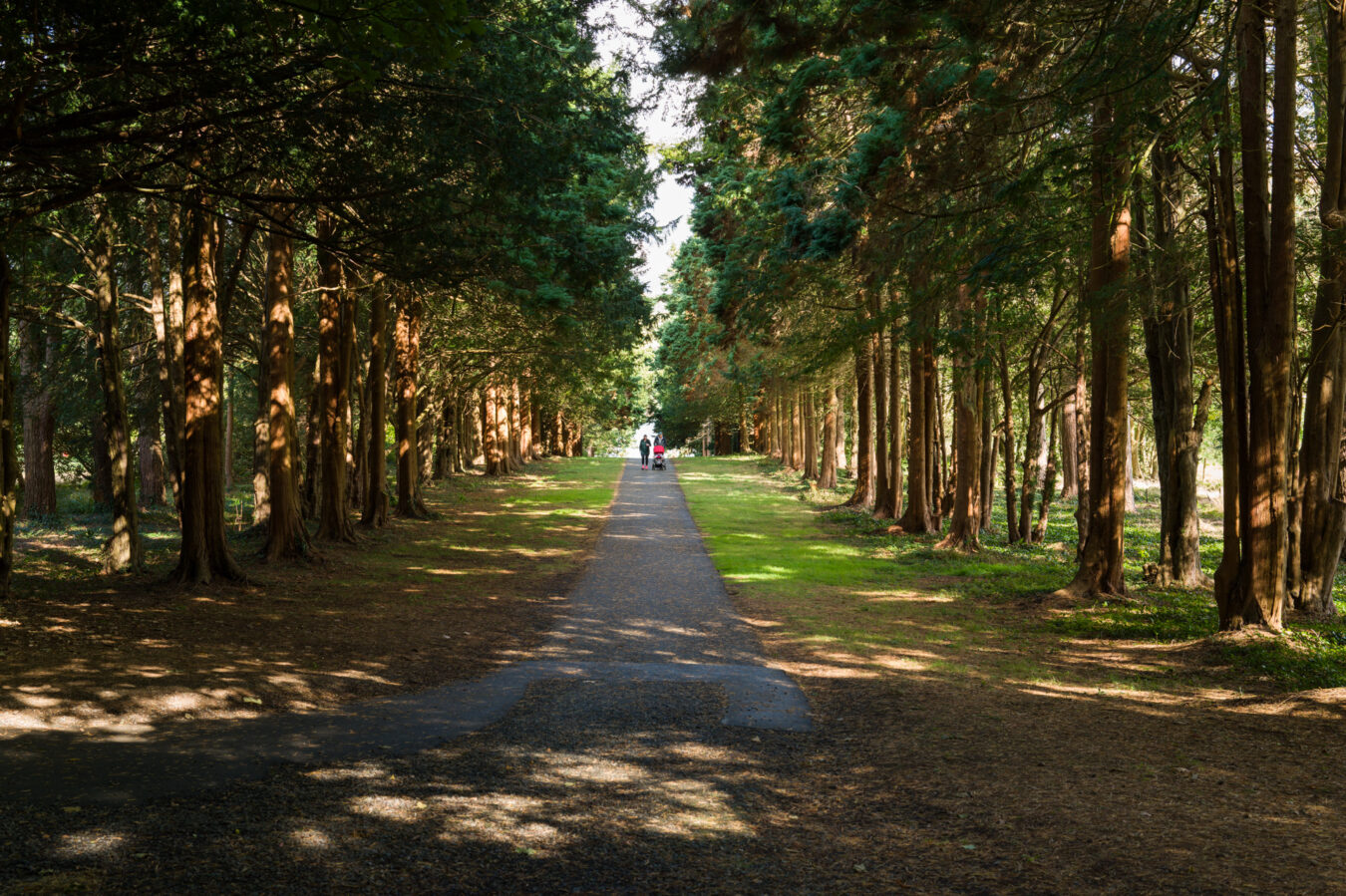
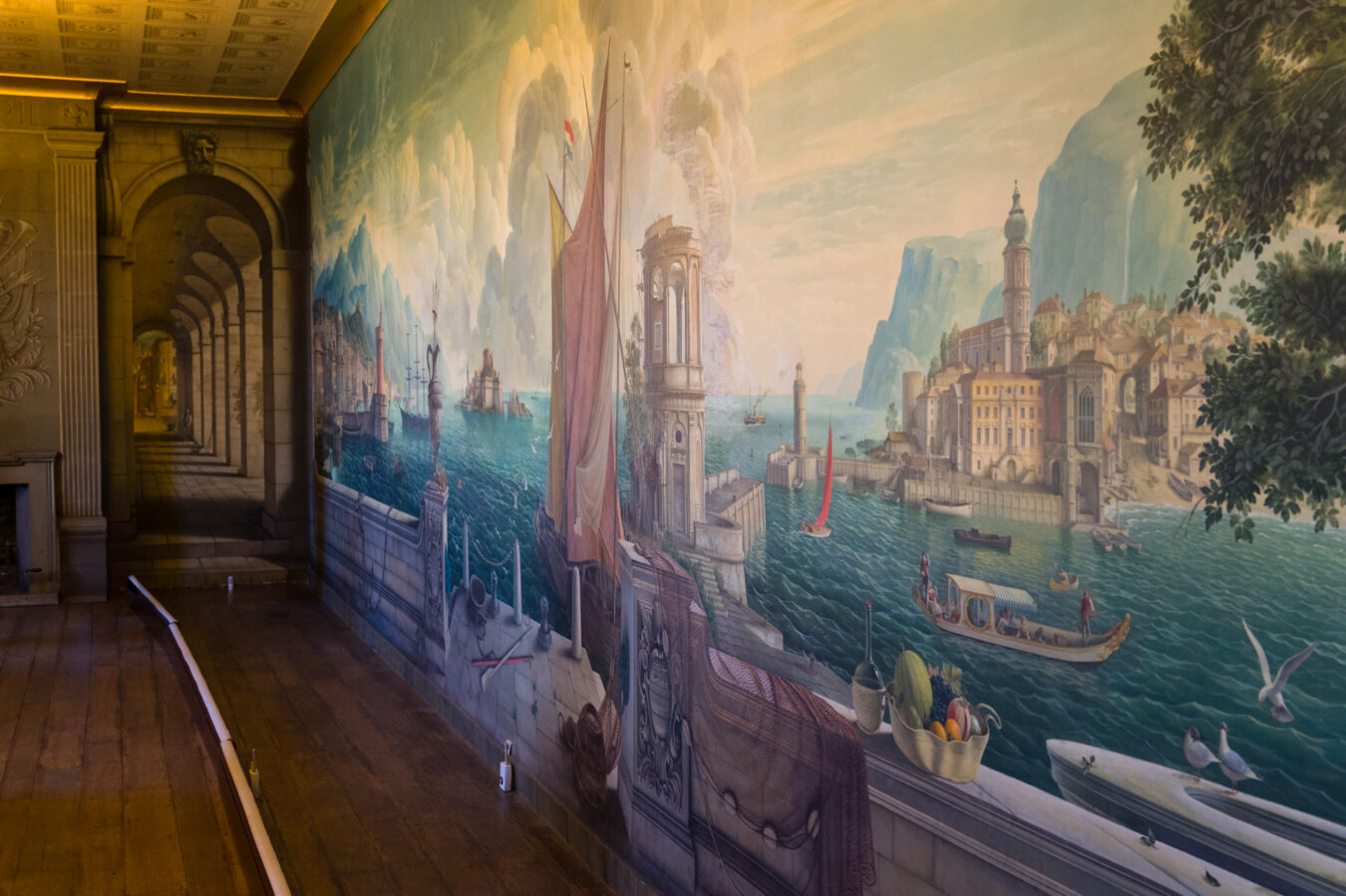
Quick trivia
- In 1812, the estate passed to Henry William Paget, who would later be appointed cavalry commander, leading the British heavy cavalry in a spectacular charge at the Battle of Waterloo. He lost a leg during the battle and was subsequently given the title 1st Marquess of Anglesey in recognition of his bravery and military achievement.
- The Marquess of Anglesey’s Column, mentioned in Chapter 6, was built as a tribute to Paget and his distinguished military career.
Plas Newydd has a large car park, toilets, a shop, and a café serving hot food and drinks. Entry is free for National Trust members; otherwise, it costs £14.30 for adults and £7.20 for children. You can read more about it on the National Trust website.
9. Discover Bryn Celli Ddu
Just west of Plas Newydd, you’ll find another historic site — but this time, one that dates from a much older era. The Bryn Celli Ddu Burial Chamber (Bryn Celli Ddu means “Mound in the Dark Grove” in Welsh) is one of the most important prehistoric landmarks on Anglesey. Developed in several stages, it is believed to have been completed in the late Neolithic period (around 2000 BC).
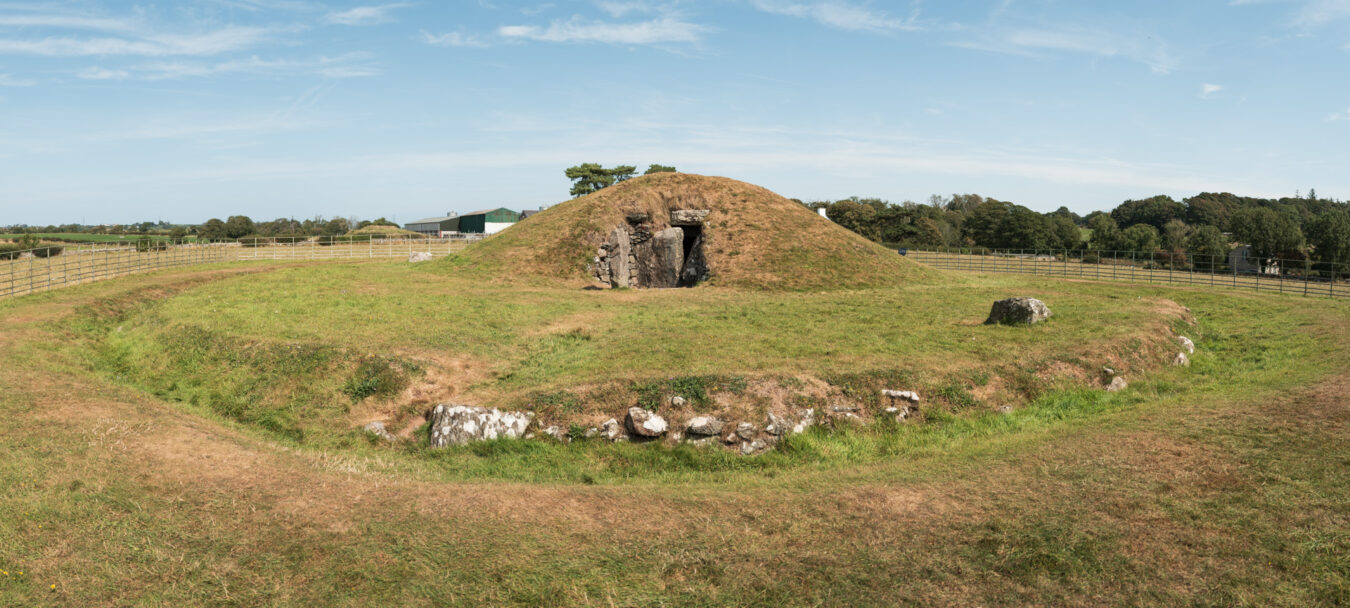
See Bryn Celli Ddu on
Google Maps | Apple Maps
Human bones, arrowheads and carved stones were discovered during excavations in 1928. The mound and passage grave you see today have been reconstructed to resemble how they would have appeared when originally built. You can explore the interior via a narrow passage that leads to a small octagonal chamber.
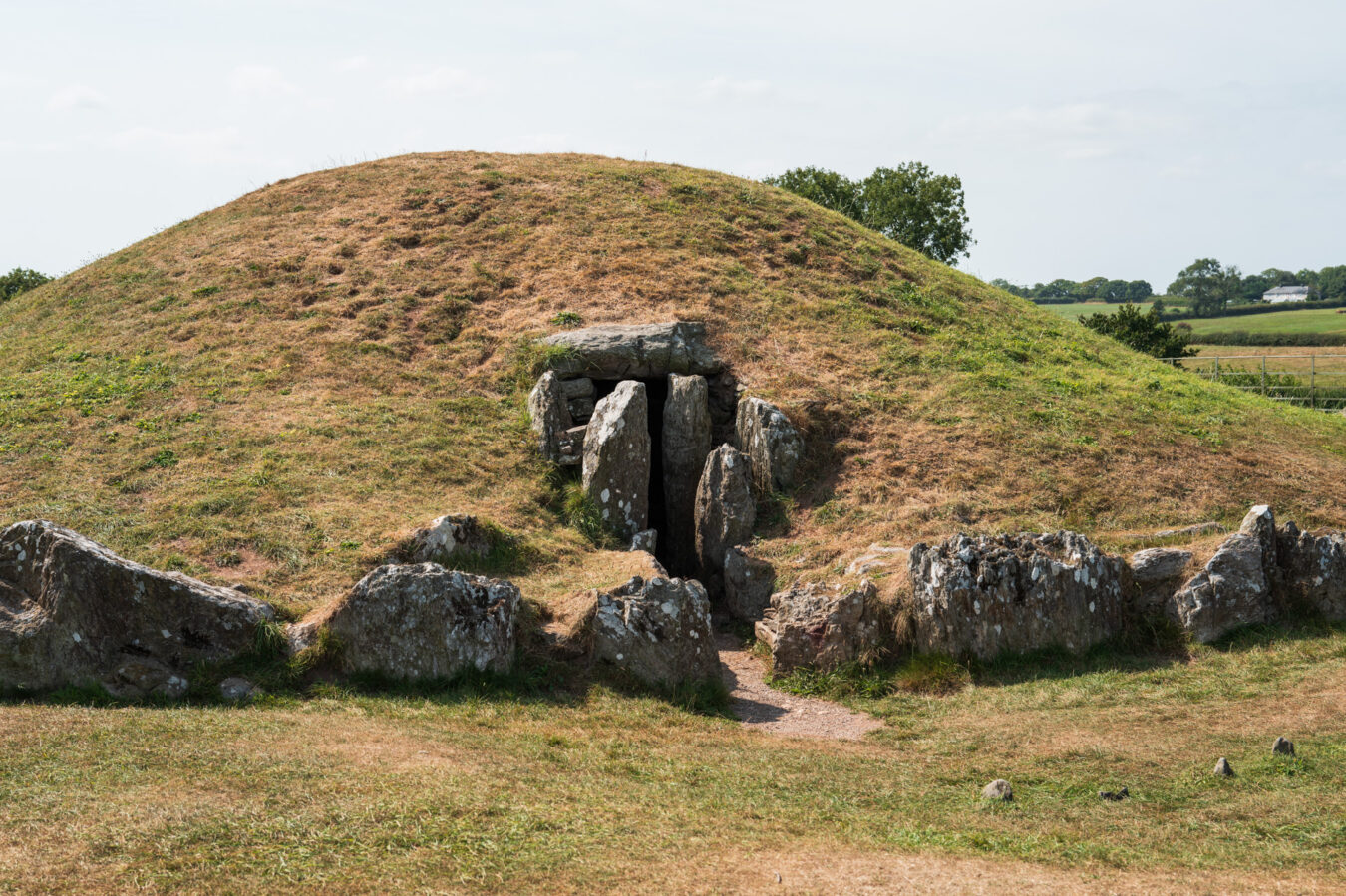
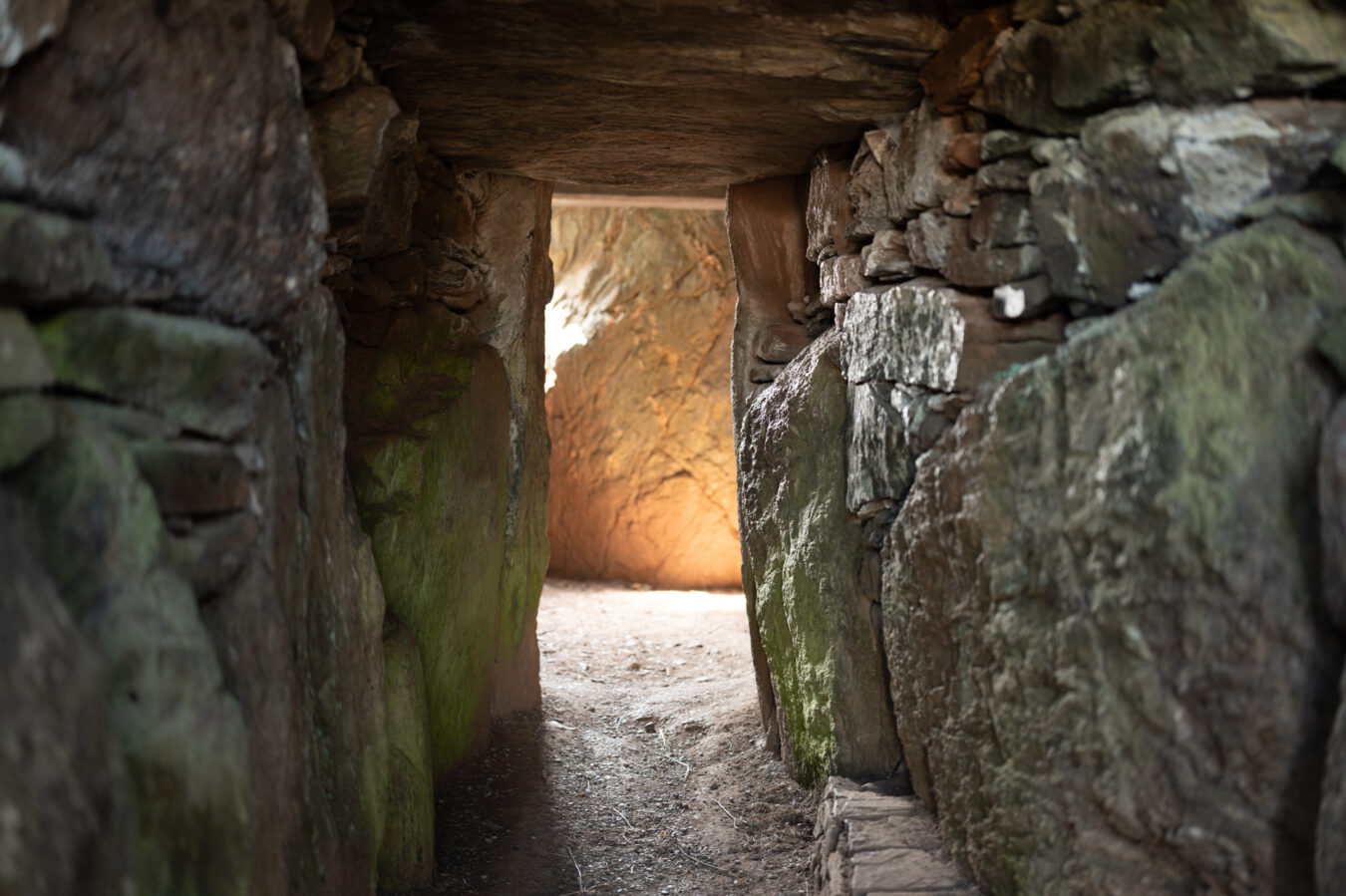
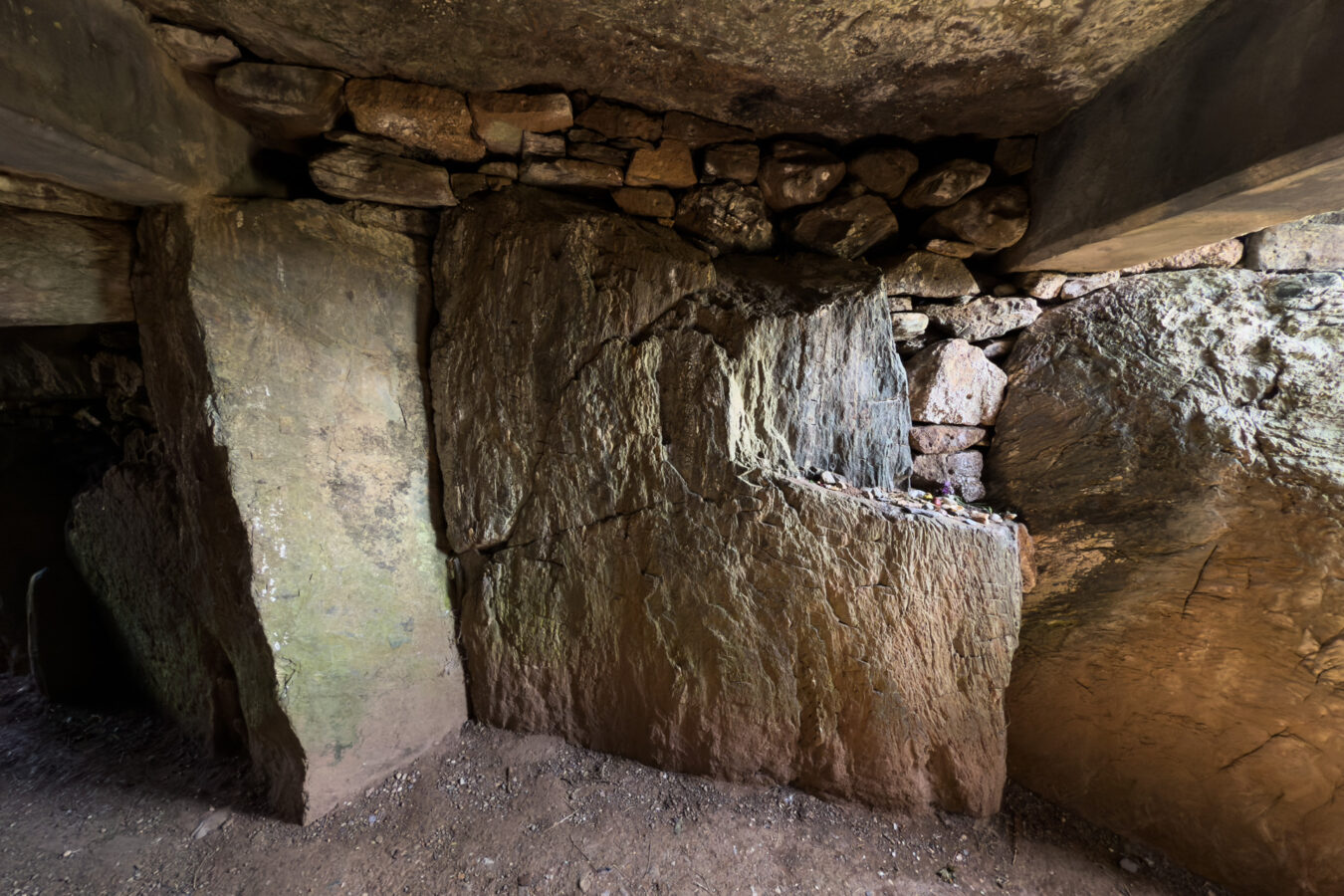
The most remarkable feature of Bryn Celli Ddu can only be witnessed once a year — at sunrise on the summer solstice, when the sun’s rays shine directly down the tomb’s passageway to illuminate the inner chamber. It’s no wonder the site attracts modern-day Druids and archaeological enthusiasts. Entry is free of charge.
parking
- There is a small gravel car park along Pont Y Crug Isaf Road (see the precise location on Google Maps)
- From the car park, it’s about a 10-minute walk to reach the site, and the route is well signposted.
10. Experience an Adrenaline Rush on the Fastest Zip Line in the World
About a 20-minute drive south-east of Bangor is Penrhyn Quarry, which was once the largest slate quarry in the world. It was developed in the 1770s by Richard Pennant (the owner of Penrhyn Castle, mentioned earlier). Today, you can experience the quarry in a truly unique way — by travelling at 100 mph on the world’s fastest zip line, while soaring above the dramatic landscape and enjoying breathtaking views of the mines below.
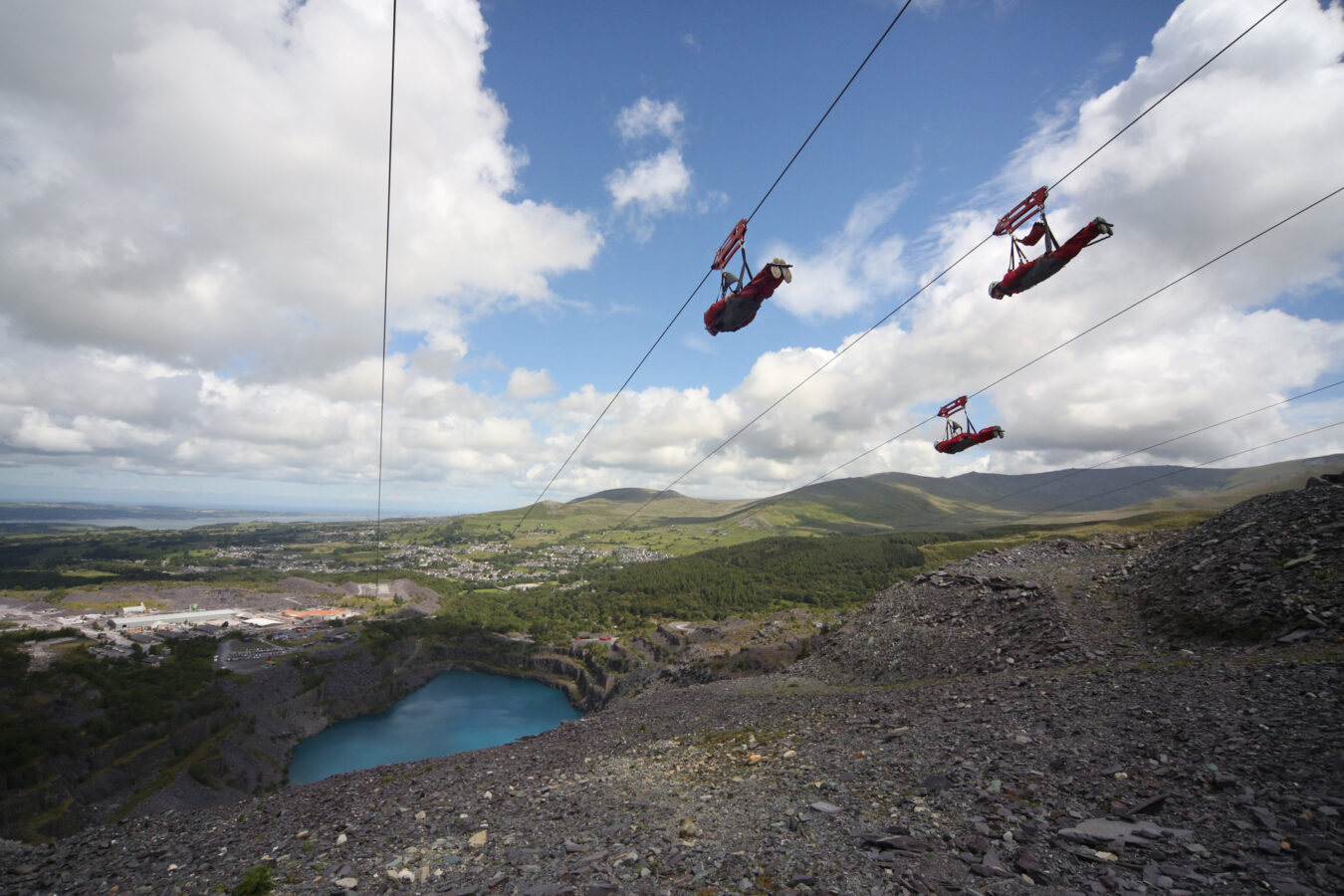
See Zip World Penrhyn Quarry on
Google Maps | Apple Maps
An ex-army truck takes you to the top of the mountain, from where you’ll launch and travel for just over a mile. There are four parallel lines, meaning you can share this unforgettable adventure alongside family or friends. Before the main line, you’ll have the chance to try the short zip line, which helps you get a feel for what to expect. The entire experience is fully guided by professional instructors from start to finish. You can also pre-book a helmet-mounted camera to record your incredible flight.
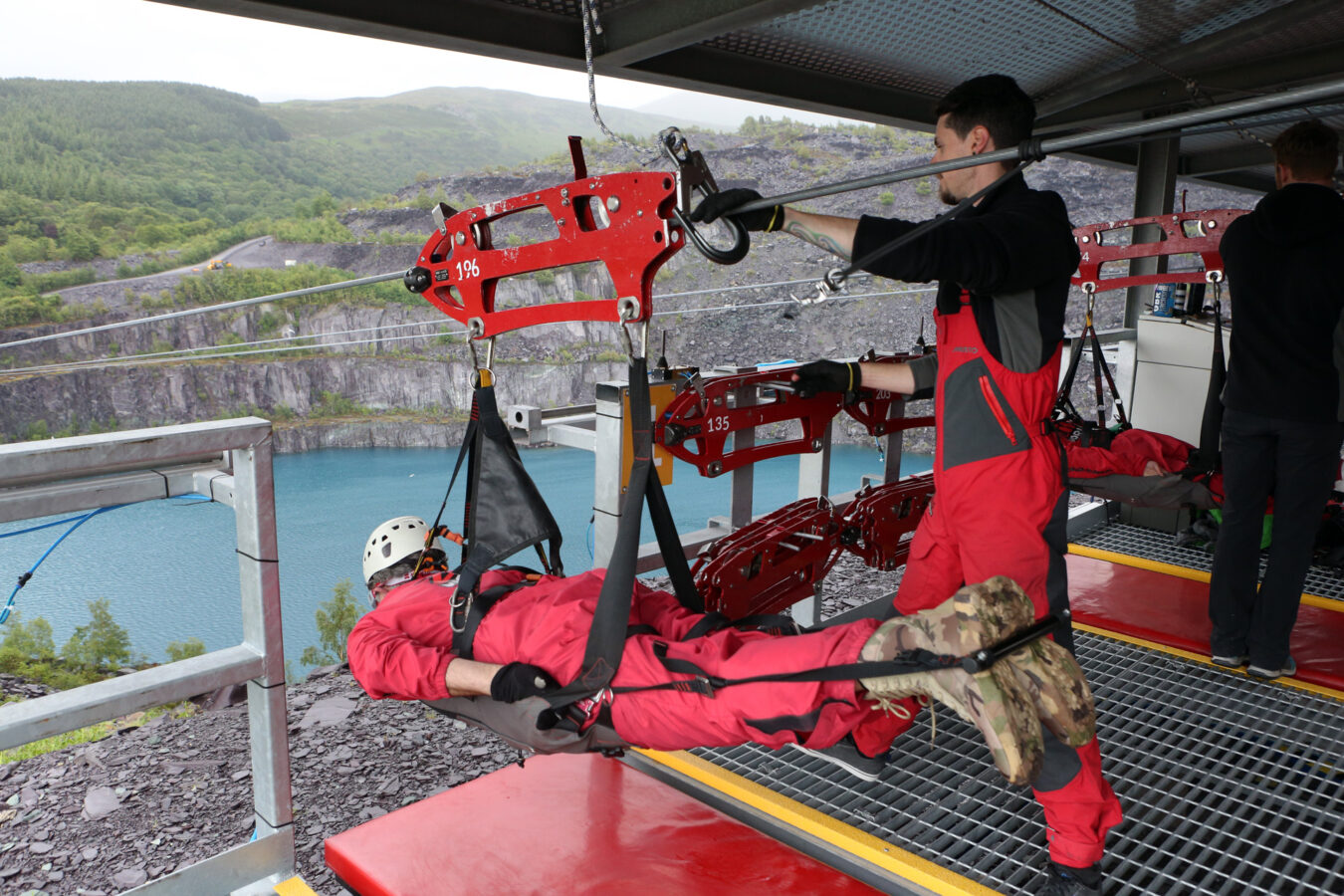
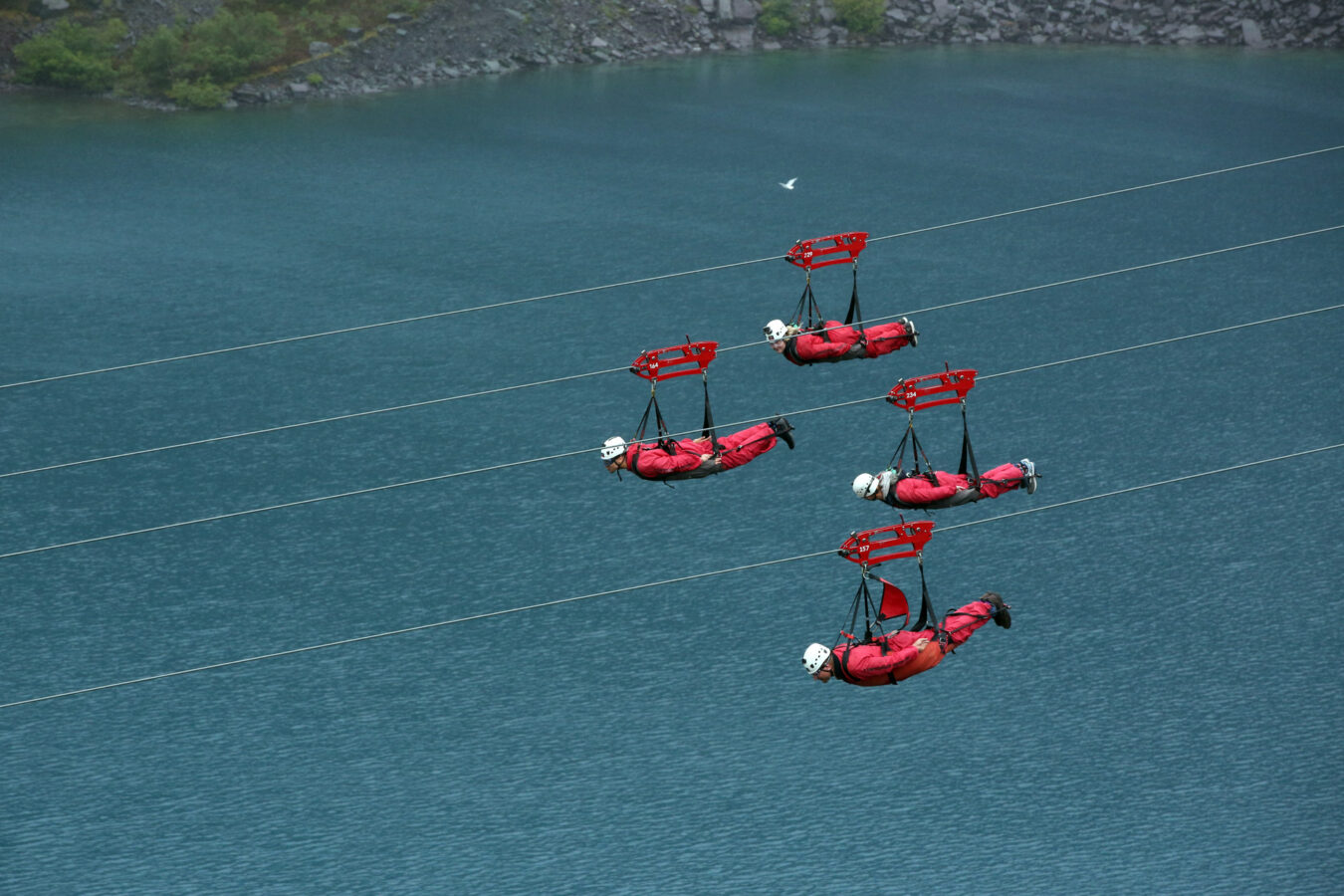
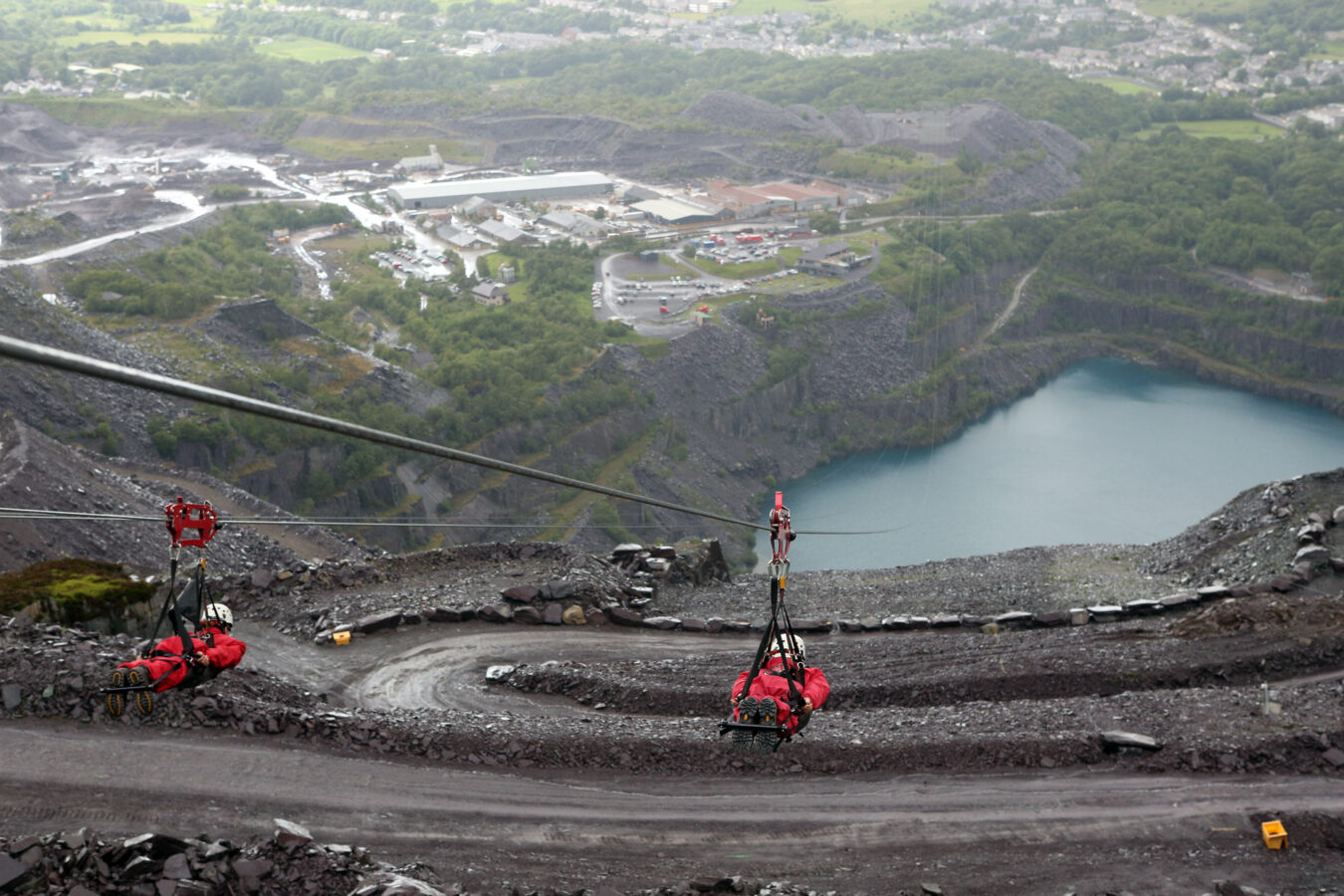
Other activities on site include Quarry Karts, guided historical tours, and dining at the Blondin Restaurant.
Prices start from £92, and booking is highly recommended. Please note there are restrictions relating to height, weight, and age. Full details can be found on the Zip World website.
Where To Stay and Eat Around Bangor
There is a decent selection of hotels in Bangor, such as the Management Centre, an Edwardian building that forms part of the university, as well as the Guest Rooms of Bangor University, which offer single rooms with shared kitchen facilities. More options are also available on platforms such as Airbnb.
One small piece of advice: try not to book a room or apartment directly above a pub, especially at the weekend, as you might be disturbed by noise and chatter while people enjoy a few pints on a Friday night.
As for places to eat, I had a good lunch on the high street downtown at Bwydd Dda, and an excellent pizza at WoodFired Shack. There is also a highly rated Italian restaurant by the pier called Torna a Surriento. And of course, being a city, Bangor has plenty of pubs and familiar chains such as Wetherspoon.
Extra Information
Bangor is well served by both rail and bus services. The North Wales Coast Line and the North Wales–South Wales service connect the city to Holyhead in the west, and to popular destinations along the north coast such as Conwy, Llandudno, Abergele, Rhyl, Prestatyn, and all the way to Chester in England. You can also take direct trains to Shrewsbury in the east and to Cardiff, the Welsh capital, in the south. There are also direct connections to Manchester and Manchester Airport.
Regular bus services run to Caernarfon, Porthmadog, and many destinations within the northern part of Eryri (Snowdonia) National Park, including popular starting points for climbing Yr Wyddfa (Snowdon). There are also plenty of local taxi services operating in the area.
Additional read:
There are numerous car parks in Bangor, although some are small or limited to short stays, so it’s worth checking the details depending on how long you plan to park. Parking by the pier is one of the cheapest options and is valid all day (but not overnight).
You’ll also find plenty of electric vehicle charging stations around the city, though most are standard 7kW chargers. Faster charging points are available at the Morrisons car park (G Maps).

